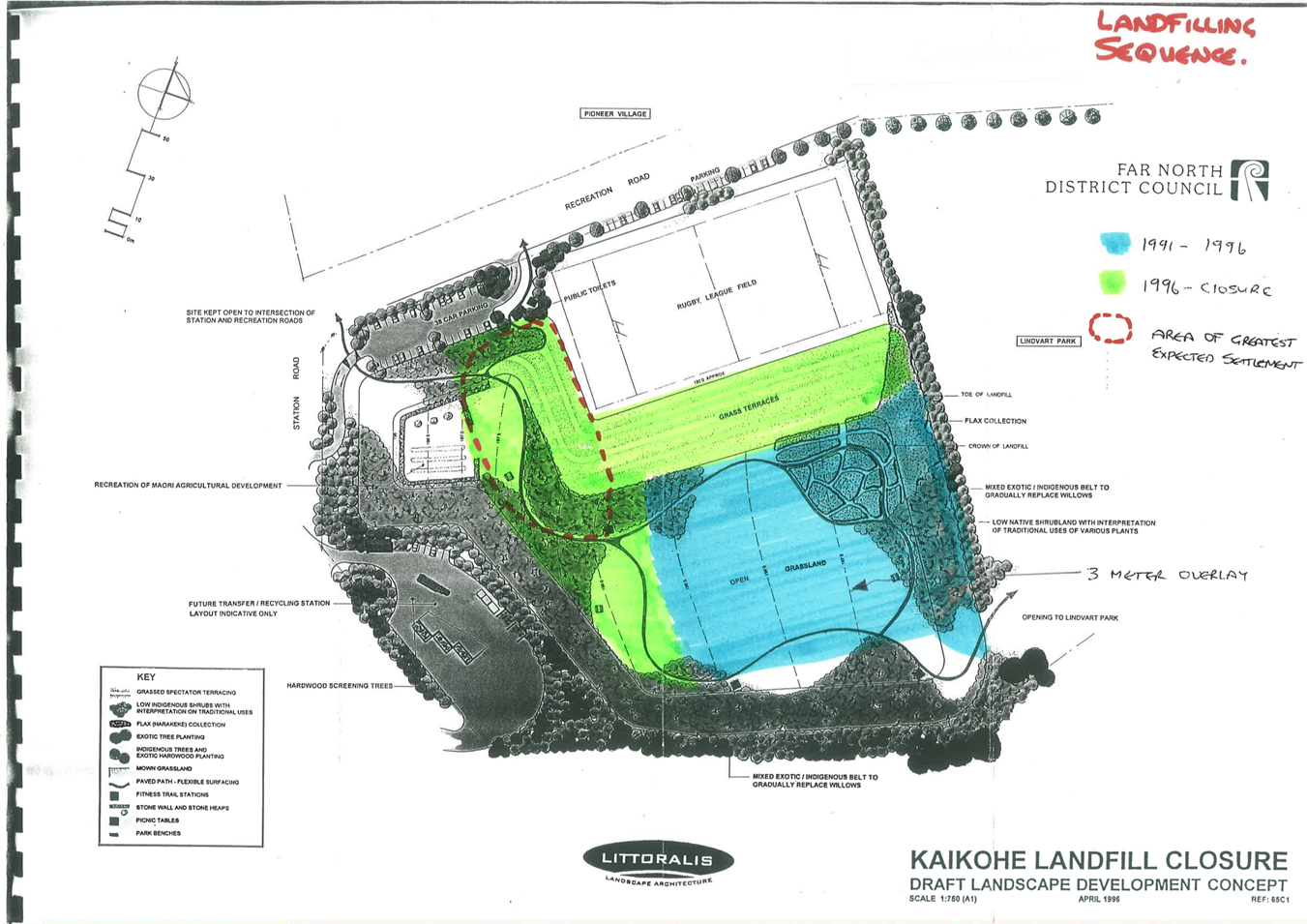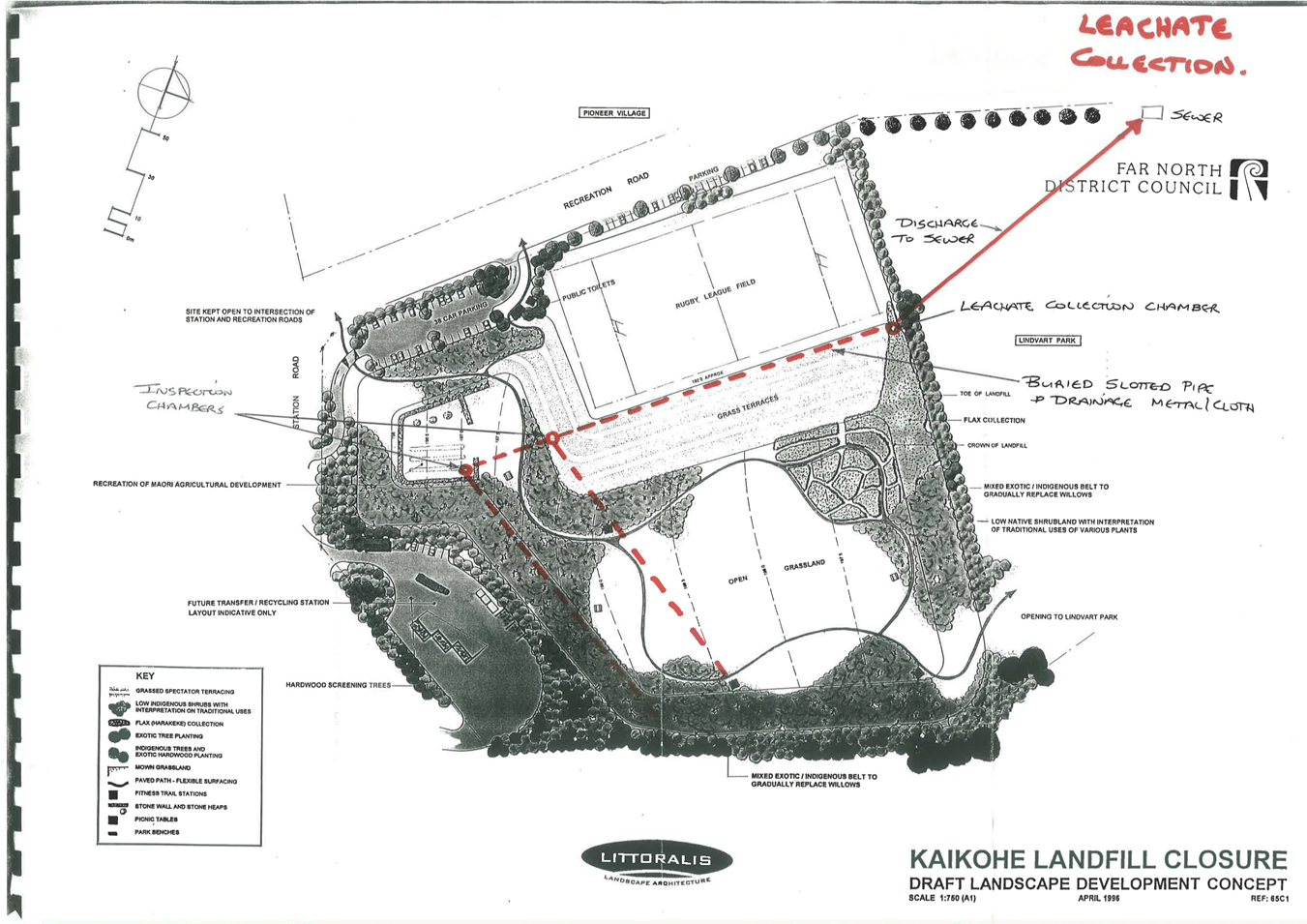AGENDA

Friday, 21 February 2025
|
Time:
|
10:00 AM
|
|
Location:
|
Council Chamber
Memorial Avenue
Kaikohe
|
Membership:
Chairperson Chicky Rudkin
Deputy Chairperson Tanya Filia
Councillor John Vujcich
Member Mike Edmonds
Member Trinity Edwards
Member Harmonie Gundry
Member Jessie McVeagh
|
Kaikohe-Hokianga Community Board Meeting Agenda
|
21 February
2025
|
The Local Government Act 2002 states the role of a
Community Board is to:-
A.
Represent, and act as an advocate for,
the interests of its community.
B.
Consider and report on all matters
referred to it by the territorial authority, or any matter of interest or
concern to the community board.
C.
Maintain an overview of services
provided by the territorial authority within the community.
D.
Prepare an annual submission to the
territorial authority for expenditure within the community.
E.
Communicate with community
organisations and special interest groups within the community.
F.
Undertake any other responsibilities
that are delegated to it by the territorial authority
Council Delegations to Community Boards - January
2013
The "civic amenities" referred to in these
delegations include the following Council activities:
·
Amenity lighting
·
Cemeteries
·
Drainage (does not include reticulated
storm water systems)
·
Footpaths/cycle ways and walkways.
·
Public toilets
·
Reserves
·
Halls
·
Swimming pools
·
Town litter
·
Town beautification and maintenance
·
Street furniture including public
information signage.
·
Street/public Art.
·
Trees on Council land
·
Off road public car parks.
·
Lindvart Park – a
Kaikohe-Hokianga Community Board civic amenity.
Exclusions: From
time to time Council may consider some activities and assets as having district
wide significance and these will remain the responsibility of Council. These
currently include: The roading network, Hundertwasser toilets, District Library
Network, Baysport, the Kerikeri, Kaikohe & Kaitaia Airports, Hokianga
Vehicle Ferry, i-Site network, Far North Community Centre, Kerikeri Domain,
Kawakawa Heated Swimming Pool, Kaikohe Cemetery, Kerikeri Sports Complex, The
Centre at Kerikeri, the Bay of Islands/Hokianga Cycle Trail.
Set local priorities for minor capital works in accordance
with existing strategies,
1.
Recommend local service levels and
asset development priorities for civic amenities as part of the Annual Plan and
Long Term Plan processes.
2.
Reallocate capital budgets within the
Annual Plan of up to 5% for any specific civic amenity, provided that the
overall activity budgetary targets are met.
3.
Make grants from the allocated
Community Funds in accordance with policy 3209, and the SPARC/Sport Northland
Rural Travel fund in accordance with the criteria set by the respective body,
and, for the Bay of Islands-Whangaroa Community Board, the power to allocate
the Hundertwasser Donations Account.
4.
Provide comment to council staff on
resource consent applications having significance within the Community,
including the provision of land for reserves or other public purposes.
5.
To hold, or participate in hearings, as
the Council considers appropriate, in relation to submissions pertinent to
their community made to plans and strategies including the Long Term Plan and
Annual Plan, and if appropriate recommend decisions to the Council.
6.
To hold hearings of submissions
received as a result of Special Consultative Procedures carried out in respect
of any matter other than an Annual or Long Term Plan, and make recommendations
to the Council.
7.
Where recommended by staff to appoint
management committees for local reserves, cemeteries, halls, and community
centers.
8.
To allocate names for previously
unnamed local roads, reserves and other community facilities, and recommend to
Council name changes of previously named roads, reserves, and community
facilities subject to consultation with the community.
9.
To consider the provisions of new and
reviewed reserve management plans for recommendation to the Council in
accordance with the Reserves Act 1977, and hear or participate in the hearing
of submissions thereto, as considered appropriate by the Council.
10.
To provide recommendations to the
Council in respect of applications for the use and/or lease of reserves not
contemplated by an existing reserve management plan.
11.
Prohibit the use of skateboards in
specified locations within their communities, in accordance with
Council’s Skating Bylaw 1998.
12.
Recommend new bylaws or amendments to
existing bylaws.
13.
Prepare and review management plans for
local cemeteries within budget parameters and in a manner consistent with
Council Policy.
14.
Exercise the following powers in
respect of the Council bylaws within their community:
a)
Control of Use of Public Spaces –
Dispensations on signs
b)
Mobile Shops and Hawkers –
Recommend places where mobile shops and/or hawkers should not be permitted.
c)
Parking and Traffic Control –
Recommend parking restrictions, and areas where complying camping vehicles may
park, and consider and grant dispensations in accordance with clause 2007.2
d)
Public Places Liquor Control –
Recommend times and places where the possession or drinking of alcohol should
be prohibited.
e)
Speed Limits – Recommend places
and speed limits which should be imposed.
15.
To appoint Community Board members to
speak on behalf of their community in respect of submissions or petitions.
16.
Specific to the Bay of
Islands-Whangaroa Community Board – consider any recommendations of the
Paihia Heritage Working Group and make appropriate recommendations to Council
on the development of a draft Plan Change and a Section 32 analysis on heritage
provisions for Paihia.
17.
To set schedule of meeting dates, times
and venues, subject to the meetings not conflicting with meetings of the
Council and satisfying the provisions of the Local Government Official
information and Meetings Act 1987.
18.
To review all proposed public art
projects on a project-by project basis to ensure they comply with policy #5105
Art in Public Places, including approval of the aesthetic appearance,
maintenance programme, insurance and appropriate location, and to agree to
their installation.
19.
In respect of applications from food
establishments for permission to establish tables and chairs on a public place,
i.e. Alfresco dining in accordance with Policy 3116, to consider and decide on
any application which does not meet all criteria of the policy, and any
application which staff recommend to be declined.
20.
Subject to a report from the
appropriate managers and the appropriate budgetary provision, to make decisions
in respect of civic amenities including the levels of service, and the
provision or removal of an amenity not provided for elsewhere in these delegations.
Terms of Reference
In fulfilling its role and giving effect to its
delegations, Community Boards are expected to:
1.
Comment on adverse performance to the
Chief Executive in respect of service delivery.
2.
Assist their communities in the
development of structure plans, emergency management community response plans,
and community development plans.
3.
Assist their communities to set
priorities for Pride of Place programmes.
4.
Have special regard for the views of Māori.
5.
Have special regard for the views of
special interest groups, e.g. disabled, youth, aged, etc.
6.
Actively participate in community
consultation and advocacy and keep Council informed on local issues.
7.
Seek and report to Council community
feedback on current issues by:
a)
Holding a Community forum prior to
Board meetings
b)
Varying the venues of Board meetings to
enable access by members of the community
8.
Monitor and make recommendations to
Council to improve effectiveness of policy.
9.
Appoint a member to receive Annual
Plan\Long Term Council Community Plan submissions pertinent to the Board area,
attend hearings within the Board area, and attend Council deliberations prior
to the Plan adoption.
Protocols
In supporting Community Boards to fulfil their role, the
Council will:
1.
Provide appropriate management support
for the Boards.
2.
Organise and host regular workshops
with the Community Boards l to assess the 'State of the Wards & District'
to establish spending priorities.
3.
Prior to decision-making, seek and
include 'Community Board views' in Council reports in relation to:
a)
the disposal and purchase of land
b)
proposals to acquire or dispose of
reserves
c)
representation reviews
d)
development of new maritime facilities
e)
community development plans and
structure plans
f)
removal and protection of trees
g)
local economic development initiatives
h)
changes to the Resource Management Plan
4.
Organise and host quarterly meetings
between Boards, the CEO and senior management staff.
5.
Prepare an induction/familiarisation
process targeting new members in particular early in the term.
6.
Support Board members to arrange
meetings with local agencies and service clubs to place more emphasis on
partnerships and raising profile of the Boards as community leaders.
7.
Permit Board chairperson (or nominated
member) speaking rights at Council meetings.
8.
Help Boards to implement local
community projects.
9.
Arrange for Infrastructure and Asset
Management Staff to meet with the Community Boards in September each year to
agree the capital works for the forthcoming year for input into the Annual or
Long Term Plan.
10. Provide information.
Far North District Council
Kaikohe-Hokianga Community Board Meeting
will be held in the Council Chamber, Memorial Avenue,
Kaikohe on:
Friday 21 February 2025 at 10:00
AM
Te Paeroa Mahi / Order
of Business
1 Karakia
Tīmatanga / Opening Prayer. 6
2 Ngā
Whakapāha Me Ngā Pānga Mema / Apologies and Conflicts of
Interest 6
3 Te
Wāhanga Tūmatanui / Public Forum.. 6
4 Ngā
Tono Kōrero / Deputation. 6
5 Ngā
Kaikōrero / Speakers. 6
6 Te
Whakaaetanga o Ngā Meneti o Mua / Confirmation of Previous Minutes. 7
6.1 Confirmation
of Previous Minutes. 7
7 Ngā
Pūrongo / Reports. 17
7.1 Recommendation
for Vesting of Recreation Reserve. 17
7.2 Amenity
Lighting Priorities. 25
7.3 Ground
lease requests over Kaikohe landfill 35
7.4 New
Ground Lease to Kohukohu Bowling Club Incorporated over 22 Beach Road, Kohukohu. 67
7.5 Funding
Applications. 73
7.6 Project
Funding Reports. 132
7.7 New
Road Name: 12-16 Mangakahia Road, Kaikohe. 163
7.8 Chairperson
and Members Reports. 167
8 Ngā
Pūrongo Taipitopito / Information Reports. 175
8.1 Kohukohu
Speed Limits Update. 175
8.2 Condition
Assessment Summary for Council Halls. 177
8.3 Hokianga
Ferry Liaison Group Meeting 1st November 2024. 181
8.4 Kaikohe-Hokianga
Community Board February Open Resolution Report 187
9 Te
Wāhanga Tūmataiti / Public Excluded. 190
9.1 Removal
and Appointment of Cemetery Trustees - Waiotemarama Cemetery. 190
10 Karakia
Whakamutunga / Closing Prayer. 191
11 Te
Kapinga Hui / Meeting Close. 191
1 Karakia
Tīmatanga / Opening Prayer
Pou hihiri.
Pou rarama.
Pou te whakairo.
Pou te tangata.
Pou o te aroha.
Te pou e here nei i ā tatou Mauri ora ki ā
tātou
Haumi e. Hui e. Tāiki e!
2 Ngā Whakapāha Me Ngā Pānga Mema / Apologies
and Conflicts of Interest
Members need to
stand aside from decision-making when a conflict arises between their role as a
Member of the Community Board and any private or other external interest they
might have. This note is provided as a reminder to Members to review the
matters on the agenda and assess and identify where they may have a pecuniary
or other conflict of interest, or where there may be a perception of a conflict
of interest.
If a Member
feels they do have a conflict of interest, they should publicly declare that at
the start of the meeting or of the relevant item of business and refrain from
participating in the discussion or voting on that item. If a Member thinks they
may have a conflict of interest, they can seek advice from the Chief Executive
Officer or the Manager - Democracy Services (preferably before the meeting).
It is noted
that while members can seek advice the final decision as to whether a conflict
exists rests with the member.
Elected
Member - Register of Interests
3 Te
Wāhanga Tūmatanui / Public Forum
To be determined on the day.
4 Ngā Tono Kōrero / Deputation
No requests for deputations were received at the time of the
Agenda going to print.
5 Ngā
Kaikōrero / Speakers
·
Representative from Te Roopu Kaumatua Kuia o Te Whare Tapu o
Ngapuhi in regard to agenda item 7.5 page 86 refers.
·
Alison Black representing Youthline Auckland Charitable Trust in
regard to agenda item 7.5 page 92 refers.
·
Tracey Albert representing Ōhaeawai Residents and Ratepayers
in regard to agenda item 7.5 page 118 refers.
·
Shane Watts representing One Life Production i n regard to agenda
item 7.5 page 112 refers.
6 Te
Whakaaetanga o Ngā Meneti o Mua / Confirmation of Previous Minutes
6.1 Confirmation
of Previous Minutes
File
Number: A4536127
Author: Imrie
Dunn, Democracy Advisor
Authoriser: Aisha
Huriwai, Manager - Democracy Services
Purpose of the Report
The minutes are attached to allow the Kaikohe-Hokianga
Community Board to confirm that the minutes are a true and correct record of
the previous meeting.
|
Recommendation
That the
Kaikohe-Hokianga Community Board confirm the minutes of the meeting held 22
November and 4 December 2024 as a true and correct record.
|
1) Background
Local Government Act 2002 Schedule 7 clause 28 states that a
local authority must keep minutes of its proceedings. The minutes of
these proceedings duly entered and authenticated as prescribed by a local authority
are prima facie evidence of those meetings.
2) Discussion and Options
The unconfirmed minutes of the meeting are attached.
The Kaikohe-Hokianga Community Board Standing Orders Section
3.17.3 states that “no discussion may arise on the substance of the
minutes at any succeeding meeting, except as to their correctness”.
Reason
for the recommendation
The reason for the recommendation is to confirm the minutes
as a true and correct record of the previous meeting.
3) Financial Implications and Budgetary
Provision
There are no financial implications or the need for
budgetary provision.
Attachments
1. 2024-11-22
Kaikohe-Hokianga Community Board Minutes - A4979369 ⇩ 
2. 2024-12-04
Kaikohe-Hokianga Community Board Minutes - A5006787 ⇩ 
|
Kaikohe-Hokianga
Community Board Meeting Agenda
|
21 February
2025
|







|
Kaikohe-Hokianga
Community Board Meeting Agenda
|
21 February
2025
|


7 Ngā
Pūrongo / Reports
7.1 Recommendation
for Vesting of Recreation Reserve
File
Number: A5046674
Author: Robin
Rawson, Parks & Reserves Planner
Authoriser: Angie
Thomas, Acting Chief Financial Officer
Take Pūrongo / Purpose of the Report
This report seeks a recommendation from the Kaikohe-Hokianga
Community Board to Far North District Council for agreement to vest a
recreation reserve and a local purpose (esplanade) reserve in Kaikohe.
WhakarĀpopoto matua / Executive Summary
· Resource consent for a 90 lot residential development within the
northern edge of Kaikohe town being processed by Council proposes that a
recreation reserve and a local purpose (esplanade) reserve are both vested with
Council.
· The proposed recreation reserve would create a suitable
neighbourhood park for future residents of this subdivision and the wider
Kaikohe area.
· Both the proposed recreation reserve and proposed local purpose
(esplanade) reserve would improve the amenity of the development and planted
areas would support conservation and green space values.
· A recommendation to vest these reserves is assessed as being
consistent with Council’s Mission and Values, Parks and Reserves Policy,
District Plans and relevant legislation
· The decision to vest parks other than esplanade reserves sits with
Council.
· Due to the esplanade reserve width (2.5 times more than the standard
20m), Council approval is being sought for that reserve.
|
tŪtohunga
/ Recommendation
That the Kaikohe-Hokianga Community Board
recommend to Council that:
a) Proposed
Lot 93 of 2250013-RMACOM is vested with Council as a recreation reserve
b) Proposed
Lot 400 of 2250013-RMACOM is vested with Council as a local purpose
(esplanade) reserve.
|
1) TĀhuhu kŌrero / Background
An application has been received by Council for a
residential subdivision in Kaikohe to create 90 residential sites,
(RMACOM-2250013). This is a joint development by Kainga
ora and Te Hau Ora Ō Ngāpuhi. The proposed
subdivision layout (refer Appendix 1) includes a recreation reserve designed as
a village green, (Lot 93) and a local purpose (esplanade) reserve with an
irregular shape adjoining the Mangamutu River, (Lot 400). The Applicant
proposes that both these reserves would be vested at no cost to Council after
full development including planting and path construction. The shape of
the local purpose (esplanade) reserve (Lot 400) may be amended further to
engineering requirements and resource consent processes. This will be
managed through the resource consent process.
Both the District Plan and the Parks and Reserves Policy
direct that local purpose (esplanade) reserves are vested so Council approval
is not normally needed, however Council approval is required to vest any
recreation reserves. In this instance the proposed local purpose
(esplanade) reserve is an irregular shape that extends to a width greater or
less than 20m, and the area equates to a width approximately 2.5 times the 20m
width anticipated by the District Plans and Parks and Reserves Policy, therefore
Council approval to vest is being sought.
Council delegations to Community Boards include comment on
resource consent applications having significance within the Community,
including the provision of land for reserves or other public purposes.
The Recreation Aotearoa Parks Categories Framework defines a
neighbourhood park as follows:
A developed urban park designed
for use predominantly by the local residential community, although the
catchment may be wider. Generally smaller in size, ranging from 1,000m2
up to 2 hectares. The average useful size is considered to be from 3,000 to
5,000m2.
The Neighbourhood Park should
be easily accessible, ideally from more than one road frontage. It will be well
maintained and free draining with flat or gently undulating grassed areas for
play. The park should be safe and provide an attractive welcoming ambiance to
the immediate local community (within a ten minute walking distance or 500
metre radius of urban residential properties).
Neighbourhood Parks may provide
an open grass area suitable for small scale ball play, children’s play
equipment, youth recreation facilities e.g. basketball half courts, seating,
amenity lighting, paths and attractive amenity planting. [1]
The proposed residential lot sizes will range between 148m2
and 604m2. 59 of 90 residential sites are less than the
anticipated 300m2 minimum site area for residential development and
at a density of 40 houses per hectare this development is considered to be
medium density. Residents of medium density houses have greater reliance
on streets and parks to meet recreational and activity needs.
Parks and green open space are widely recognised as
delivering positive health, social and environmental outcomes for all
population groups, and parks and other green spaces are linked to higher
property values and other advantages including improved quality of life and
environmental benefits.
Maintenance costs for the reserve are being calculated and
will be presented to Council, as this information has not been available at the
time of writing this report. If possible this information will be provided at
the Community Board meeting.
2) matapaki me NgĀ KŌwhiringa /
Discussion and Options
Council’s Parks and Reserves Policy directs that
decisions on parks acquisition by Council are based on the following 5
criteria:
1. Will the acquisition fulfil the Council’s
objectives, policies, strategies, and plans?
Possible acquisition is being assessed against the criteria
in the Parks and Reserves Policy.
The Open Space Strategy is under development, and this
assessment is consistent with proposed open space categories. The
proposed recreation reserve is assessed as having a neighbourhood park
function, and the proposed esplanade reserve would form part of a blue-green
network.
2. Will the acquisition provide connectivity between
existing parks and reserves, neighbourhoods, water bodies and existing open
space public lands?
The proposed esplanade reserve would provide access down the
side of the Mangamutu River. There may be future esplanade reserve
connections when residential zoned land to the west is developed, however most
of the length of the river is within land zoned rural where subdivision
creating lots of less than 4 hectares is less likely. Vesting of a width
of 20m adjoining the stream is anticipated by the Resource Management Act 1991
and the Operative and Proposed District Plan.
3. Does Council have available budget to acquire the land
and maintain the land?
Reserves would be vested without cost, and resource consent
maintenance conditions would mean that planted areas of the esplanade reserve
would not require scheduled maintenance. Annual maintenance cost
estimates for mowing and garden maintenance of both the recreation reserve and
esplanade reserve will be included in the report to Council for a
decision.
If Council elected members do not agree to vesting of land
at no cost through the resource consent process the purchase of land for
recreation purposes may need to be considered in the future.
Proposed development of the Recreation Reserve also includes
mounding and planting areas to include orchard and rongoa species.
Planting as proposed is generally supported by District Facilities and
Operations staff, however Council may need to make amendments to the design
over time, for example if the mounding proves difficult to maintain, and
substitution of any plants that fail.
4. The land must have physical and legal access, be
accessible for the public, will not generate foreseeable public safety
concerns, and be of a suitable size and scale to meet the Council’s
requirements.
The recreation reserve has two road boundaries and a
boundary with a jointly owned access lot (JOAL) and has very good surveillance
from adjoining roads. Most of the area is taken up with flat lawn areas
which are suitable for recreation activities, and with this configuration, the
area of 2412m2 is assessed as being suitable for a neighbourhood
park when assessed using the Recreation Aotearoa framework above and metrics
that are commonly used by other Councils.
The esplanade reserve has areas of lawn with sightlines
through vacant sites with wide road frontage. If future planning of the
vacant sites does not support ideal surveillance outcomes for public open
space, lawn areas may need to be planted to reduce public use.
5. Does the land meet passive or active recreational
requirements, or the protection of environmental landscapes, cultural
landscapes, features, and habitats?
Appendix 2 shows that the development site and future houses
would be further than a 600m walk from the closest neighbourhood park, (Reed
Park) and that vesting of a recreation reserve as proposed would improve the
amenity and recreation opportunities for future residents within walking
distance of the proposed neighbourhood park. Without provision of a
neighbourhood park, residents will be located in a parks deficient area with
fewer opportunities to meet recreation and social needs.
The proposed esplanade reserve would not meet recreation
needs to the same extent as it does not provide areas ideal for recreation and
gathering, however it would include planted areas that would assist in
maintaining the water quality of the Mangamutu River, protection of an existing
wetland, and conservation and green space values in general, and would provide
opportunities for walking recreation. In addition, the proposed esplanade
reserve would provide a green backdrop and improved amenity to a development
where small lot sizes will mean there are few opportunities for trees to be
planted within residential sites.
Other
District Facilities and Operations staff have commented that
while proposed development is generally suitable, bollards around the edge of
the recreation reserve and road frontages of the local purpose (esplanade)
reserve are needed to prevent car access and other minor changes are needed,
and a resource consent condition has been recommended that a landscape plan is
provided for approval by the Parks and Recreation Planner that covers these
matters. The applicant will be required to implement the approved landscape
plan at their cost.
The esplanade reserve extends beyond a width of 20 metres,
however given the slope of the land and intended planting, this is a suitable
classification for these areas of land, as the primary functions would be
conservation and access. A public access point to the reserve is created
by a (public) pedestrian access easement over Lot 201 (JOAL) and this is
strongly supported to provide an additional access point allowing circulation
through the reserve. Maintenance access through this area by Council has
also been requested.
Vesting of these reserves is consistent with Council’s
Mission: Creating great places, supporting our people, and the following
values; Kaitiakitanga - Environmental stewardship and sustainability,
Whanaungatanga - Family, community, connecting and sharing. The
recommendation in this report is consistent with Council’s Parks and
Reserves Policy, Local Government Act 2002 and the Resource Management Act.
TAKE TŪTOHUNGA
/ REASON FOR THE RECOMMENDATION
Vesting of the proposed recreation reserve would provide
future residents of this subdivision and nearby houses with a very suitable
neighbourhood park that would increase recreation and social opportunities and
would improve the amenity of the surrounding proposed residential
development. Vesting of this recreation reserve to function as a
neighbourhood park would be consistent with accepted parks and recreation
planning practice.
The proposed local purpose (esplanade) reserve would also
improve the amenity of the development and planted areas would assist in
maintaining the water quality of the Mangamutu River, would protect an existing
wetland, and would support conservation and green space values in general.
A recommendation to vest these reserves is consistent with
Council’s Mission and Values, Parks and Reserves Policy as well as
relevant legislation.
3) PĀnga PŪtea me ngĀ
wĀhanga tahua / Financial Implications and Budgetary Provision
Costs to create the reserve and install the bollards and
planting detailed in the report will be the responsibility of the applicant as
part of any resource consent conditions. The expected annual maintenance costs
for the reserves are as follows:
· Recreation
Reserve (site area: 2,412m²) – $5,100.00 per annum
(excluding GST).
· Local
Purpose Esplanade Reserve (site area: approximately 1 hectare) – $12,000.00
per annum (excluding GST).
These costs represent the anticipated ongoing financial
commitment required for the upkeep of the respective reserves.
Āpitihanga
/ Attachments
1. Appendix
1 - Reserve vesting Kaikohe - A5053531 ⇩ 
2. Appendix
2 - Neighbourhood Parks Kaikohe - A5053815 ⇩ 
Hōtaka Take Ōkawa / Compliance Schedule:
Full consideration has been given to the provisions of the
Local Government Act 2002 S77 in relation to decision making, in particular:
1. A
Local authority must, in the course of the decision-making process,
a) Seek
to identify all reasonably practicable options for the achievement of the
objective of a decision; and
b) Assess
the options in terms of their advantages and disadvantages; and
c) If
any of the options identified under paragraph (a) involves a significant
decision in relation to land or a body of water, take into account the
relationship of Māori and their culture and traditions with their
ancestral land, water sites, waahi tapu, valued flora and fauna and other
taonga.
2. This
section is subject to Section 79 - Compliance with procedures in relation to
decisions.
|
He Take Ōkawa /
Compliance Requirement
|
Aromatawai Kaimahi /
Staff Assessment
|
|
State the level of significance (high or low) of the
issue or proposal as determined by the Council’s
Significance and Engagement Policy
|
Delegations under the Local Government Act 2002
specifically exclude ‘the power to borrow money, or purchase or dispose
of assets, other than in accordance with the long-term plan’, and the
open space network is identified as a strategic asset in Council’s
Significance and Engagement Plan. Parks are an accepted and expected
part of Council’s services by most people. Overall the proposal
has moderate significance to elected members and low significance to the
general public.
|
|
State the relevant Council policies (external or
internal), legislation, and/or community outcomes (as stated in the LTP) that
relate to this decision.
|
The recommendation in this report is consistent with
Council’s Parks and Reserves Policy, Local Government Act 2002 and the
Resource Management Act 1991.
|
|
State whether this issue or proposal has a District wide
relevance and, if not, the ways in which the appropriate Community
Board’s views have been sought.
|
A recommendation is requested from the Kaikohe Hokianga
Community Board in relation to the specifics of the proposed reserve to
inform Council elected members.
|
|
State the
possible implications for Māori and how Māori have been provided
with an opportunity to contribute to decision making if this decision is significant
and relates to land and/or any body of water.
State the
possible implications and how this report aligns with Te Tiriti o Waitangi /
The Treaty of Waitangi.
|
The decision to vest the reserves is not assessed as
having high significance. The subdivision is a joint development
between Kainga ora and Te Hau Ora Ō Ngāpuhi.
|
|
Identify persons likely to be affected by or have an
interest in the matter, and how you have given consideration to their views
or preferences (for example – youth, the aged and those with
disabilities).
|
This assessment is partly based on a Recreation Aotearoa
framework that is suitable for wide community use, and vesting of the parks
will provide social and recreation opportunities now and in the future.
|
|
State the financial implications and where budgetary
provisions have been made to support this decision.
|
Financial implications will be provided in the Council
report. Costs will only relate to maintenance.
|
|
Chief Financial Officer review.
|
The Chief Financial Officer has reviewed this report.
|
|
Kaikohe-Hokianga
Community Board Meeting Agenda
|
21 February
2025
|

|
Kaikohe-Hokianga
Community Board Meeting Agenda
|
21 February
2025
|
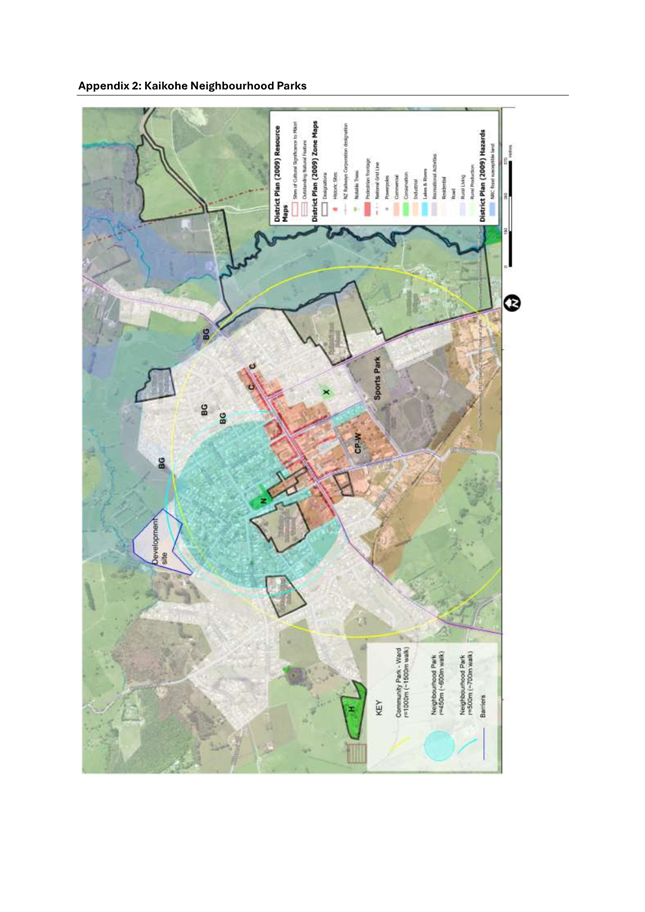
7.2 Amenity
Lighting Priorities
File
Number: A5008208
Author: Jeanette
England, Team Leader - Assets & Project Delivery
Authoriser: Tanya
Proctor, Head of Infrastructure
Take
Pūrongo / Purpose of the Report
To seek
approval from the Kaikohe-Hokianga Community Board for the prioritisation of
the Amenity Lighting installations over the next three years
(2024-2027).WhakarĀpopoto matua / Executive Summary
· Community Board to prioritise the lights for each of the locations
suggested over the next three-year period.
· Determine the viability of solar lighting as the preferred option.
· Locations provided by the Kaikohe-Hokianga Community Board for
pricing.
· Provision of lighting specifications for information.
|
tŪtohunga
/ Recommendation
That the Kaikohe-Hokianga Community Board
approve:
a) The
installation of the Amenity lights as
i) Priority
#1, Financial Year 2024/25 - Kaikohe Marino Court EV Charging Station
ii) Priority #2,
Financial Year 2025/26 - Ōmāpere Freese Park Playground
iii) Priority #3, Financial
Year 2026/27 – Ōpononi Fairlie Crescent/SH12 Walkway
b) the ongoing operational
expenditure of $1,500 per annum for each of the lights over the next three
years (2024/2027).
|
1)
TĀhuhu kŌrero / Background
The Community Board have an annual budget of $10,000 for new
amenity lights within the ward. This budget has traditionally been utilised as
part of other larger projects at parks and reserves within the ward.
There are no major parks and reserves projects over the next
three years due to the LITE LTP requirements. For staff to successfully install
new amenity lights within budget, the Community Board were asked to provide
suggested locations to enable accurate costings for each of the proposed
sights.
2) matapaki me
NgĀ KŌwhiringa / Discussion and Options
The Community Board provided a list of three locations for
the Kaikohe-Hokianga ward so staff could investigate and cost the options.
Staff engaged lighting company Leighton Electrical Ltd to
provide quotes for the new amenity lighting in the Kaikohe-Hokianga ward.
Mains vs Solar:
Installing 230V amenity lighting would not only be over the
allocated $10,000 budget per location but would also incur additional costs for
miscellaneous electrical gear. This includes cabling, connecting to an existing
metering system or installation of a new meter, installing circuit breakers,
and upgrading or integrating with the switchboard. On top of these material
costs, the required labour for such work would further escalate expenses,
making this approach financially impractical.
By comparison, LED solar lighting eliminates these
complications. It operates independently of the electrical grid, avoids costly
infrastructure and labour, and remains a budget-friendly, sustainable, and
maintenance-efficient solution. Solar lighting is the clear choice for keeping
the project on track and within budget.
Life of these lights is approximately 50,000 hours or 6 to
10 years, dependant on conditions, at an estimated cost of $3,500 for renewals.
Maintenance Program Suggestion:
For ongoing maintenance of the LED solar lighting, it is
suggested not engaging a specialist electrical company to keep costs to a
minimum.
The simplicity of maintaining solar lights means no
specialised skills or qualifications are required. Tasks like cleaning the
solar panel tops and pressing the on/off switch to verify functionality can be
performed by general personnel, further reducing expenses.
This cost-effective approach ensures the lights remain in
excellent working condition while keeping long-term operational costs as low as
possible. It’s a practical solution that aligns with the sustainable and
budget-friendly nature of the project.
Ongoing operational budget required would be approximately
$1,500 per annum per light. This would include the hire of a scissor lift,
labour and vehicle mileage.
Below is a table, for reference, outlining the work
required, approximate location within the identified site and costs for each of
the new Amenity Lights.
Pricings of each of the locations, show that the budget of
$10,000 per year will only enable the installation of one (1) light per year.
Also included below is the Lighting Specifications which
show the type and style of light to be installed for reference purposes.
Priority # 1 - Financial year 2024/2025
|
Location
|
Considerations per site
|
Cost
|
|
Kaikohe Marino Court beside EV charger, this is a high traffic,
high use location
|
Traffic Management Plan (TMP): Not required for this site.
Cable Location: A cable locator is required due to boring
holes for the pole foundations and installation.
This ensures underground services are identified and
avoids damage near the transformer.
Area Management: Leighton Electrical will handle coning
off the area to secure the worksite. The EV charger will be out of use for
one day during installation.
Installation Process: Solar light will be mounted on the
pole and tested before pole erection. Hole boring will be carried out safely,
considering identified utilities.
Challenges: Careful coordination with the cable locating
process to prevent interruptions or damage near the transformer. Effectively
managing public access and minimizing disruption during EV charger downtime.
|
$7,184
|
|
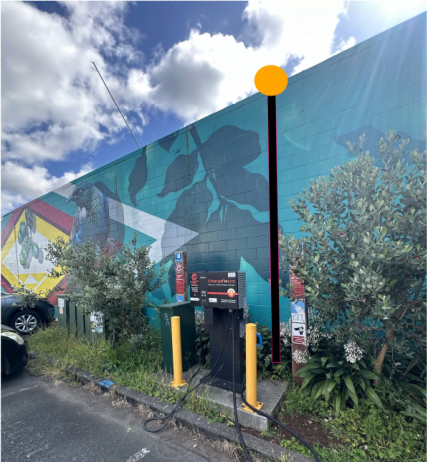
|
Priority # 2 - Financial Year 2025/2026
|
Location
|
Considerations per site
|
Cost
|
|
Ōmāpere Freese Park Playground, this site has no lighting in this
location which would also aid in lighting the carpark adjacent to the
playground.
|
Traffic Management Plan (TMP): Not required for this site.
Cable Location: Not required, as no underground utilities
are expected in the playground area.
Area Management: Leighton Electrical will cone off the
playground area to secure the worksite and ensure public safety.
Equipment Needed: Digger with auger attachment used for
boring holes for pole foundations and installation.
Installation Process: Solar light will be pre-mounted and
tested on the pole before it is erected.
Routine installation procedures will be followed, with
minimal disruption.
Challenges: Ensuring the work area is fully secured to
prevent unauthorized access during installation. Managing public awareness if
the playground is partially inaccessible during work.
|
$7,566
|
|
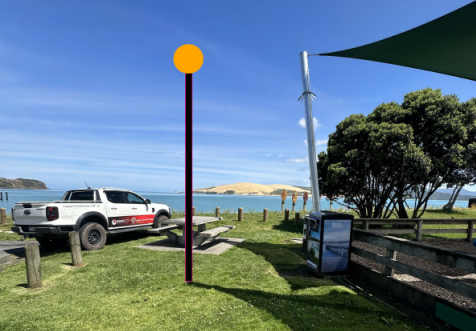
|
Priority #3 – Financial Year 2026/2027
|
Location
|
Considerations per site
|
Cost
|
|
Ōpononi
Walkway at the end of Fairlie Crescent to SH12,
this is a paper road and our Transport team have plans in progress to install
bollards and other measures to prevent vehicle access to this walkway. This
work will be completed this financial year, so an exact location can be
determined when due.
|
Traffic Management Plan (TMP): Not required for this site.
Cable Location: Cable locating will be performed in-house
by Leighton Electrical, ensuring safety during hole boring for the pole
foundations and installation.
Area Management: The worksite will be coned off to secure
the public walkway and ensure safety during installation.
Equipment Needed: Digger with auger attachment used for
boring holes for pole installation.
Installation Process: Solar light will be pre-mounted and
tested on the pole prior to erection. Standard procedures will be followed
for efficient and safe installation.
Challenges: Ensuring minimal disruption to public access
on the walkway during the installation process.
|
$7,566
|
|
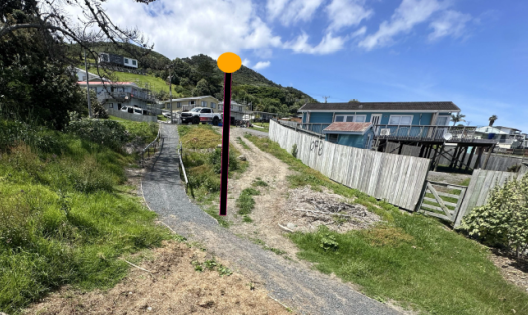
|
Lighting Specifications:
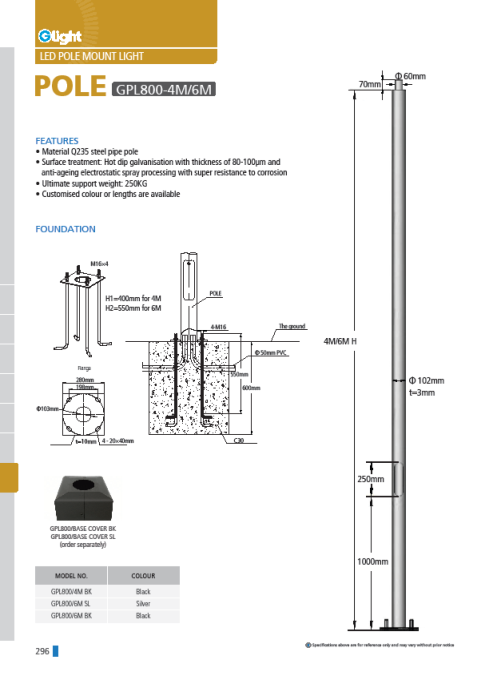
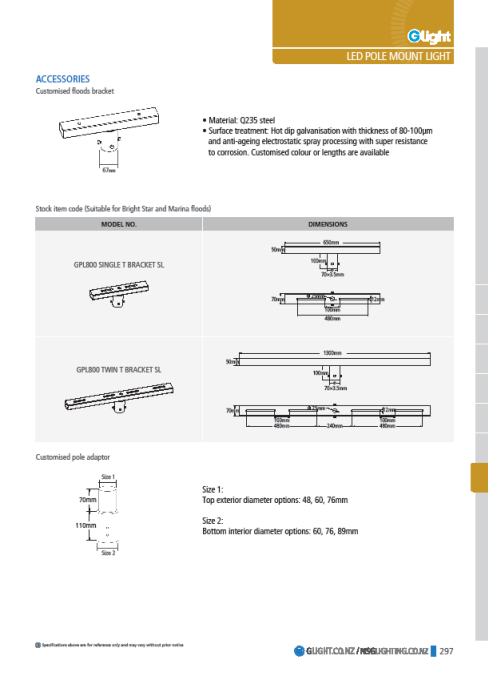
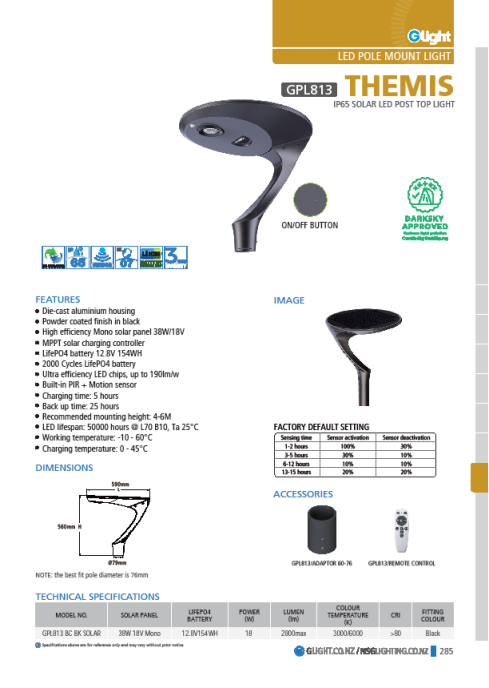
TAKE TŪTOHUNGA
/ REASON FOR THE RECOMMENDATION
The prioritisation of the lights is based on knowledge of
each of the sites and the best information available at the time of writing
this report. The locations are those, or as close as possible, suggested by the
Community Board.
3) PĀnga
PŪtea me ngĀ wĀhanga tahua / Financial Implications and
Budgetary Provision
There will be an ongoing increase to the operational budgets
of approximately $1,500 per annum per light.
Āpitihanga / Attachments
Nil
Hōtaka Take Ōkawa / Compliance Schedule:
Full consideration has been given to the provisions of the
Local Government Act 2002 S77 in relation to decision making, in particular:
1. A Local authority
must, in the course of the decision-making process,
a) Seek to identify all
reasonably practicable options for the achievement of the objective of a
decision; and
b) Assess the options in
terms of their advantages and disadvantages; and
c) If any of the options
identified under paragraph (a) involves a significant decision in relation to
land or a body of water, take into account the relationship of Māori and
their culture and traditions with their ancestral land, water sites, waahi tapu,
valued flora and fauna and other taonga.
2. This section is
subject to Section 79 - Compliance with procedures in relation to decisions.
|
He Take Ōkawa / Compliance
Requirement
|
Aromatawai Kaimahi / Staff
Assessment
|
|
State the level of significance (high or low) of the
issue or proposal as determined by the Council’s
Significance and Engagement Policy
|
This project has a relatively low degree of significance
as the Community Board have determined the locations as part of their
strategic plans which have already been consulted on with their
communities.
|
|
State the relevant Council policies (external or
internal), legislation, and/or community outcomes (as stated in the LTP) that
relate to this decision.
|
This project meets the community outcome of “Safe,
Healthy Communities”. By providing lighting in areas with little or no
lighting and aids in the safety of our communities.
|
|
State whether this issue or proposal has a District wide
relevance and, if not, the ways in which the appropriate Community
Board’s views have been sought.
|
This project has does not have a
district wide relevance as the Community Board have delegated authority for
Amenity Lights and they have determined the locations for these new lights.
|
|
State the
possible implications for Māori and how Māori have been provided
with an opportunity to contribute to decision making if this decision is
significant and relates to land and/or any body of water.
State the
possible implications and how this report aligns with Te Tiriti o Waitangi /
The Treaty of Waitangi.
|
The Community Board has provided the
locations of the lighting as part of their strategic plan which have had the
wider community input.
|
|
Identify persons likely to be affected by or have an
interest in the matter, and how you have given consideration to their views
or preferences (for example – youth, the aged and those with
disabilities).
|
Lighting as proposed will aid with
accessibility and visibility in the locations mentioned.
|
|
State the financial implications and where budgetary
provisions have been made to support this decision.
|
There are not significant changes to
the financial implications for this new light. Provision for an ongoing
operational budget has been included in the report.
|
|
Chief Financial Officer review.
|
The CFO has reviewed this report.
|
7.3 Ground
lease requests over Kaikohe landfill
File
Number: A4945860
Author: Michelle
Rockell, Team Leader - Property Management
Authoriser: Trent
Blakeman, Acting Group Manager - Delivery and Operations
Take Pūrongo / Purpose of the Report
To obtain recommendation from the Kaikohe – Hokianga
Community Board to deny the granting of any future ground lease over Part 3 and
4 DP 22327 Blk XV Omapere SD recreation reserve, under Sections 54 of the
Reserves Act 1977 being the Kaikohe landfill located at Recreation Road,
Kaikohe.
WhakarĀpopoto matua / Executive Summary
· The Kaikohe landfill located at Recreation Road, Kaikohe, operated
from prior 1950 to its closure in 1998.
· The Post Closure Care Management Plan 1997 outlines how the landfill
is to be managed once no longer operating.
· The Lindvart Park Reserve Management Plan states that the site is
suitable for informal recreation only.
· Risks associated with piercing the landfill cap include invisible
methane fires, asphyxiation and explosion.
· Far North District Council staff have received multiple lease
requests over the years and are now requesting final resolution over the
leasing of the landfill.
|
tŪtohunga
/ Recommendation
That the Kaikohe – Hokianga Community
Board recommend that Council deny all new ground lease requests over Part 3
and 4 DP 22327 Blk XV Omapere SD, located at Recreation Road, Kaikohe and
vested in Far North District Council as recreation reserve, known as the
Kaikohe Landfill, due to health and safety risks.
|
1) TĀhuhu kŌrero / Background
The Kaikohe landfill was in operation since prior to 1950,
servicing Kaikohe and a large portion of the wider Kaikohe-Hokianga ward,
including Kerikeri and Kawakawa.
On 25 November 1996 a resource consent was issued to Far
North District Council for the purpose to operate a refuse landfill in the
Papahawaiki Stream on Part 3 and 4 DP 22327 Blk XV Omapere SD, commonly known
as the Kaikohe Landfill located at Recreation Road, Kaikohe.
This resource consent allowed for the discharge of residual
leachate from landfill areas to ground and to discharge stormwater to the
Papahawaiki Stream subject to the following conditions:
· Landfill
operations were to be carried out in accordance with the Kaikohe Landfill
Management Plan and Assessment of Environmental Effects Revision 2 October
1996.
· All refuse shall
be disposed, compacted and covered at the end of each operational day. A final
cap of no less than 600mm of re-compacted clay with a permeability of less than
10-7 meters per second shall be constructed over the disposed refuse.
· Leachate from the
landfill shall be collected and pumped to Kaikohe sewerage reticulation system
for treatment and disposal.
· A Post Closure
Care Landfill Management Plan shall be submitted to the Northland Regional
Council by 31 December 1997, covering all aspects of closure care operations
and monitoring requirements. All operations and maintenance are to be carried
out in accordance with this plan.
This resource consent expired 31 August 1998, and the
landfill closed in beginning of 1998.
Over the years, various requests to lease the land have been
processed and denied by Far North District Council staff. Whilst these have been denied due to concerns regarding explosive gas
migration from within the cap and the piercing of the final cap of the landfill
by the placing of buildings upon the land, staff continue to receive
these requests.
2) matapaki me NgĀ KŌwhiringa /
Discussion and Options
The Post Closure Care Management Plan 1997 outlines how the
landfill is to be managed once no longer operating:
· A cap of no less
than 600mm of recompacted clay was placed on the landfill – this cap is a
near waterproof clay layer that prevents the ingress of water into the
landfill. Due to the thickness of the layer, no foundations can be placed or
specimen trees planted as this would compromise its stability. This is
particularly important on the flat area at the top of the landfill mound.
· The purpose of the
cap is to control and minimise water ingress, provide final contour and gas
control, allow plant growth and permit end use. The positive effect of the cap
is the reduction of leachate production but also slows down the breakdown of
materials within the landfill and cause the production of landfill gas to
continue for years to come. The integrity of the cap is key to ensuring minimal
leachate production post closure.
· Gas is produced in
the landfill as a result of biological decomposition, composing mainly of
methane and carbon dioxide but can contain other volatile organic compounds.
Should the cap be pierced, methane fires may occur that are not visible in
daylight and concentration of the gases may occur in manholes and chambers,
migrating through pipes and permeable soils, accumulating in poorly ventilated
areas and result in either asphyxiation or explosions.
Building over an old landfill is generally not advised due
to several significant risks:
Risk
to people and the environment
Some of
the risks that may affect the occupation of any proposed buildings in close
proximity of the landfill site are listed below;
1. Soil and Groundwater Contamination: Old landfills often contain hazardous substances like
heavy metals and toxic chemicals. These can leach into the soil and
groundwater, posing serious health risks to those using an old landfill for
activities or disturb the membrane seal placed on the landfill on
decommissioning.
2. Methane Gas Production:
As noted above, decomposing organic material in landfills produces
methane gas, which can accumulate and pose an explosion risk if not properly
managed. Other effects includes odour nuisance; migration in surrounding
sub-strata; and vegetation die-off on the completed landfill/fill surface and
on adjacent areas.
The Lindvart Park Reserve Management Plan states that only
low impact recreational activities should be carried out on the former landfill
site, which may include walking/cycling tracks, sculpture trail and pump tracks
for bicycles subject to sufficient demand and on the proviso that the integrity
of the landfill cap is maintained. It also states that fencing, lighting,
service trenches or other sculptures should be avoided penetrating the clay
cap.
As per Section 54 of the Reserves Act 1977, Council may from
time to time grant a lease over recreation reserves. Council is not obliged to
grant a lease where there is sufficient evidence provided not to.
Far North District Councils Climate Action Policy 2022
states that Council will reduce Green House Gas emissions though sustainable
business practices, in alignment with the government’s national emission
reduction targets or better. Approval of leases over this site is a direct
conflict of this Policy.
Option 1 (recommended)
That the Kaikohe – Hokianga Community Board recommend
that Council deny all new ground lease requests over Part 4 and 4 DP 22327 Blk
XV Omapere SD, located at Recreation Road, Kaikohe and vested in Far North
District Council as recreation reserve, known as the Kaikohe Landfill, due to
health and safety risks.
Option 2
That the Kaikohe – Hokianga Community Board allow new
lease requests over Part 4 and 4 DP 22327 Blk XV Omapere SD, located at
Recreation Road, Kaikohe and vested in Far North District Council as recreation
reserve, known as the Kaikohe Landfill.
This option is not recommended under any circumstances.
TAKE TŪTOHUNGA
/ REASON FOR THE RECOMMENDATION
Some of
the challenges in building on a landfill site includes;
1. Ground Instability
Landfills
are typically built on soft, unstable ground that can settle over time.
Landfills are also unstable due to decomposing waste. This can lead to
subsidence, causing damage to buildings and infrastructure.
For a
typical design the Building Code requires the ground conditions to meet the
definition of Good Ground, below is the definition;
The
standard defines ‘good ground’ as: “any soil or rock
capable of permanently withstanding an ultimate bearing capacity of 300kPa
(i.e. an allowable bearing pressure of 100kPa using a factor of safety of
3.0.), but excludes:
a) Potentially compressible ground such as top soil, soft
soils such as clay which can be moulded easily in the fingers, and uncompacted
loose gravel which contains obvious voids;
b) Expansive soils being those that have a liquid limit of
more than 50 % when tested in accordance with NZS 4402 Test 2.2, and a linear
shrinkage of more than 15 % when tested from the liquid limit in accordance
with NZS 4402 Test 2.6; and
c) Any ground which could foreseeably experience movement of
25 mm or greater for any reason including one or a combination of land
instability, ground creep, subsidence, seasonal swelling and shrinking,
frost heave, changing groundwater level, erosion, dissolution of soil in water,
and effects of tree roots.
The minimum
geotechnical ultimate bearing is required so that buildings are supported
adequately by the ground and do not undergo differential settlement during
their lifespan. Differential settlement is when part of a building sinks
more than another which can lead to uneven or cracked floors/walls.
The
landfill is unlikely to meet the definition of Good Ground and will therefore
require specific design and/significant ground improvements.
2. Construction Challenges
One of
the construction challenges will be to stabilize the land to meet the
definition of good ground or to improve the stability to allow for specific
design.
The
unstable nature of the ground requires specialized engineering techniques to
ensure the stability of any structures built on it. This can significantly
increase construction costs and complexity.
Specialised
Engineering techniques may be required, like specialised equipment for
compaction, to prevent subsidence. Other options will be to remove the waste
fill and replace it with Engineered fill; also at a high cost.
Ongoing
Monitoring requirements
Landfills
are subject to post-closure care requirements, which include monitoring and
maintenance to ensure long-term stability and environmental safety. Council
will therefore require access to the landfill area to meet their monitoring
requirements and ensure no adverse human or environmental harm is caused.
The Post Closure Care Management Plan for the landfill
clearly details the health and safety risks associated with leasing this site
and allowing construction of any structures that may pierce the cap.
The Lindvart Park Reserve Management Plan details that only
informal recreation activities should be carried out on the landfill.
As Far North District Council is aware of the risks
associated with piercing the cap, including methane fires, explosions and
asphyxiation, it could be considered negligence to lease this site.
3) PĀnga PŪtea me ngĀ
wĀhanga tahua / Financial Implications and Budgetary Provision
There are no financial implications to Council through
denying any new lease requests.
Council currently maintains the landfill through the
community services contract and is on a rural mowing schedule, being mowed in
September, November, January and April each year.
Āpitihanga
/ Attachments
1. Kaikohe
Landfill Post Closure Managment Plan 1997 - A4947759 ⇩ 
Hōtaka Take Ōkawa / Compliance Schedule:
Full consideration has been given to the provisions of the
Local Government Act 2002 S77 in relation to decision making, in particular:
1. A
Local authority must, in the course of the decision-making process,
a) Seek
to identify all reasonably practicable options for the achievement of the
objective of a decision; and
b) Assess
the options in terms of their advantages and disadvantages; and
c) If
any of the options identified under paragraph (a) involves a significant
decision in relation to land or a body of water, take into account the
relationship of Māori and their culture and traditions with their
ancestral land, water sites, waahi tapu, valued flora and fauna and other
taonga.
2. This
section is subject to Section 79 - Compliance with procedures in relation to
decisions.
|
He Take Ōkawa /
Compliance Requirement
|
Aromatawai Kaimahi /
Staff Assessment
|
|
State the level of significance (high or low) of the
issue or proposal as determined by the Council’s
Significance and Engagement Policy
|
Medium
|
|
State the relevant Council policies (external or
internal), legislation, and/or community outcomes (as stated in the LTP) that
relate to this decision.
|
Lindvart Park Reserve Management Plan – Use of the
landfill is allowed as informal recreation only.
FNDC Climate Action Policy 2022 – Council commits
to reduce its Green House Gass emissions in line with the government’s
national emission reduction targets or better.
|
|
State whether this issue or proposal has a District wide
relevance and, if not, the ways in which the appropriate Community
Board’s views have been sought.
|
Delegation to the Kaikohe-Hokianga Community Board to
provide recommendations to the Council in respect of applications for the use
and/or lease of reserves.
|
|
State the
possible implications for Māori and how Māori have been provided
with an opportunity to contribute to decision making if this decision is
significant and relates to land and/or any body of water.
State the
possible implications and how this report aligns with Te Tiriti o Waitangi /
The Treaty of Waitangi.
|
Neither iwi nor hapū have been consulted on the
denying of leases over the reserve. Consultation occurred at the time of
development and implementation of the Lindvart Park Reserve Management Plan.
|
|
Identify persons likely to be affected by or have an
interest in the matter, and how you have given consideration to their views
or preferences (for example – youth, the aged and those with
disabilities).
|
All members of the public in the Kaikohe area and
surrounds could be negatively affected should leases be approved over the
Kaikohe landfill.
|
|
State the financial implications and where budgetary
provisions have been made to support this decision.
|
None
|
|
Chief Financial Officer review.
|
CFO has not reviewed this report
|
|
Kaikohe-Hokianga
Community Board Meeting Agenda
|
21 February
2025
|
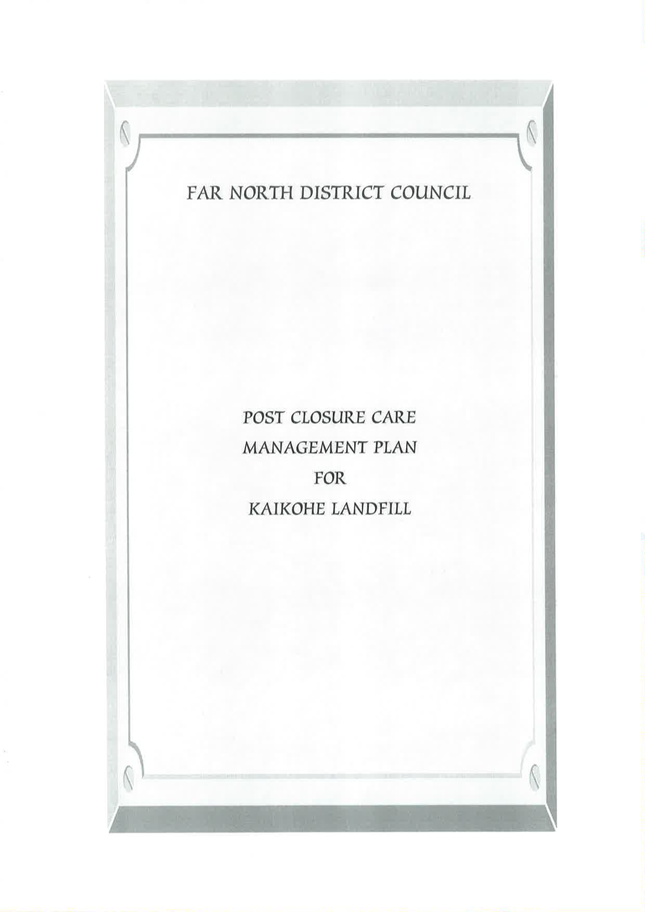
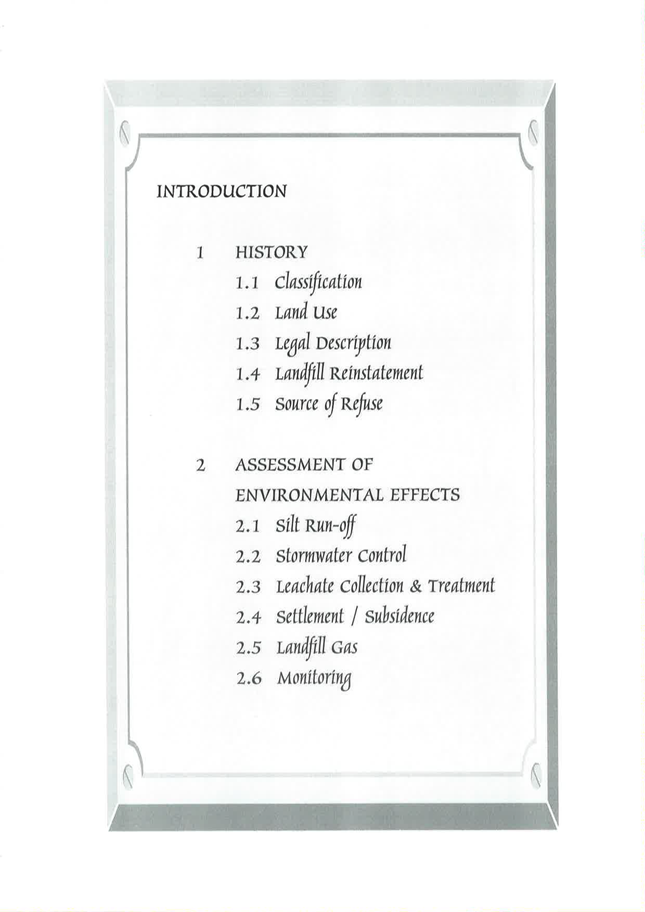
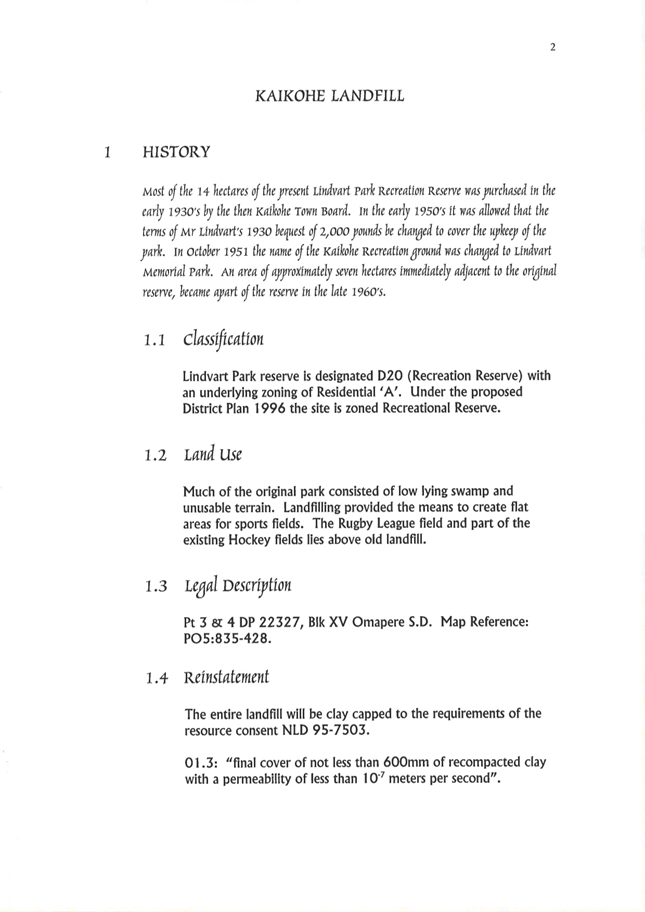


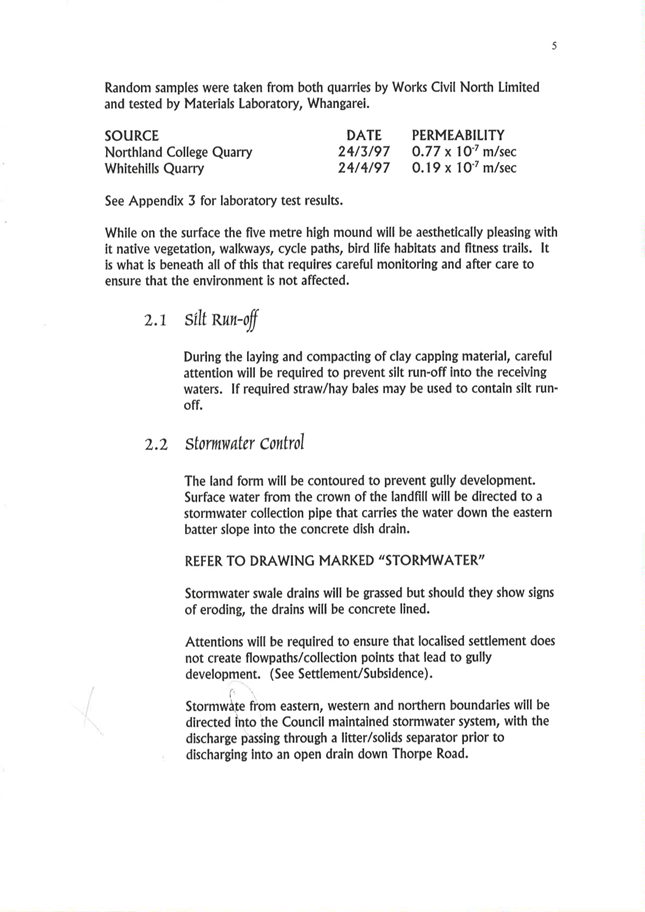

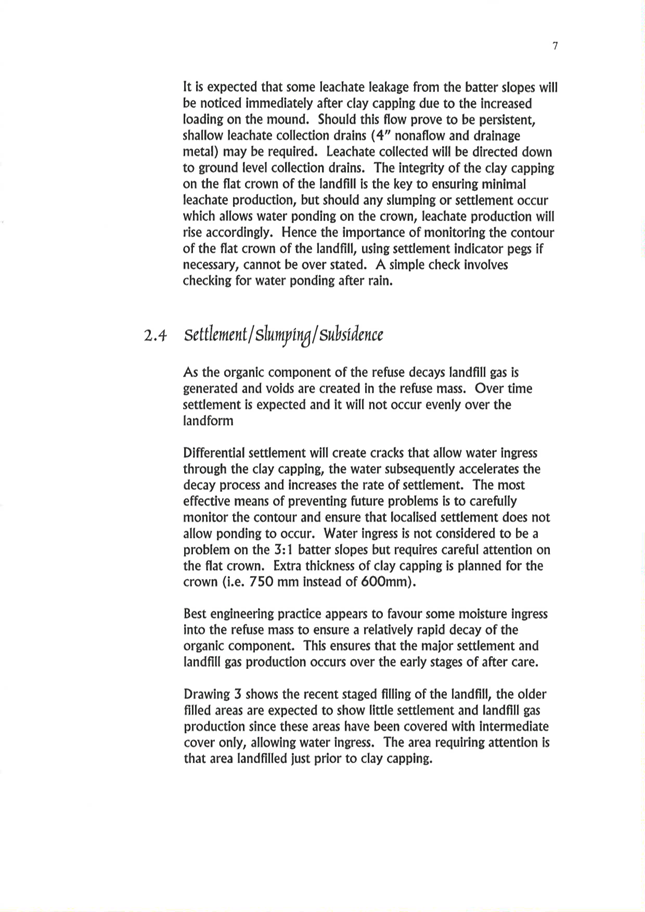

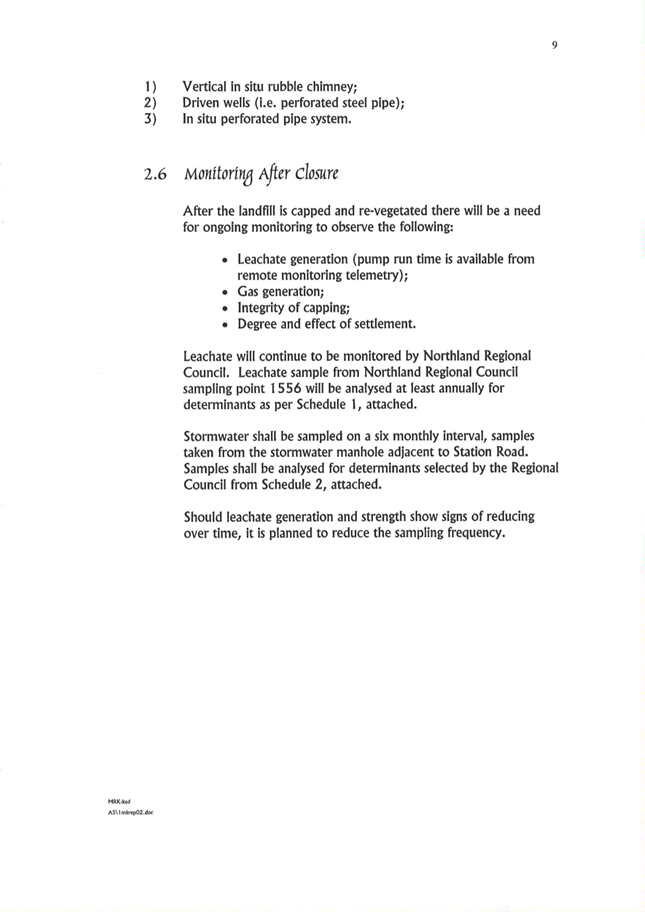

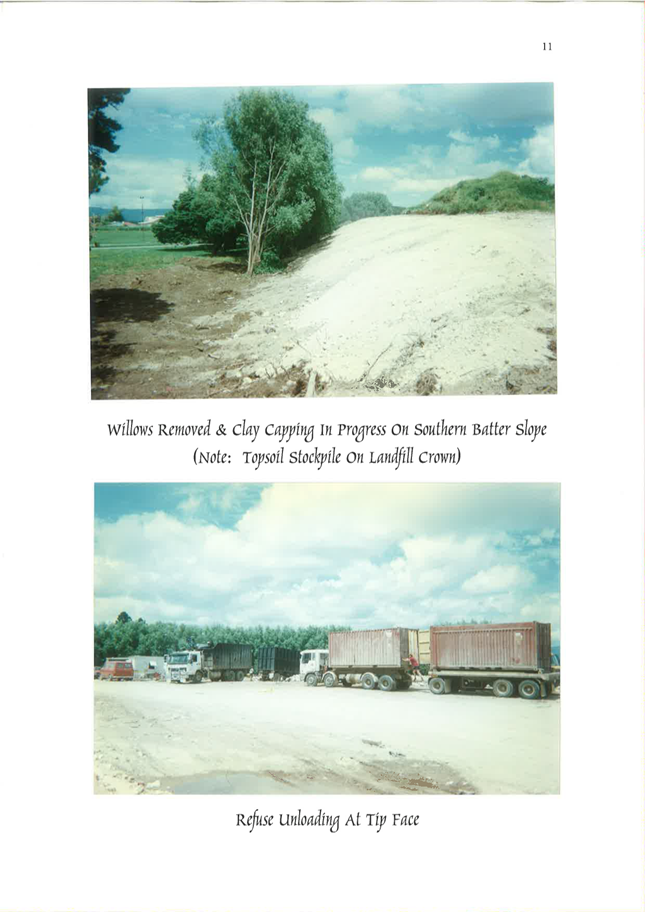
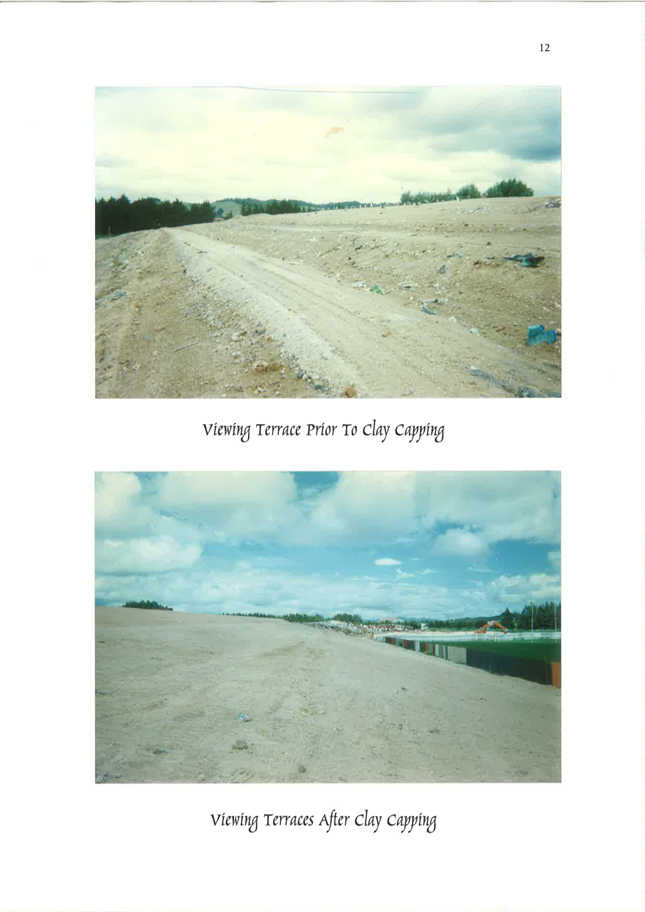
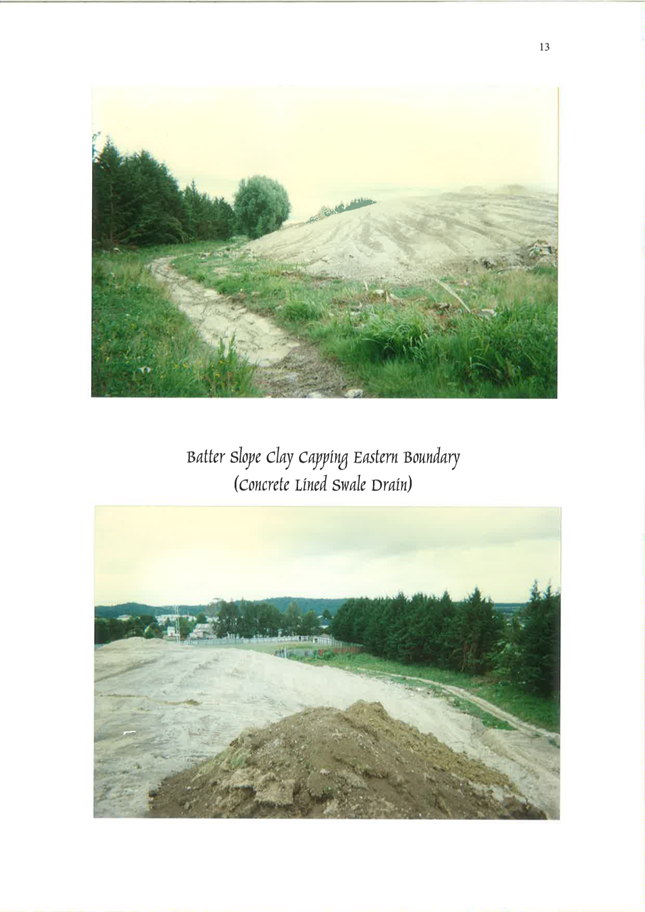
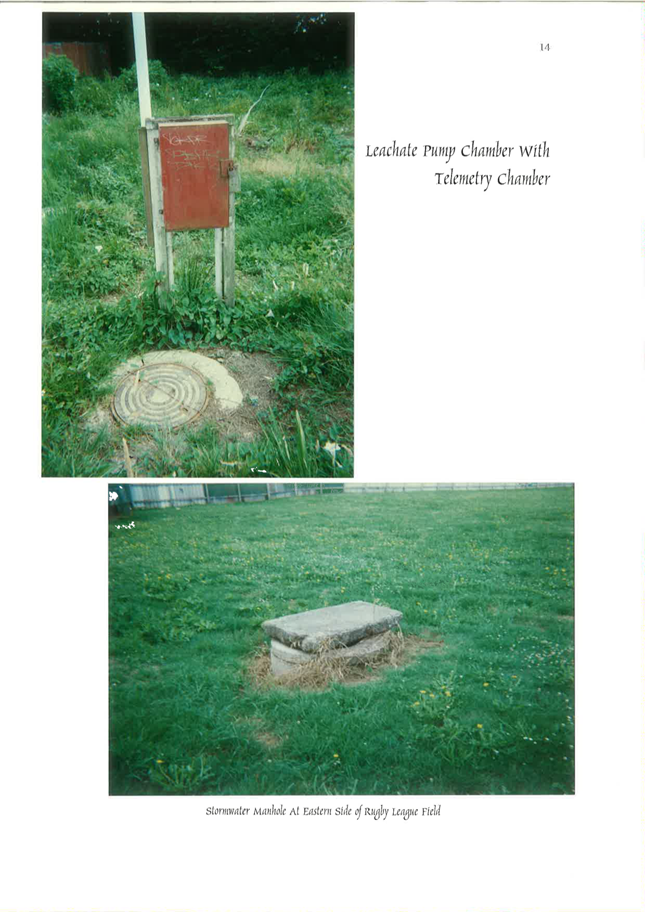
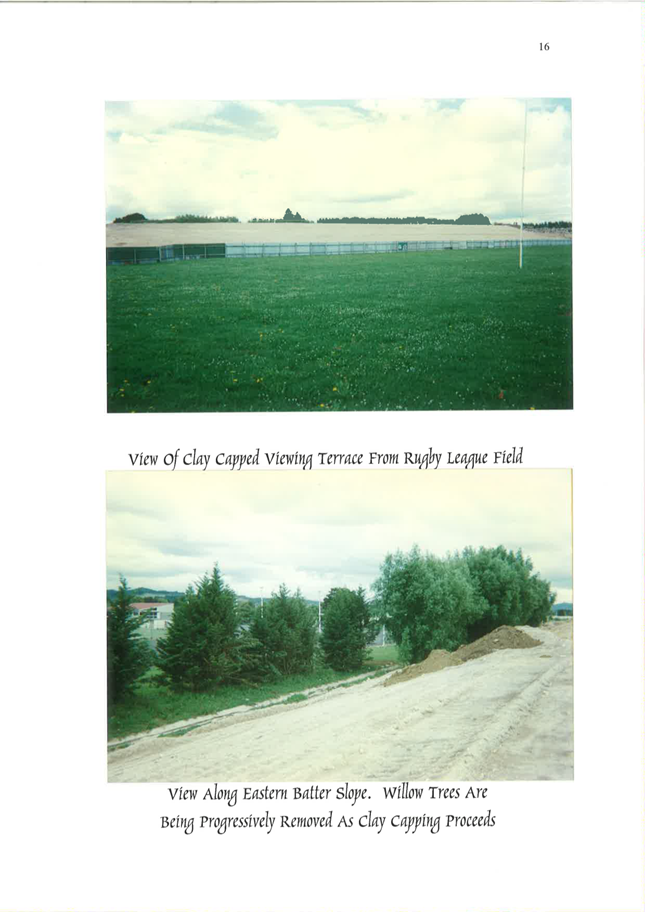
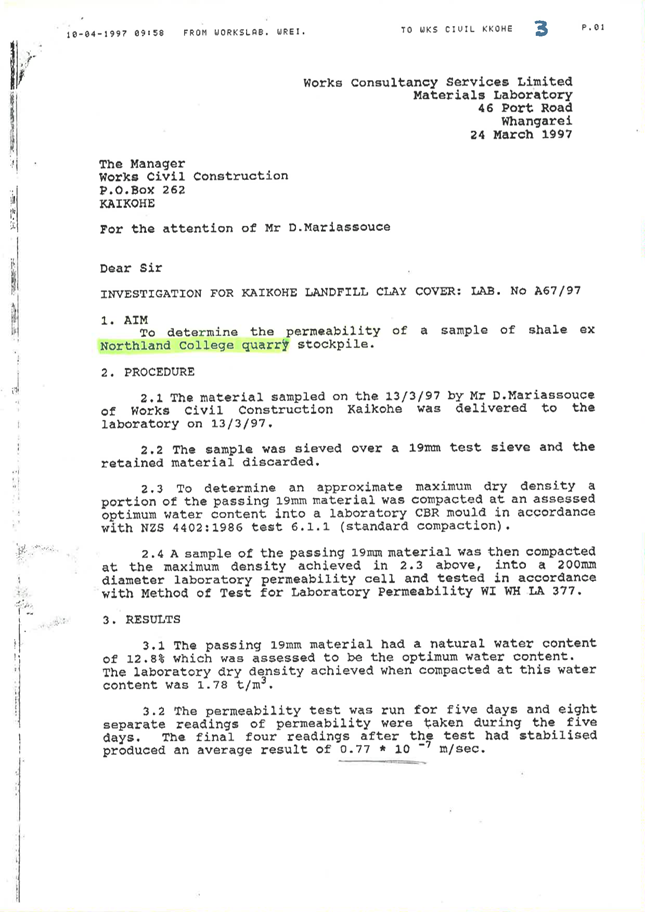

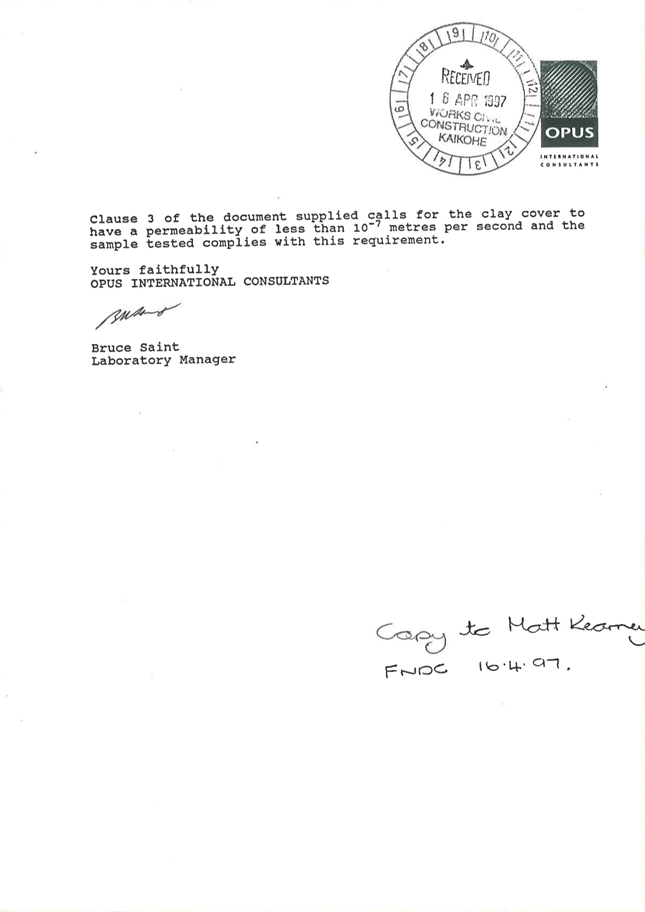

7.4 New
Ground Lease to Kohukohu Bowling Club Incorporated over 22 Beach Road, Kohukohu
File
Number: A5039534
Author: Michelle
Rockell, Team Leader - Property Management
Authoriser: Trent
Blakeman, Acting Group Manager - Delivery and Operations
Take Pūrongo / Purpose of the Report
To seek the Kaikohe – Hokianga Community Board
recommendation to initiate public consultation on the granting of a new ground
lease over Recreation Reserve, under Section 54 Reserves Act 1977 being 22
Beach Road, Kohukohu being Part Lot 2 DP 23934 and Pt Sec 81 Blk X Mangamuka SD
to Kohukohu Bowling Club Incorporated.
WhakarĀpopoto matua / Executive Summary
· Kohukohu Bowling Club Incorporated hold a current Deed of Lease over
the Recreation Reserve at Kohukohu dated 1 May 1995, with final expiry being 30
April 2025.
· In August 2024, Kohukohu Bowling Club Incorporated formally
requested a new ground lease over the site that the Kohukohu Bowling Club has
occupied since 1958.
· The Reserves Act 1977 requires public consultation on the issuing of
a lease over a Recreation Reserve when no Reserve Management Plan is in place.
|
tŪtohunga
/ Recommendation
That the Kaikohe - Hokianga Community Board:
a) recommend
to Council that the public consultation process is commenced on the granting
of a new ground lease to Kohukohu Bowling Club Incorporated over part of the
Recreation Reserve being Part Lot 2 DP 23934 and Pt Sec 81 Blk X Mangamuka
SD, approximately 2,555.4 square
metres, held in New Zealand Gazette 1981 page 1917 held in Record of Title
NA636/269.
b) The terms of
the proposed lease shall be:
· Term: 30
Years (10+10+10)
· Annual
Rental: $121 plus GST for 2024/25 and reviewed annually in conjunction with
the FNDC Fees and Charges Schedule.
b) is
appointed to hear any submissions received in response to the consultation
process and to make recommendations to Council.
|
1) TĀhuhu kŌrero / Background
Kohukohu Recreation Reserve is vested in Council and has
been occupied by Kohukohu Bowling Club Incorporated since 1958. The club has
seen several generations of families pass through its greens and still serves
the community well.
Their current lease is dated 1 May 1995 with final expiry 30
April 2025. In 2024, the Kohukohu Bowling Club Incorporated approached Far
North District Council staff formally seeking a new ground lease.
The Kohukohu Bowling Club Incorporated is hired by a variety
of groups, including Hau Ora Hokianga and is made available free of charge each
year for the Breast Screen truck staff who park just outside the club’s
premises.
Kohukohu Bowling Club Incorporated host the annual
commemorations of ANZAC & Armistice and in 2023, the Club received a medal
from the Deputy Chief of the New Zealand Navy in recognition of the years of
hosting Aotearoa’s service men & women.
The Kohukohu Bowling Club Incorporated members are very
proud of their club and with increased membership year on year, will see the
Club continue to thrive.


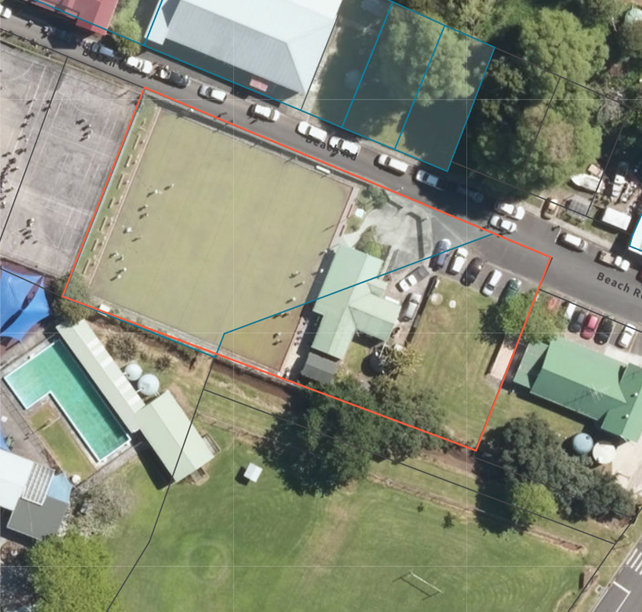
Aerial view of proposed leased area in red.
2) matapaki me NgĀ KŌwhiringa /
Discussion and Options
The 2013 Minister of Conservation Reserves Act Delegations
provide for Local Authorities to wear the hat of the Minister for delegated
actions over vested recreation reserves.
Section 54(1) of the Reserves Act 1977 (“the
Act”) provides for Council, with the prior consent of the Minister, to
grant leases over recreation reserves. From 2013, prior consent of the Minister
is delegated to Council.
Section 54(2) Reserves Act 1977 requires public notification
of the proposed lease action where no current reserve management plan is in
place for the vested recreation reserve. There is no current reserve management
plan for the Kohukohu Domain Recreation Reserve.
Council resolution to commence public consultation satisfies
the prior consent of the Minister and the public notice requirements.
Council delegations: the role of the Board vs the role of
the Council
Community Boards are delegated to provide recommendations to
Council in respect to applications for the use and/or lease of reserves not
contemplated by an existing reserve management plan.
The Kaikohe – Hokianga Community Board is therefore
now required to make a recommendation to Council in respect of the proposal.
The options for this site are:
Option 1: Recommended
That the Kaikohe - Hokianga Community Board:
a) recommends
to Council that the public consultation process is commenced on the granting of
a new ground lease to Kohukohu Bowling Club Incorporated over part of the
Recreation Reserve being Part Lot 2 DP 23934 and Pt Sec 81 Blk X Mangamuka SD,
approximately 2,555.4 square metres, held in New Zealand
Gazette 1981 page 1917 held in Record of Title NA636/269.
b) The
terms of the proposed lease shall be:
· Term: 30 Years
(10+10+10)
· Annual Rental:
$121 plus GST for 2024/25 and reviewed annually in conjunction with the FNDC
Fees and Charges Schedule.
c) is
appointed to hear any submissions received in response to the consultation
process and to make recommendations to Council.
Option 1 will allow Kohukohu Bowling Club Incorporated to
continue providing a bowling club to the community of Kohukohu and surrounding
areas.
Option 2:
a. Decline Kohukohu
Bowling Club Incorporated request for a new ground lease
b. Request that Kohukohu
Bowling Club Incorporated remove all existing building(s) and associated assets
from the reserve and reinstate the recreation reserve at their cost.
TAKE TŪTOHUNGA
/ REASON FOR THE RECOMMENDATION
Kohukohu Bowling Club Incorporated provide a beneficial
service to the community and requiring them to vacate the land will be a loss
for the community of Kohukohu.
As per the Reserves Act 1977, Council can grant exclusive
leases to part or all of a reserve for a maximum term of 30 years.
Public Notice is a statutory requirement under Reserves Act
for the leasing of a Recreation Reserve.
Public consultation will enable the Kaikohe – Hokianga
Community Board and Council to assess the community’s engagement with the
Kohukohu Bowling Club Incorporated proposal. Public consultation gives the
community the opportunity to put forward alternative options for the occupation
of the building and/or the use of the site.
3) PĀnga PŪtea me ngĀ
wĀhanga tahua / Financial Implications and Budgetary Provision
The lease will provide for the lessee to continue to be
responsible for all ongoing maintenance of the associated green space.
The lease will provide for the lessee to be responsible for
the payment of all utility charges, rates and insurances.
All buildings and improvements are owned by the Kohukohu
Bowling Club Incorporated.
The annual rent will be in conjunction with Far North
District Council Fees and Charges Schedule and amended annually.
Should a lease not be provided to Kohukohu Bowling Club
Incorporated and the land reinstated to reserve, Council will become
responsible for any ongoing maintenance of the site.
Āpitihanga
/ Attachments
Nil
Hōtaka Take Ōkawa / Compliance Schedule:
Full consideration has been given to the provisions of the
Local Government Act 2002 S77 in relation to decision making, in particular:
1. A
Local authority must, in the course of the decision-making process,
a) Seek
to identify all reasonably practicable options for the achievement of the
objective of a decision; and
b) Assess
the options in terms of their advantages and disadvantages; and
c) If
any of the options identified under paragraph (a) involves a significant
decision in relation to land or a body of water, take into account the
relationship of Māori and their culture and traditions with their
ancestral land, water sites, waahi tapu, valued flora and fauna and other
taonga.
2. This
section is subject to Section 79 - Compliance with procedures in relation to
decisions.
|
He Take Ōkawa /
Compliance Requirement
|
Aromatawai Kaimahi /
Staff Assessment
|
|
State the level of significance (high or low) of the
issue or proposal as determined by the Council’s
Significance and Engagement Policy
|
Medium
|
|
State the relevant Council policies (external or
internal), legislation, and/or community outcomes (as stated in the LTP) that
relate to this decision.
|
FNDC Reserves Policy: The Policy supports a long-term
lease being offered to community orientated groups wanting a permanent base.
The Reserves Act 1977: Section 119 and 120 require that
public consultation be initiated prior to the granting of a lease
|
|
State whether this issue or proposal has a District wide
relevance and, if not, the ways in which the appropriate Community
Board’s views have been sought.
|
This does not have District wide relevance. Delegation
to the relevant Community Board to provide recommendations to the Council in
respect of applications for the use and/or lease of reserves not contemplated
by an existing reserve management plan.
|
|
State the
possible implications for Māori and how Māori have been provided
with an opportunity to contribute to decision making if this decision is
significant and relates to land and/or any body of water.
State the
possible implications and how this report aligns with Te Tiriti o Waitangi /
The Treaty of Waitangi.
|
Far
North District Council recognises the significant role of tangata whenua as
set out in the Working with Māori chapter in the Long-Term Plan
2021-2031. It is important to notify tangata whenua in the Ahipara locality
of the lease proposal prior to the public consultation. Te Hono was
approached to provide advice on who the main contacts were in the first
instance.
Should public consultation be
approved, relevant Iwi/hapū will be notified via a
separate letter to inform them of the requested lease. The letter will
include brief summary of the lease and instructions of how to provide
feedback should they wish to do so.
|
|
Identify persons likely to be affected by or have an
interest in the matter, and how you have given consideration to their views
or preferences (for example – youth, the aged and those with
disabilities).
|
Public consultation and Iwi consultation will be
progressed as per the Reserves Act 1977 and the FNDC Engagement Policy. This
will allow staff to identify any people or groups who may be affected or have
interest in the matter.
|
|
State the financial implications and where budgetary
provisions have been made to support this decision.
|
All upgrade and maintenance costs fall to the
lessee.
The appropriate community rent for the land is set by
the FNDC Fees Charges Schedule.
|
|
Chief Financial Officer review.
|
The Chief Financial Officer has reviewed this report.
|
7.5 Funding
Applications
File
Number: A5003857
Author: Kathryn
Trewin, Funding Advisor
Authoriser: Scott
May, Manager - Stakeholder Relationships
Take Pūrongo / Purpose of the Report
This report summarises the applications received for the
Local Community Grant funding to enable the Kaikohe-Hokianga Community Board to
determine which applications will receive funding at the February 2025 meeting.
WhakarĀpopoto matua / Executive Summary
· The Board has $10,587 to allocate for the Community Board
Fund in the 2024/2025 financial year.
· The Board has $34,278 to allocate for the Placemaking Fund in
the 2024/2025 financial year.
· Seven applications have been received, requesting a total of
$87,080.
|
tŪtohunga
/ Recommendation
a) That
the Kaikohe-Hokianga Community Board approve the sum of $xxx (plus GST if applicable) be paid from the
Boards Community Grant Fund Account to South Hokianga Memorial Hall
Committee for the costs towards the purchase of a floor polisher for the
hall.
|
|
tŪtohunga / Recommendation
b) That
the Kaikohe-Hokianga Community Board approve the sum of $xxx (plus GST if applicable) be paid from the
Boards Community Grant Fund Account to Te Roopu Kaumatua Kuia o Te Whare
Tapu o Ngāpuhi for the costs towards purchasing a trailer for use in
the rohe.
|
|
tŪtohunga / Recommendation
c) That
the Kaikohe-Hokianga Community Board approve the sum of $xxx (plus GST if applicable) be paid from the
Boards Community Grant Fund Account to Youthline Auckland Charitable Trust
for the costs towards operating the helpline service.
|
|
tŪtohunga / Recommendation
d) That
the Kaikohe-Hokianga Community Board approve the sum of $5,000 (plus GST if applicable) as granted to the Ōkaihau
Community Association on 12 April 2023 (resolution 2023/25) for the
design and pricing of a kitchen and/or toilet for the Ōkaihau
hall be instead utilised for the purchase of refrigerators and a microwave
for the hall kitchen.
|
|
tŪtohunga / Recommendation
e) That
the Kaikohe-Hokianga Community Board leave the application from Whenua
Warrior for the costs towards community gardens to lie on the table until
the applicant provides supporting information for their application.
|
|
tŪtohunga / Recommendation
f) That
the Kaikohe-Hokianga Community Board approve the sum of $xxx (plus GST if applicable) be paid from the
Boards Community Grant Fund Account to One Life Productions for the
costs towards composing and producing a song.
|
|
tŪtohunga / Recommendation
g) That
the Kaikohe-Hokianga Community Board approve the sum of $xxx (plus GST if applicable) be paid from the
Boards Community Grant Fund Account to Ohaeawai Taiamai Residents and
Ratepayers Association for the costs towards the 2025 Taiamai Day.
|
|
tŪtohunga / Recommendation
h) That
the Kaikohe-Hokianga Community Board approve the sum of $xxx (plus GST if applicable) be paid from the
Boards Community Grant Fund Account to Kohukohu Hall Committee for the
costs towards replacing the hot water heater in the kitchen.
|
1) TĀhuhu kŌrero / Background
Each application has been checked by staff for completeness
and complies with the conditions of the Community Grant Policy, Community
Outcomes as stated in the Long-Term Plan (LTP) and all provisions listed on the
application form.
Each application must meet at least one community outcome
from the Council’s LTP. The six community outcomes are as follows:
1. Proud, vibrant
communities;
2. Prosperous Communities
supported by a sustainable economy;
3. Communities that are
safe, connected and sustainable;
4. Communities that are
prepared for the unexpected;
5. A wisely managed and
treasured environment that recognises the role of tangata whenua as kaitiaki;
6. We embrace and
celebrate our unique culture and heritage and value it as a source of enduring
pride.
2) matapaki me NgĀ KŌwhiringa /
Discussion and Options
|
Applicant and Project
|
Requested
|
Recommend
|
Comments
|
Type
|
|
South Hokianga Memorial Hall – Floor Polisher
|
$1,570
|
$1,570
|
The applicant is seeking funding to purchase a floor
polisher to help protect and maintain the hall floors. This will enable
them to continue hiring out the space to generate income.
The Community Grants Policy states that an applicant can
apply for 50% of the total project costs. 50% of the total purchase cost is
$2,070. The Community Board could choose to allocate this amount.
The total project This meets community outcome 1,2,3.
|
Community Development
|
|
Te Roopu Kaumatua Kuia o Te Whare Tapu o Ngapuhi
|
$10,804
|
$5,000
|
The applicant is seeking funding for the full cost of
purchasing a trailer and towbar, as well as petrol vouchers.
The amount recommended by staff is based on the applicant
requesting 100% of the total project cost. The Community Grants Policy states
the applicants can only request up to 50% of the project costs.
The applicant has subsequently advised that this will be
made available to the wider community to borrow and that the Runanga has
advised that they will cover ongoing operating and maintenance cost (although
evidence has not been provided of this). The applicant has noted the
project is contingent on securing the funding and is currently applying to
other organisations for this.
This meets community outcome 1,3,6.
|
Community Development
|
|
Youthline Auckland Charitable Trust – Helpline
service costs
|
$5,000
|
$5,000
|
The applicant is seeking funding for costs associated with
operating the national Youthline call centre.
The supporting information outlines support given to
rangitahi and Tamariki in the Auckland region and indicates that it is
expected that 188 rangitahi from the Kaikohe-Hokianga ward are likely to use
their services.
The applicant has also sought funding from the other
boards.
This meets community outcome 1 and 3.
|
Community Development
|
|
Ōkaihau Community Association – purchase of
kitchen equipment
|
n/a
|
n/a
|
The applicant was granted funding in April 2023 towards
the design and scope of works for upgrading the kitchen and bathroom at the
hall. They were working with the FNDC project team, who ended up
covering these costs in the overall project costs for the design and scoping
for the full hall upgrade.
They have been trying to sort what options they have and
are now asking that they be permitted to use the funds granted for the
purchase of equipment for the kitchen (refrigerators and a microwave) that
will not be covered by Council.
They provided multiple quotes for the proposed purchase
items.
This meets community outcome 1,2,3.
|
Infrastructure
|
|
Whenua Warrior – Community Gardens
|
$59,500
|
Leave to lie
|
The applicant is seeking funding for community gardening
in the Kaikohe-Hokianga ward. The application form was submitted
without supporting information and the applicant has subsequently verbally
advised to pull their application. It is recommended that this
application be left to lie until supporting information is provided to allow
the Board to make a decision.
This meets community outcome 1, 2, 3, 4 and 6
|
Community Development
|
|
One Life Productions – composition and production of
a song
|
$5,950
|
$1,000
|
The applicant is seeking funding to record and produce a
second song, using a new local studio.
The applicant is also seeking funding from Creative
Communities.
The Board previously supported the applicant with
recording his song “The Kraken” about the issues surrounding
methamphetamine addiction.
This meets community outcome 1, 2 and 6
|
Art, Culture and Heritage/Event
|
|
Ohaeawai Taiamai Residents and Ratepayers – Taiamai
Day 2025
|
$3,000
|
$1,150
|
The applicant is seeking funds to cover the costs of
running the annual Taiamai Day in March 2025.
Quotes have been provided for the hire of bouncy castles
and a Thomas the Tank Engine. The Board has previously supported this
event and on the last application covered the cost of the bouncy castle
hireage.
This meets community outcome 1, 3 and 6.
|
Art, Culture and Heritage/Event
|
|
Kohukohu Hall Community – Water heater replacement
|
$1,256
|
$1,256
|
The applicant is seeking funds to cover the costs of
replacing the water heater (zip) in the kitchen of the Kohukohu Hall.
Enquiries have been made to see if this can be covered by
the District Facilities team, but no response has been received at time of
writing. If the District Facilities team are unable to cover the costs,
it is recommended the Board support this application.
This meets community outcome 1 and 2.
|
|
TAKE TŪTOHUNGA
/ REASON FOR THE RECOMMENDATION
The applicants are required to complete a standard
application form and provide supporting information.
For each application the Board has three options.
Option 1 Authorise funding for the
full amount requested.
Option 2 Authorise partial funding.
Option 3 Decline funding.
Each application has been assessed and meets the criteria of
the Community Grant Policy, Community Outcomes as listed in the LTP and the
conditions listed on the application form.
3) PĀnga PŪtea me ngĀ
wĀhanga tahua / Financial Implications and Budgetary Provision
Budgetary Provisions has been made and the grant is
allocated in accordance with the Community Grant Policy.
Āpitihanga
/ Attachments
1. South
Hokianga Memorial Hall - A5003843 ⇩ 
2. Te
Roopu Kaumatua Kuia o Te Whare Tapu o Ngapuhi - A5003845 ⇩ 
3. Youth
Auckland Charitable Trust - A5003844 ⇩ 
4. Whenua
Warriors - A5071795 ⇩ 
5. One
Life Production - A5071799 ⇩ 
6. Ohaeawai
Taiamai Residents and Ratepayers Association - A5071801 ⇩ 
7. Kohukohu
Hall - A5071797 ⇩ 
HŌTAKA TAKE ŌKAWA / COMPLIANCE SCHEDULE:
Full consideration has been given
to the provisions of the Local Government Act 2002 S77 in relation to decision
making, in particular:
1. A
Local authority must, in the course of the decision-making process,
a) Seek to
identify all reasonably practicable options for the achievement of the
objective of a decision; and
b) Assess
the options in terms of their advantages and disadvantages; and
c) If any
of the options identified under paragraph (a) involves a significant decision
in relation to land or a body of water, take into account the relationship of
Māori and their culture and traditions with their ancestral land, water
sites, waahi tapu, valued flora and fauna and other taonga.
2. This
section is subject to Section 79 - Compliance with procedures in relation to
decisions.
|
He
Take Ōkawa / Compliance Requirement
|
Aromatawai
Kaimahi / Staff Assessment
|
|
State the level of significance
(high or low) of the issue or proposal as determined by the Council’s
Significance and Engagement Policy
|
This is a matter of low
significance.
|
|
State the relevant Council
policies (external or internal), legislation, and/or community outcomes (as
stated in the LTP) that relate to this decision.
|
Community Grant Policy.
|
|
State whether this issue or
proposal has a District wide relevance and, if not, the ways in which the
appropriate Community Board’s views have been sought.
|
This report does not have
district-wide relevance.
|
|
State the possible implications for Māori
and how Māori have been provided with an opportunity to contribute to
decision making if this decision is significant and relates to land and/or
any body of water.
State the possible implications and how this
report aligns with Te Tiriti o Waitangi / The Treaty of Waitangi.
|
There are no implications for
Māori in relation to land and/or water.
|
|
Identify persons likely to be
affected by or have an interest in the matter, and how you have given
consideration to their views or preferences (for example – youth, the
aged and those with disabilities).
|
Considered in the application.
|
|
State the financial implications
and where budgetary provisions have been made to support this decision.
|
Budgetary provision has been made
and the grant is allocated in accordance with the Community Grant Policy.
|
|
Chief Financial Officer review.
|
The Chief Financial Officer has
not reviewed this report.
|
|
Kaikohe-Hokianga
Community Board Meeting Agenda
|
21 February
2025
|
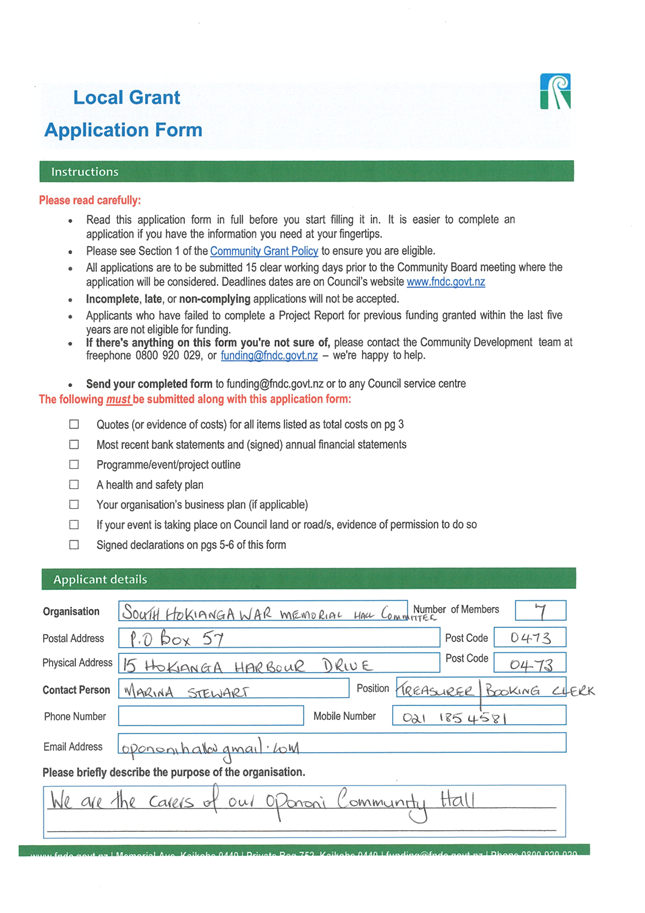
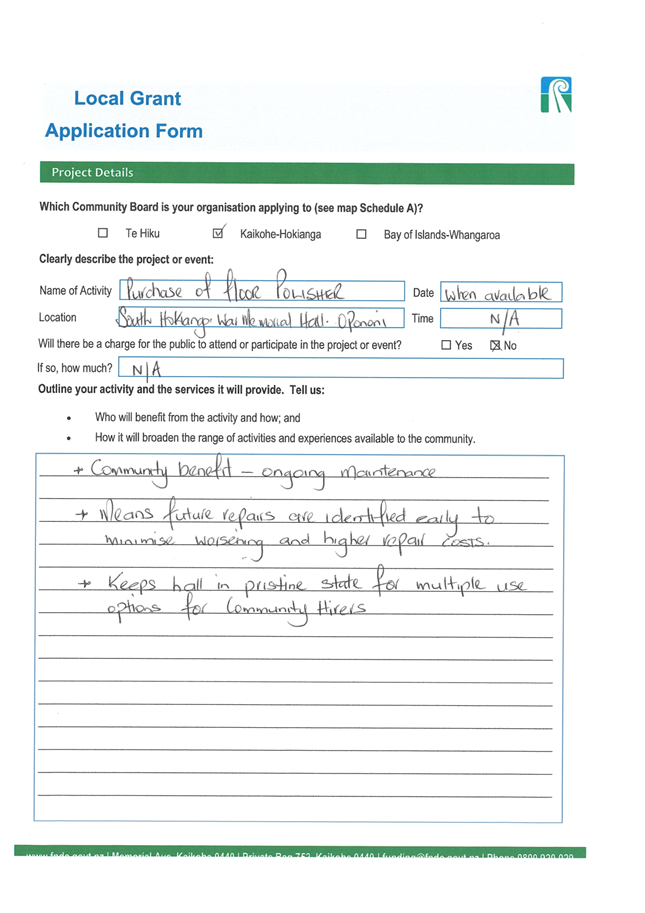
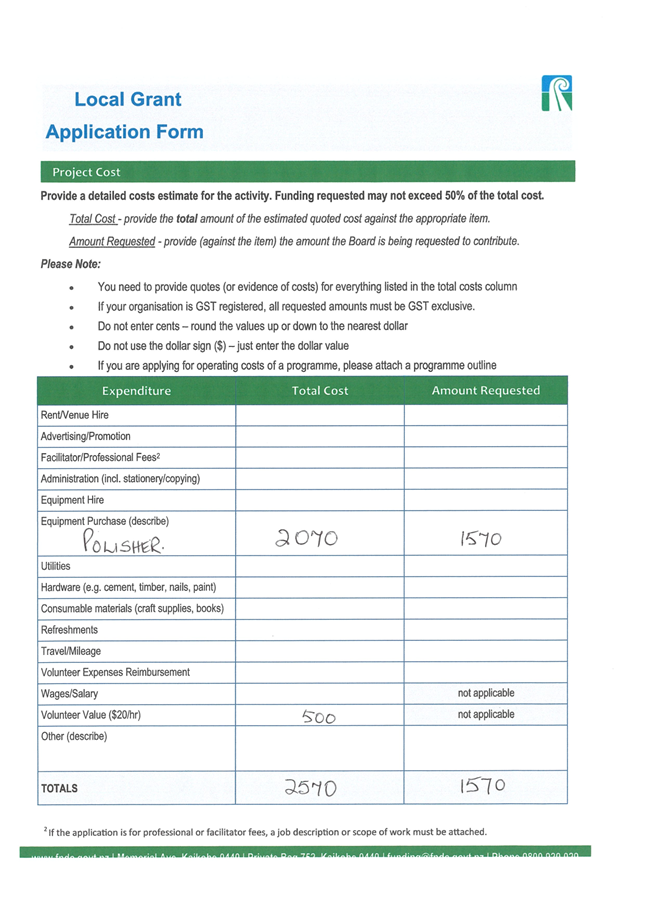

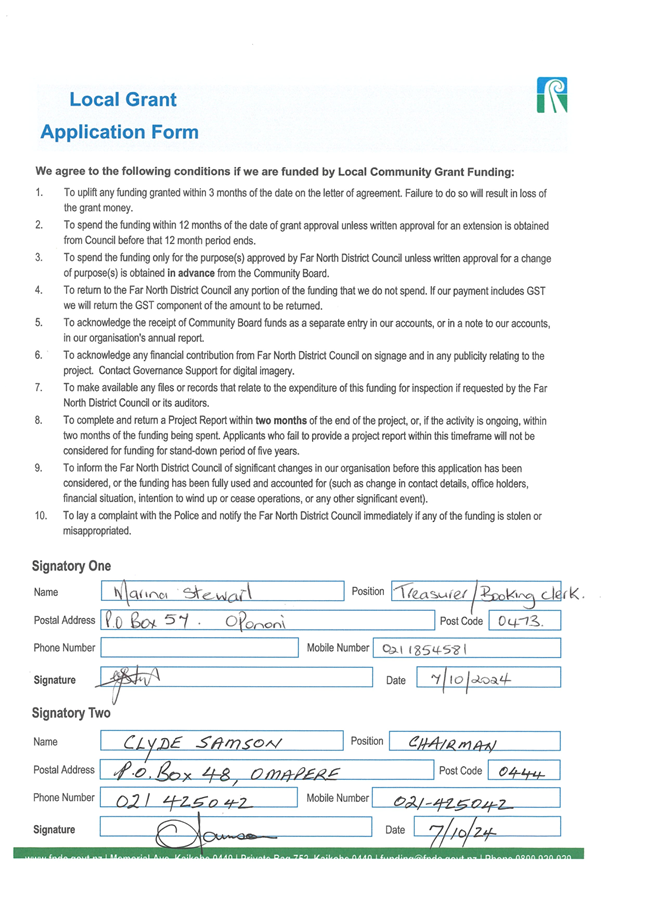

|
Kaikohe-Hokianga
Community Board Meeting Agenda
|
21 February
2025
|
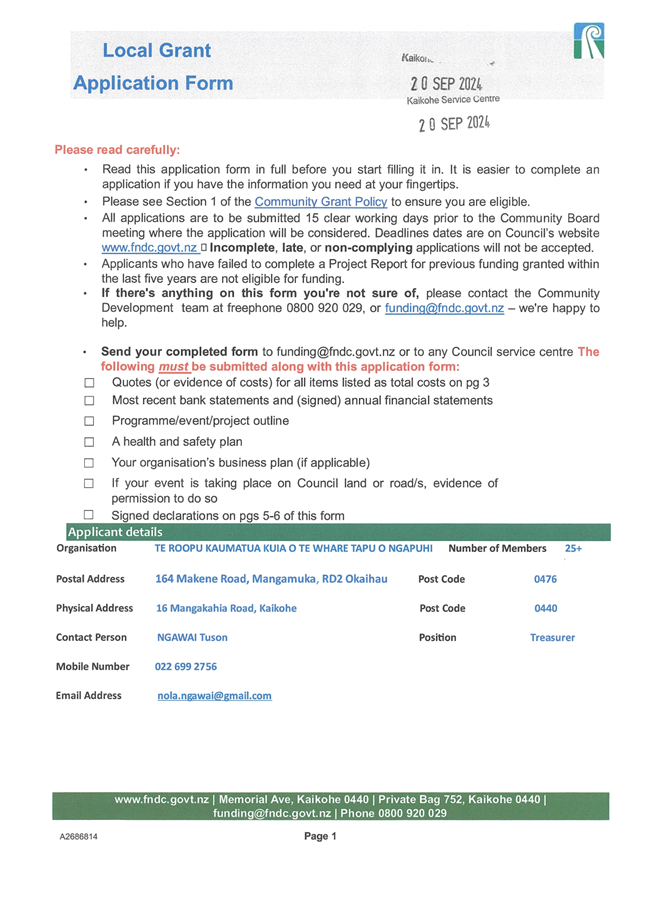

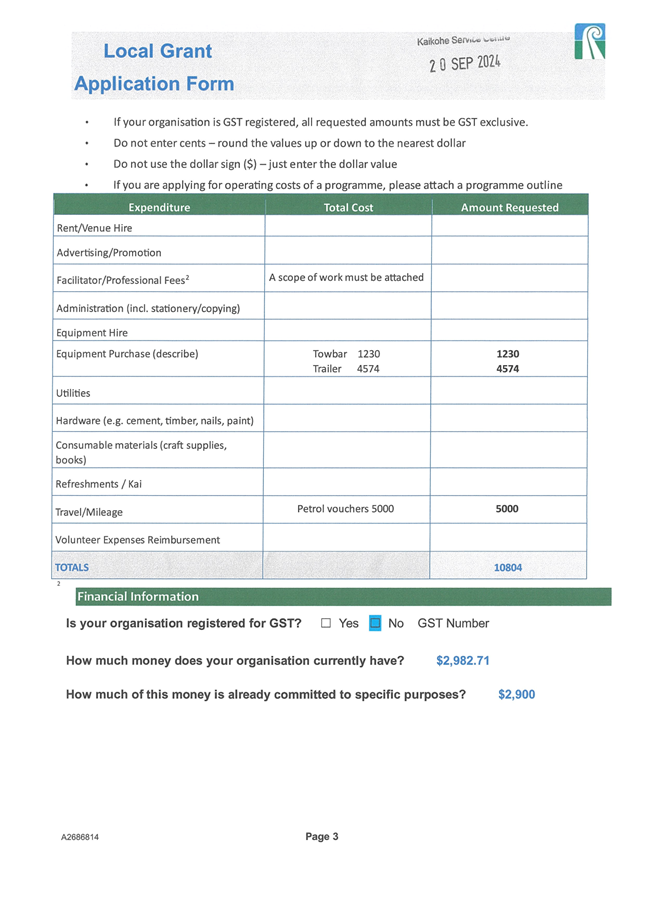
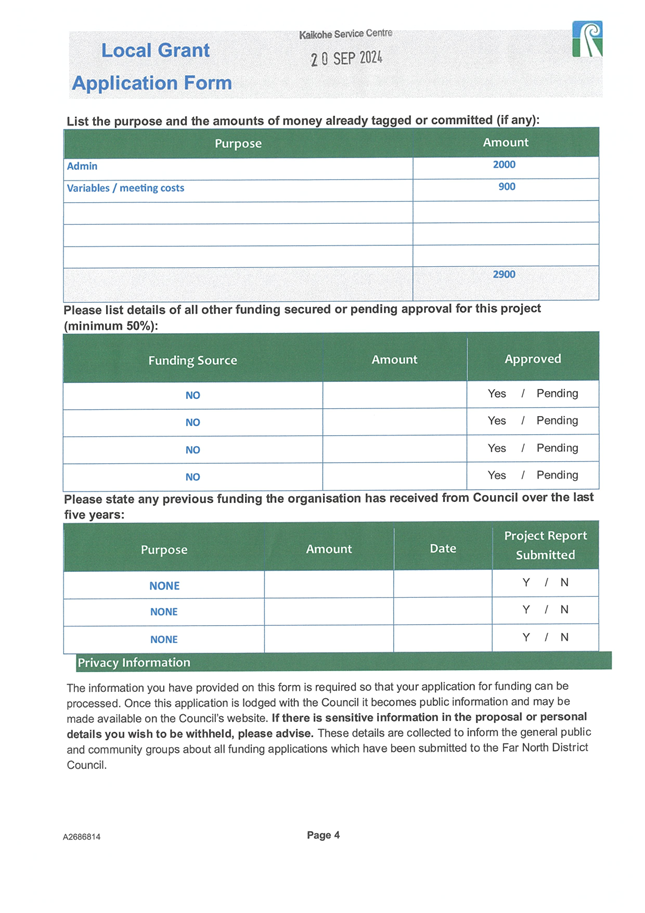
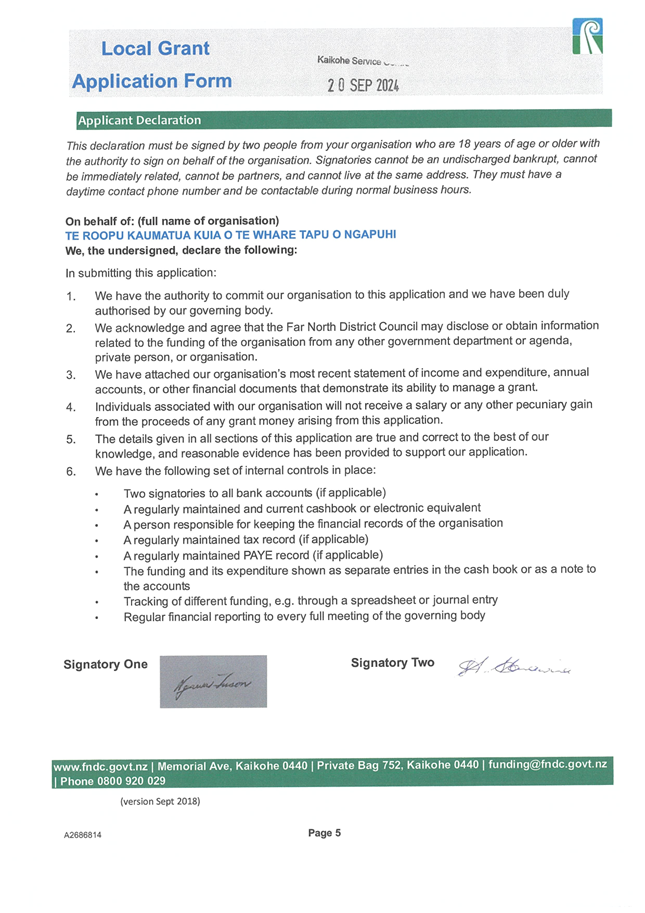
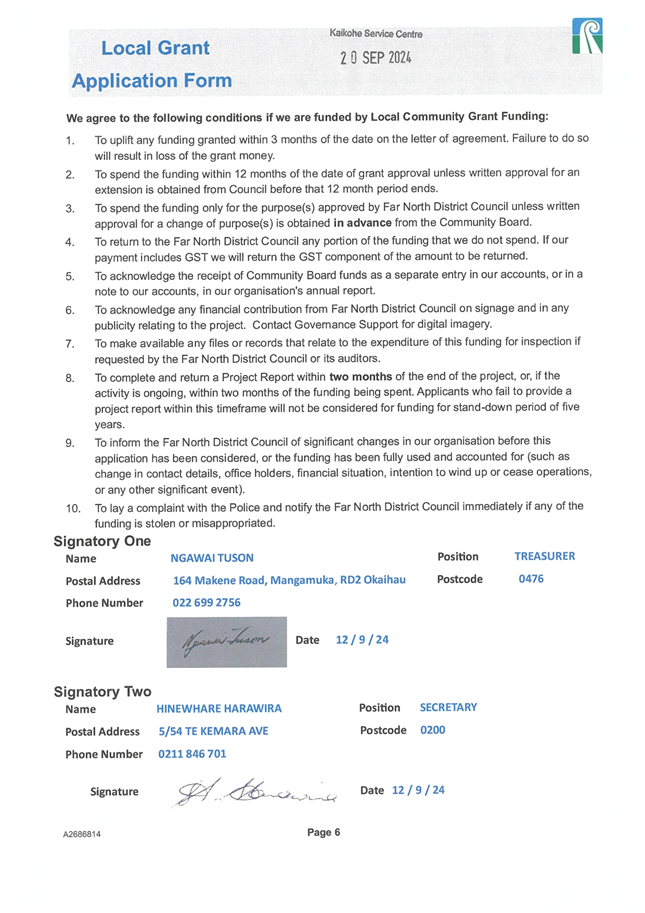
|
Kaikohe-Hokianga
Community Board Meeting Agenda
|
21 February
2025
|
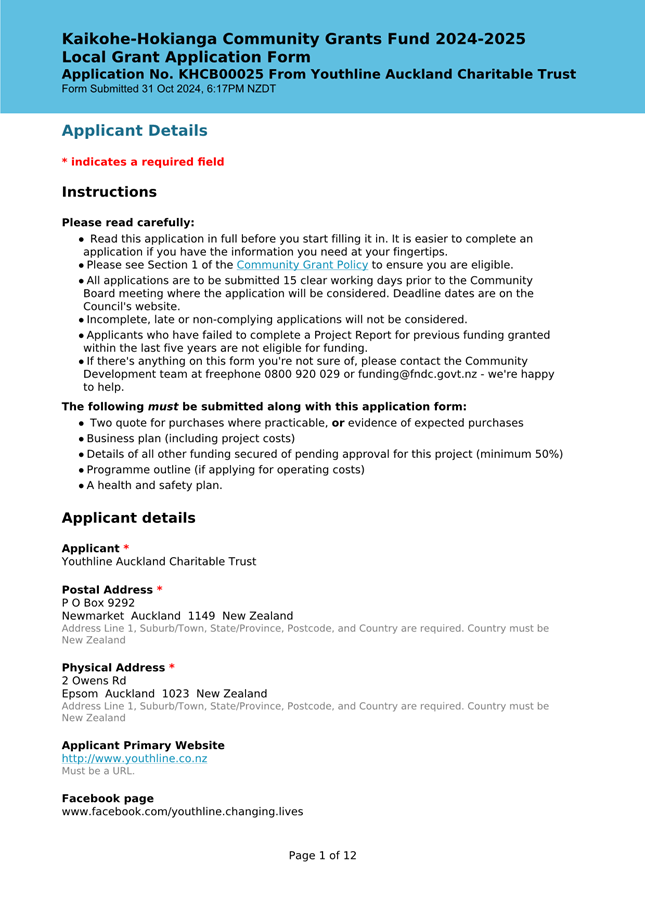
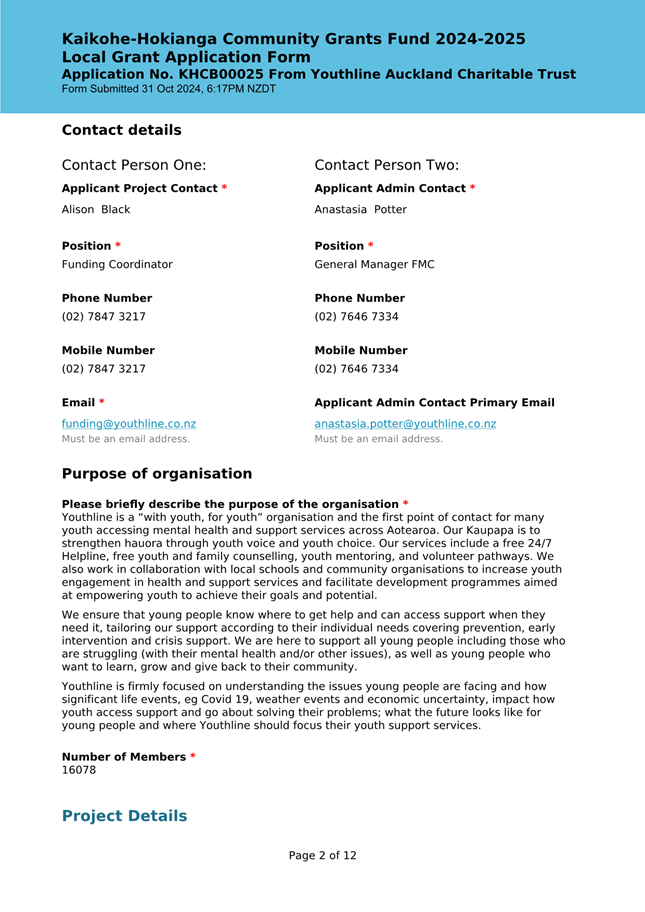
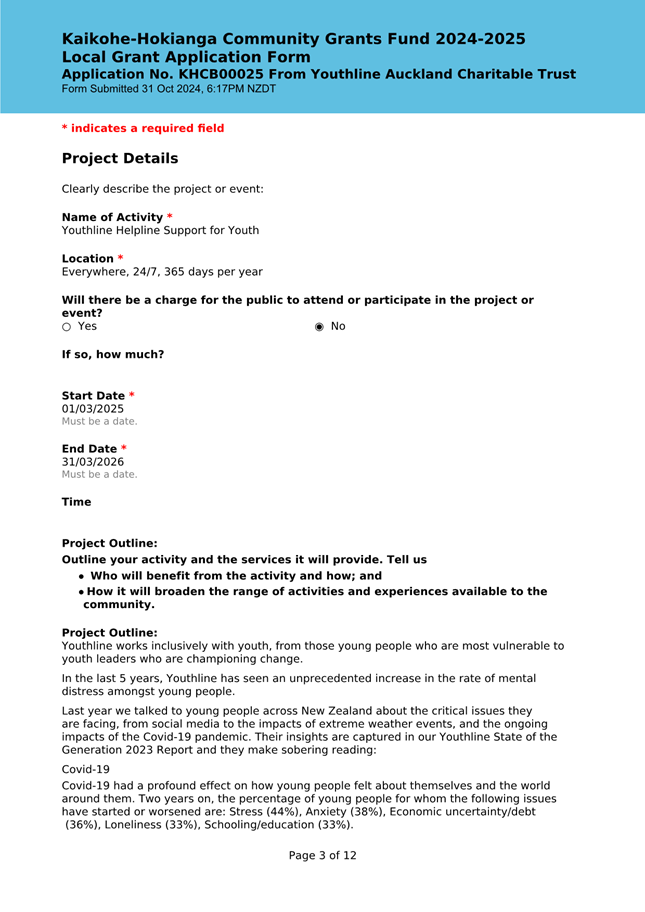
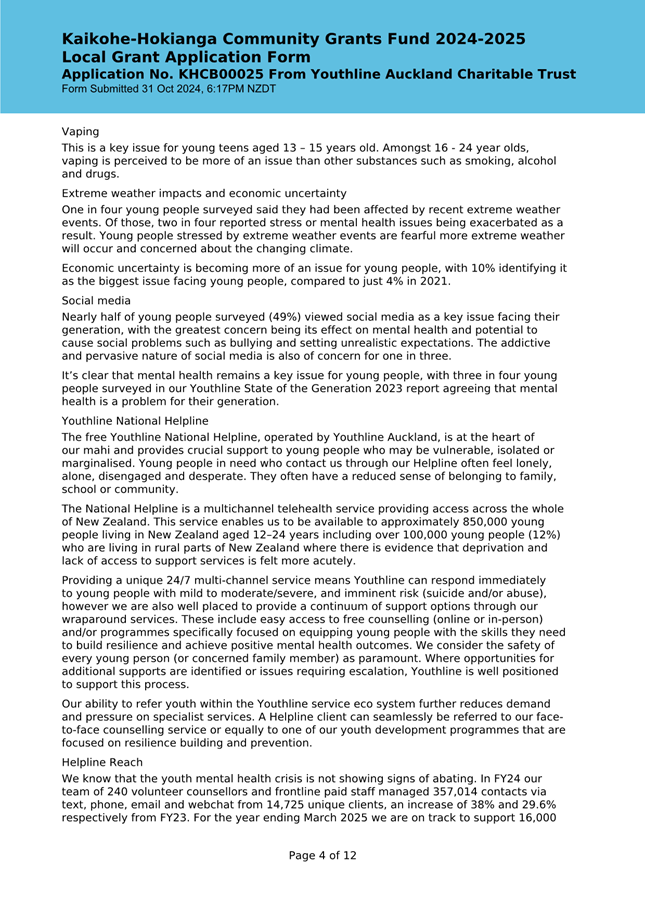
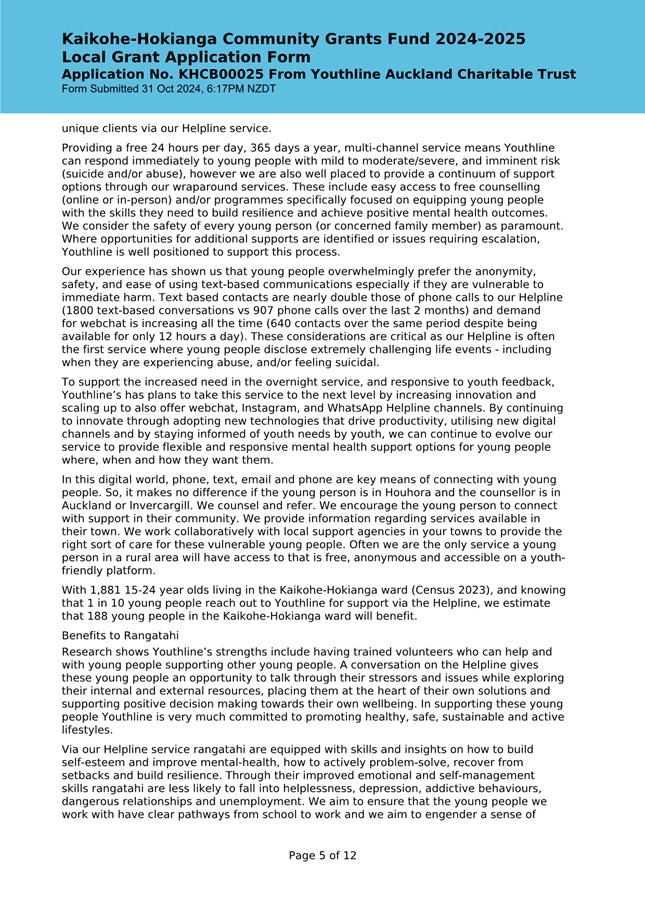
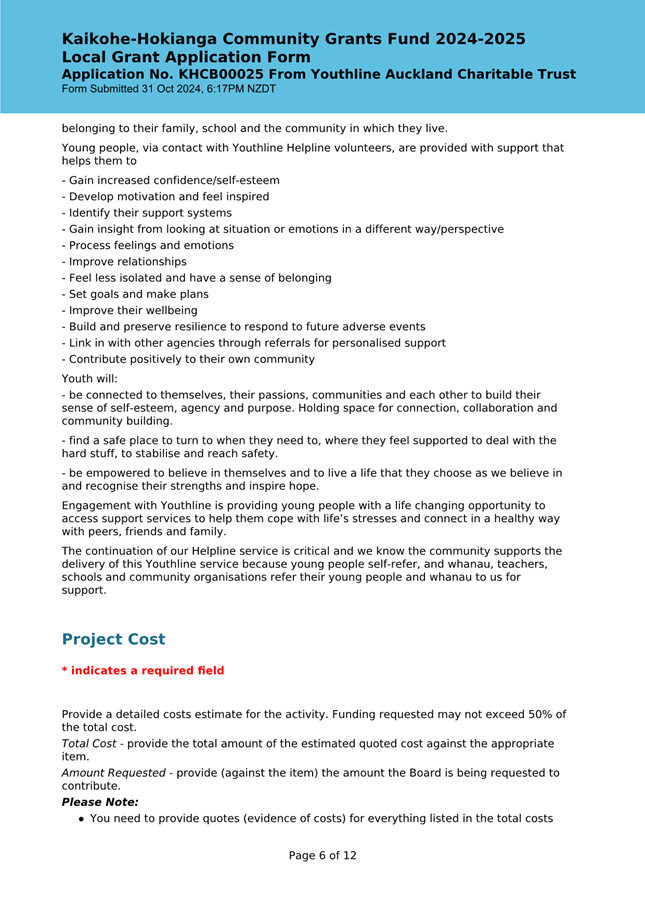
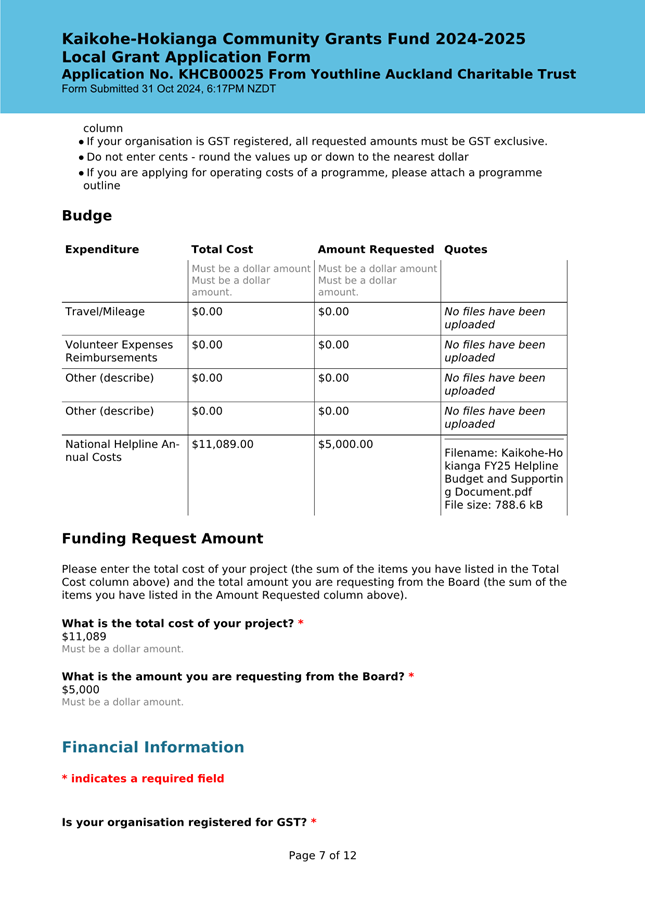
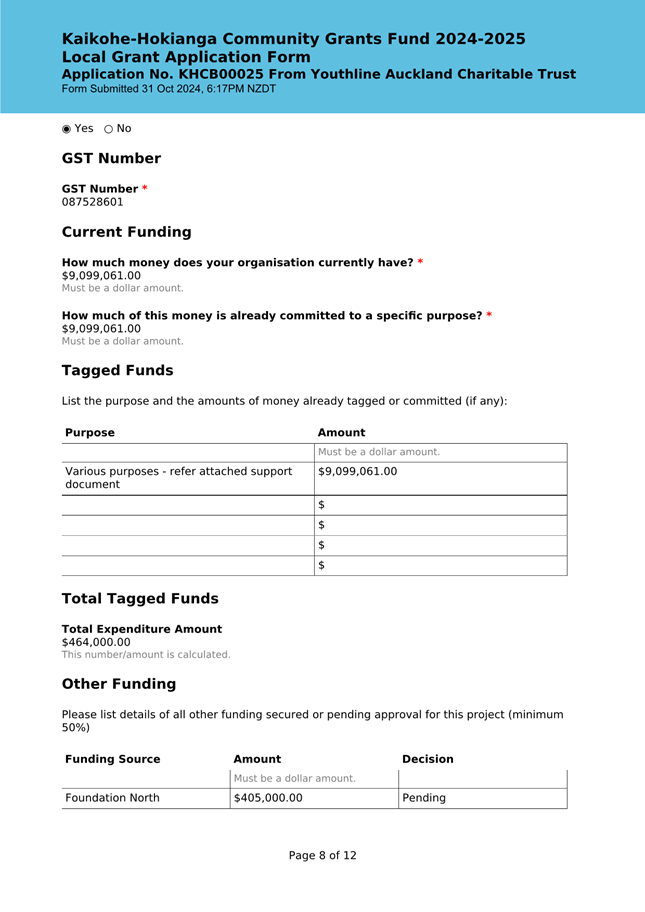
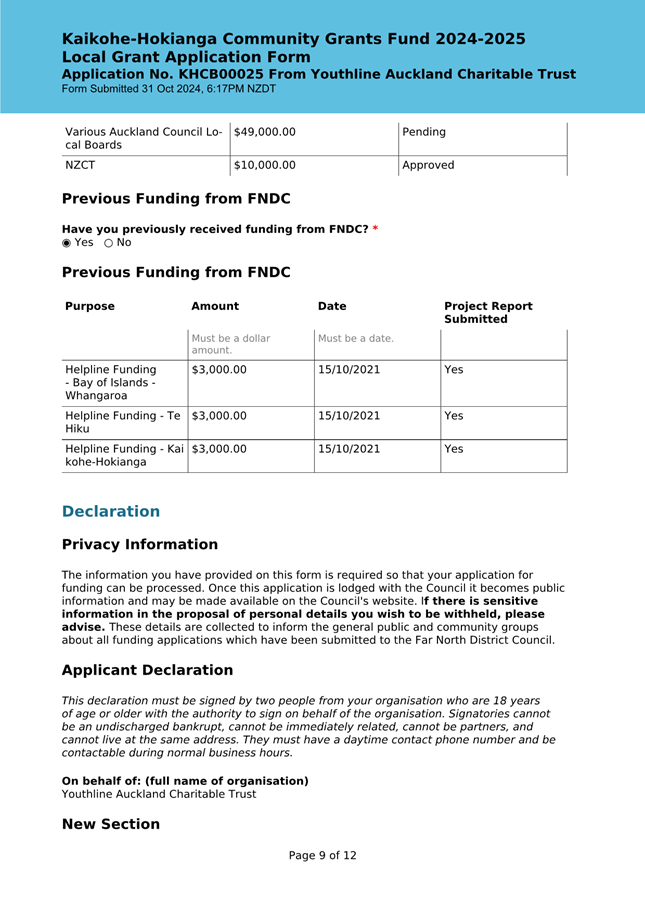
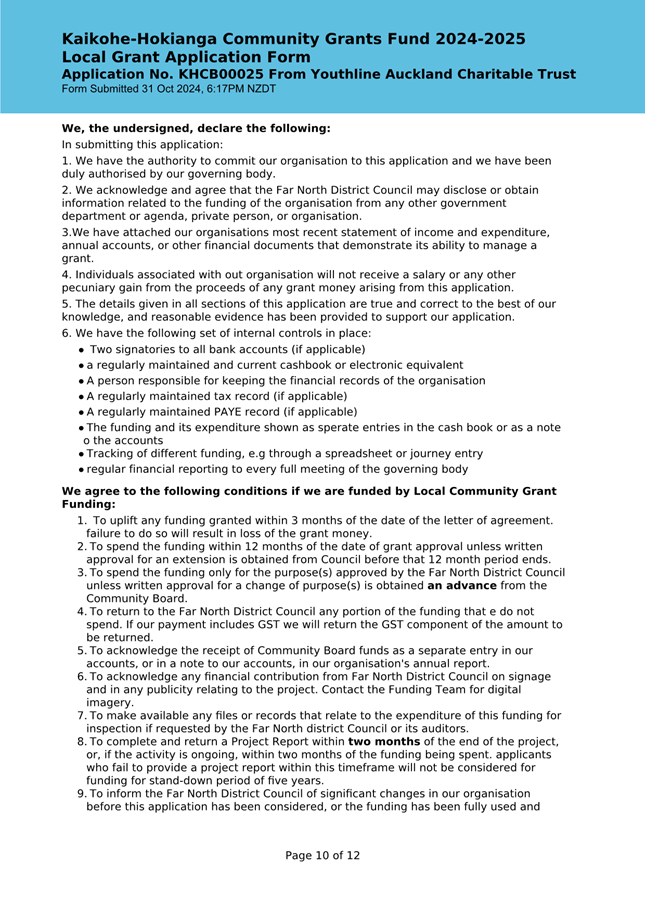
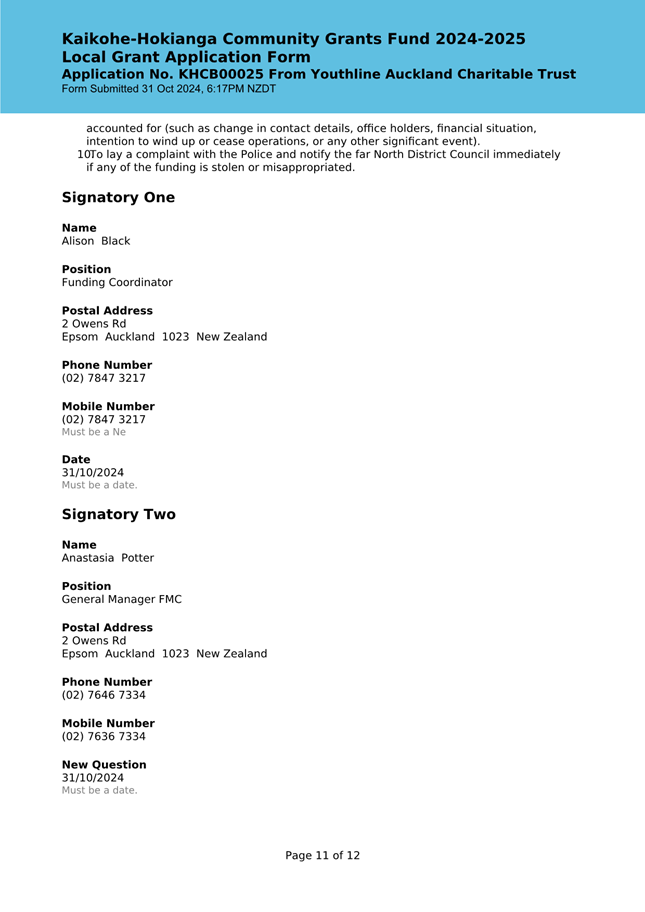
|
Kaikohe-Hokianga
Community Board Meeting Agenda
|
21 February
2025
|
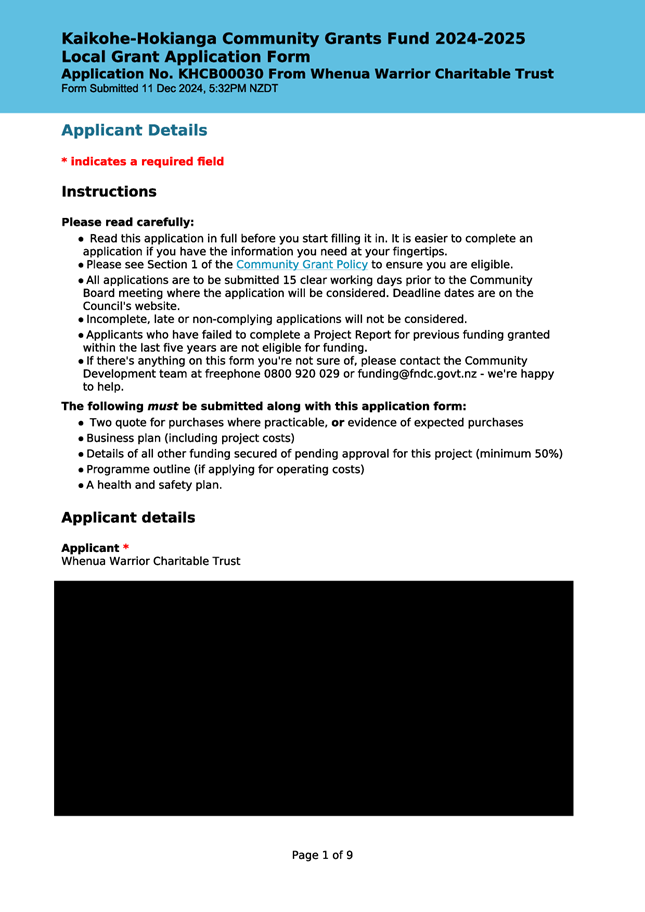
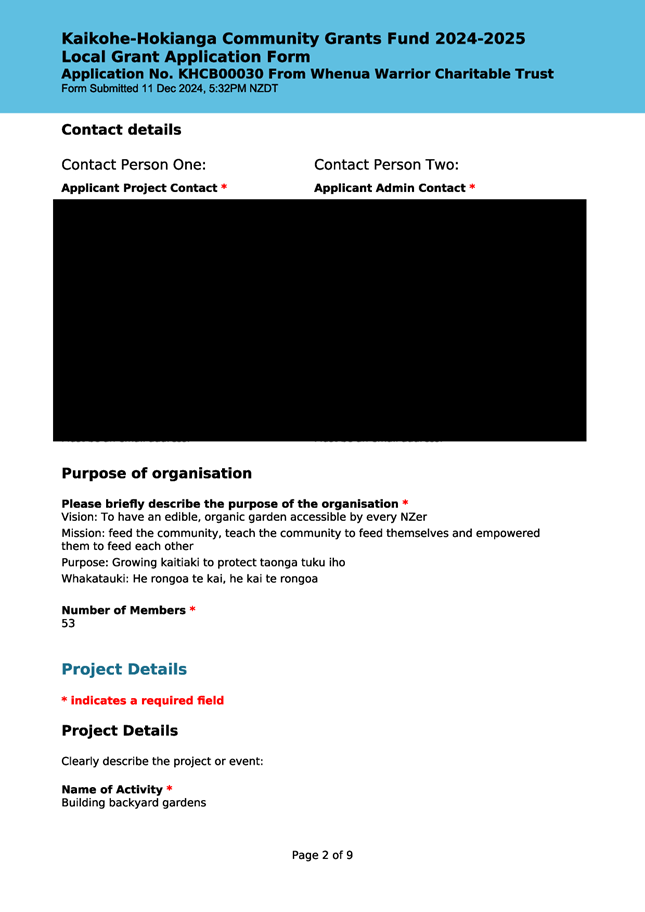
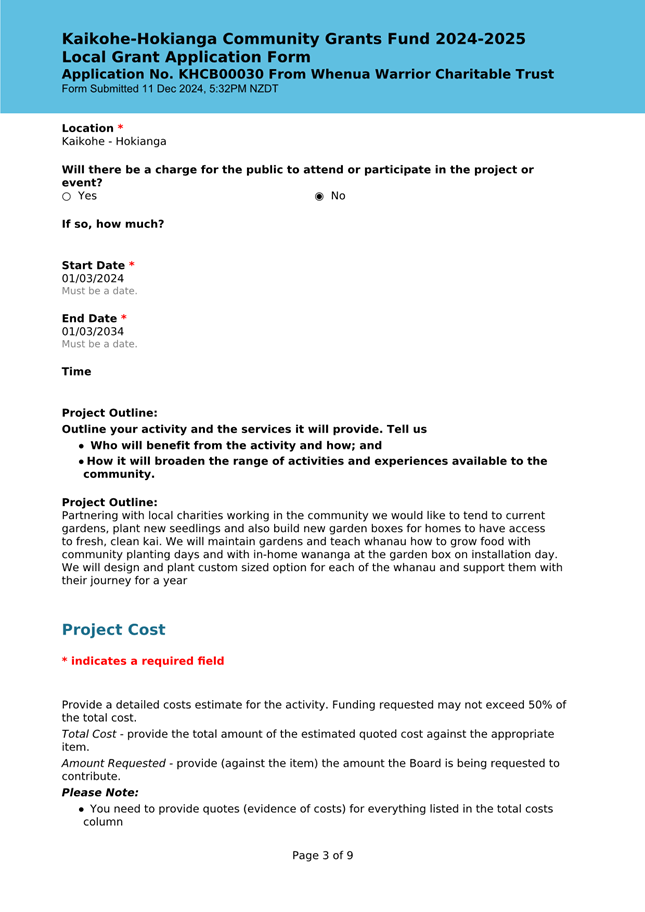
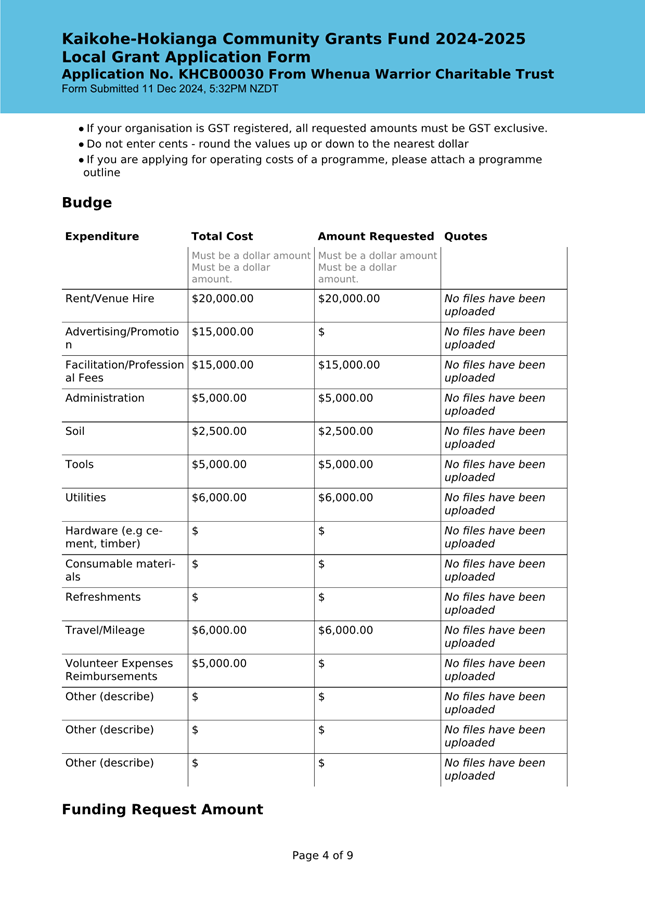

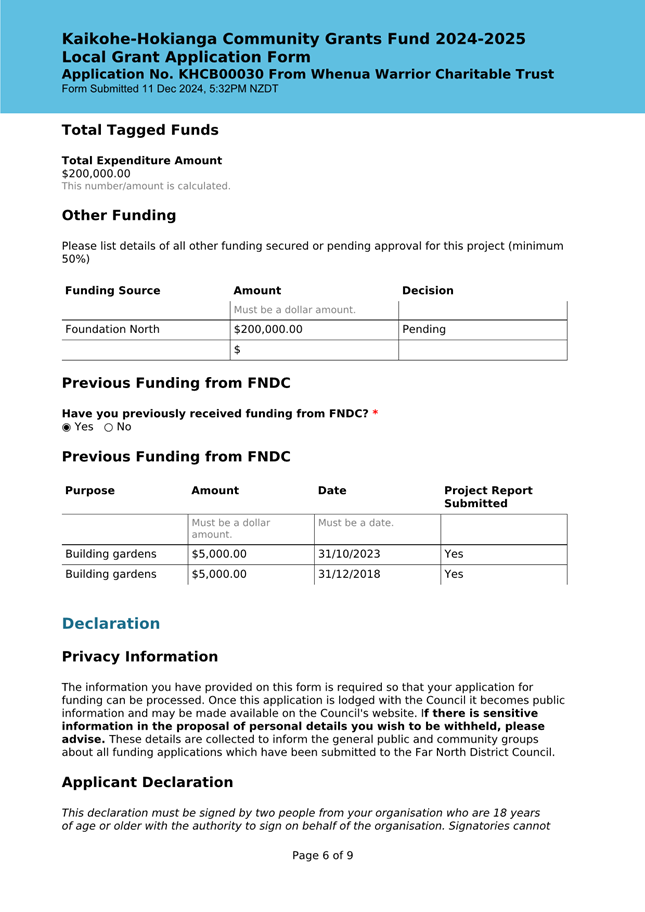
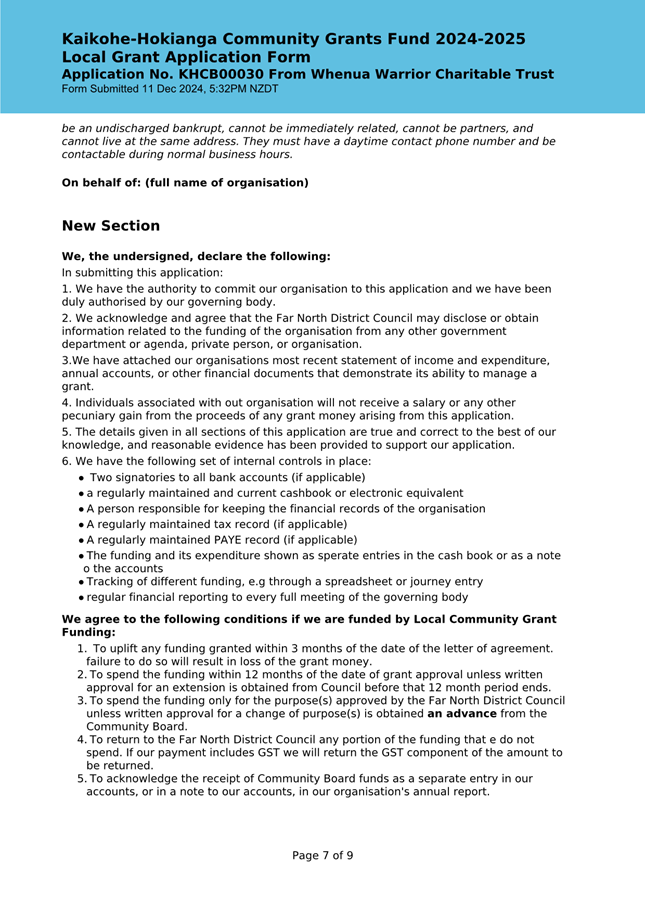
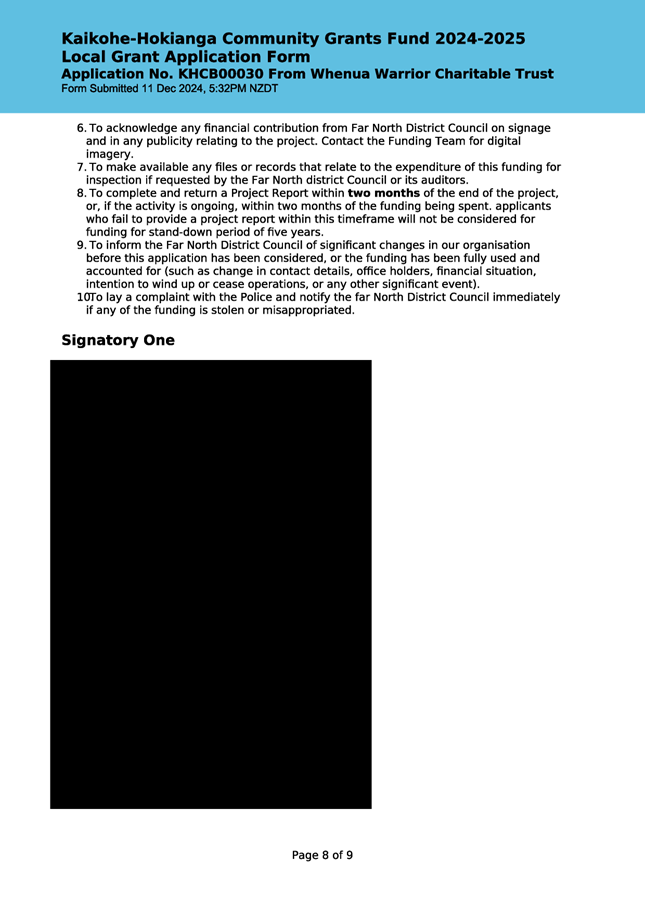
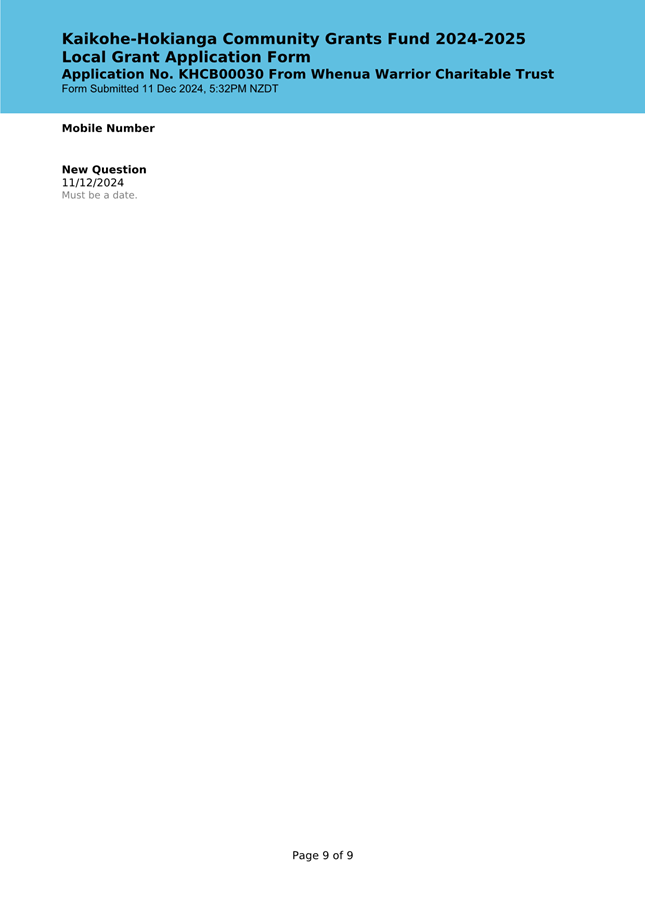
|
Kaikohe-Hokianga
Community Board Meeting Agenda
|
21 February
2025
|
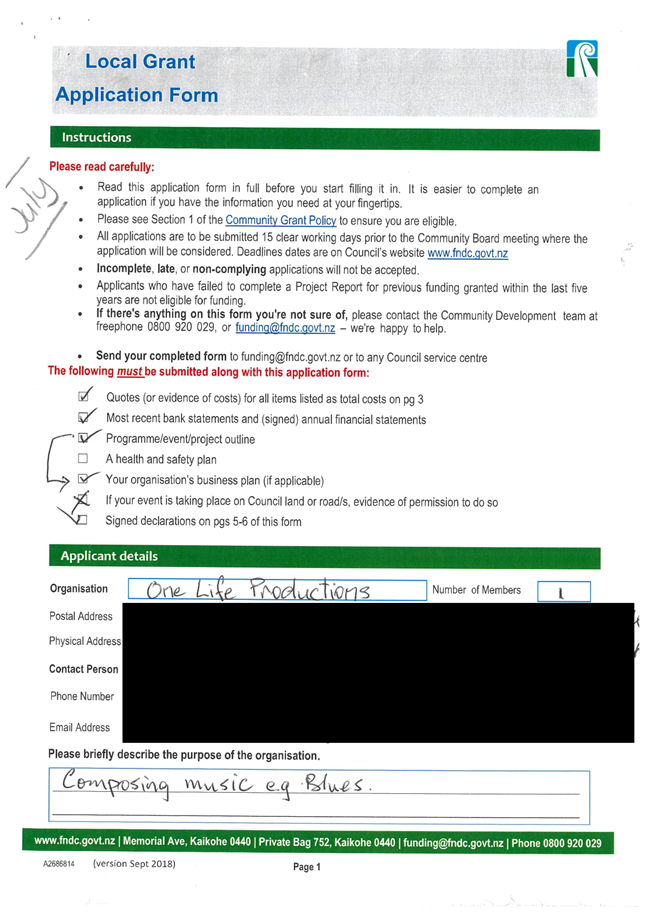
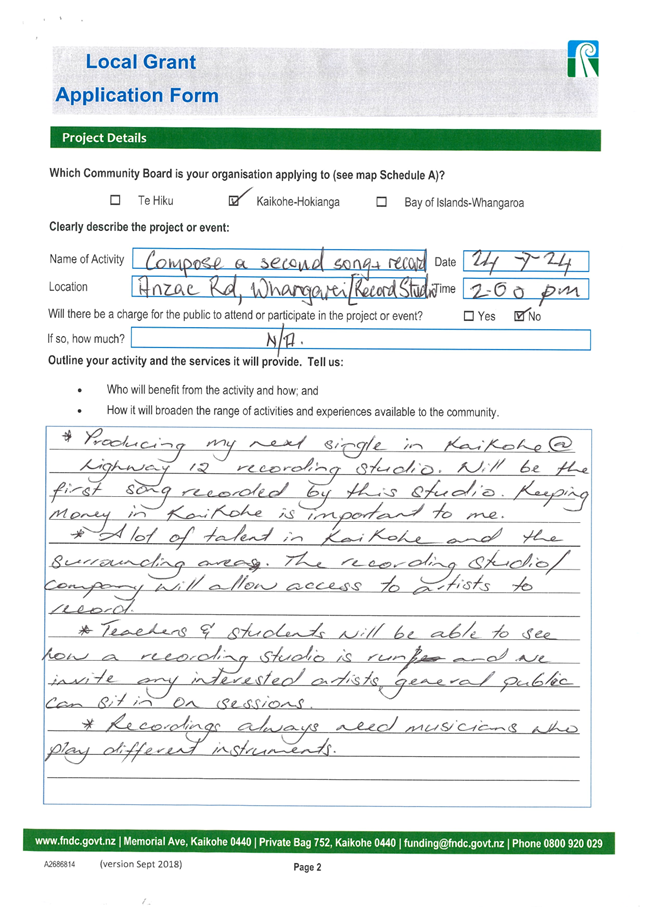
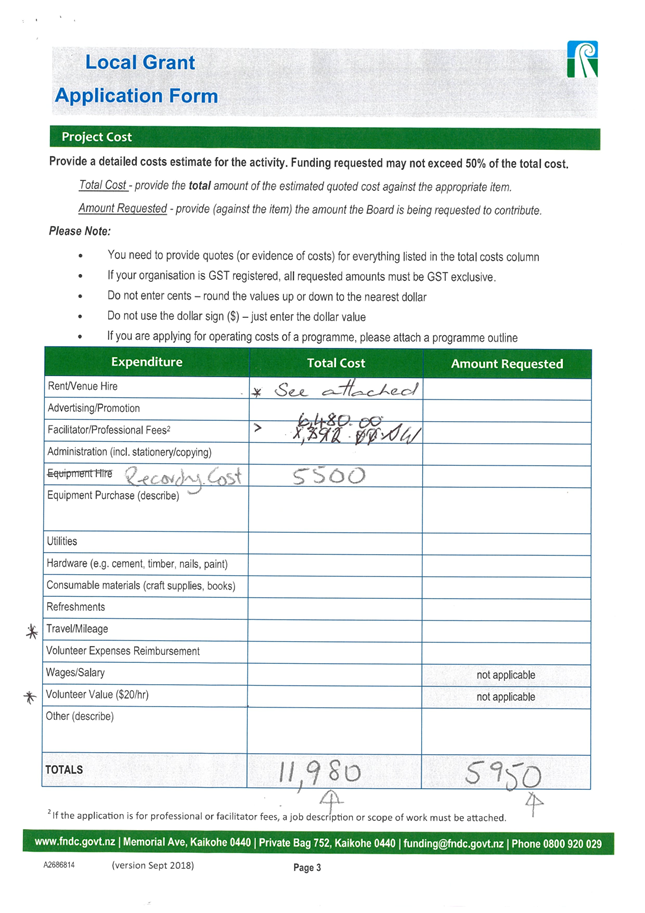
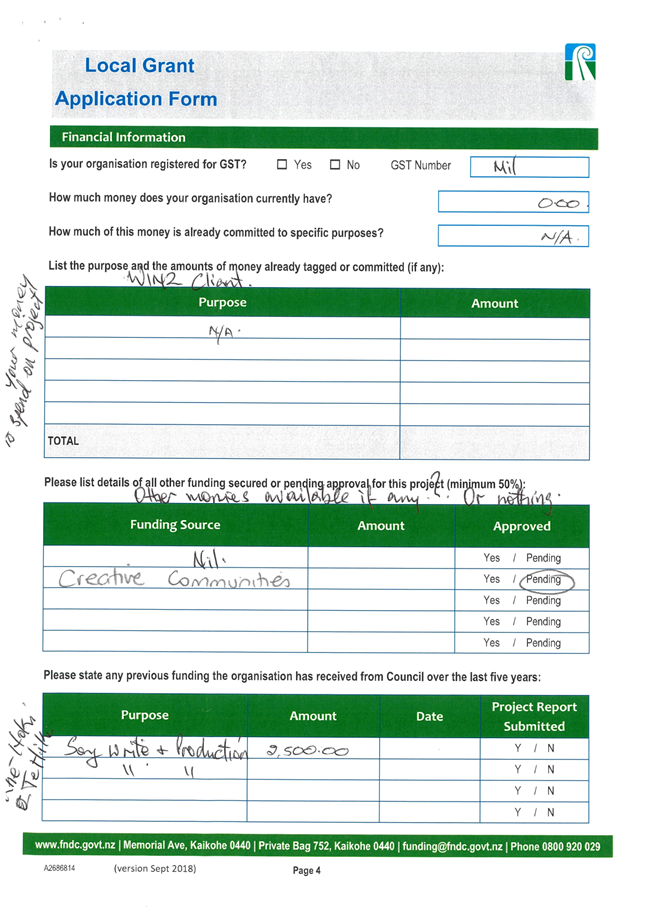


|
Kaikohe-Hokianga
Community Board Meeting Agenda
|
21 February
2025
|
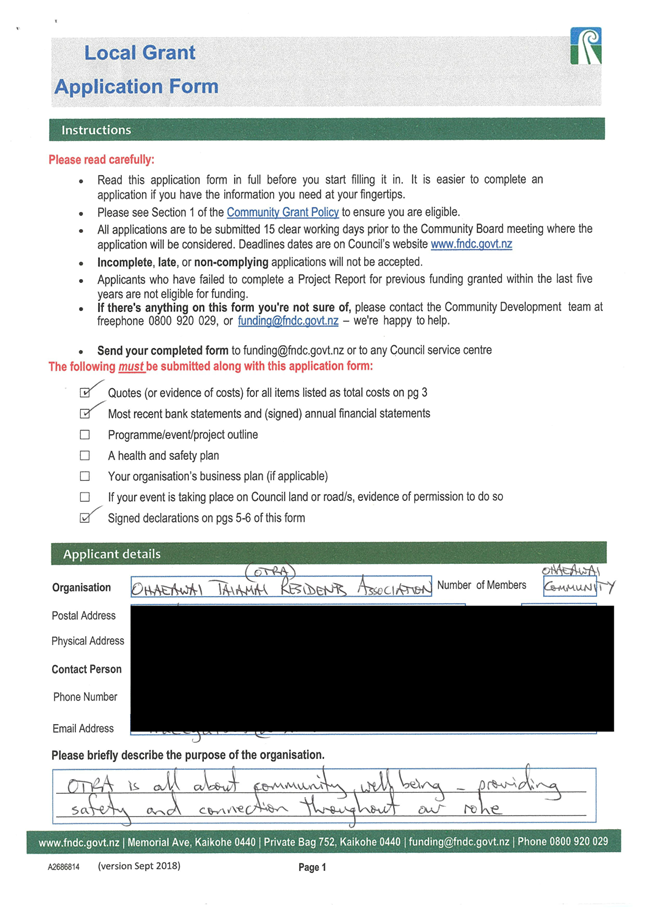
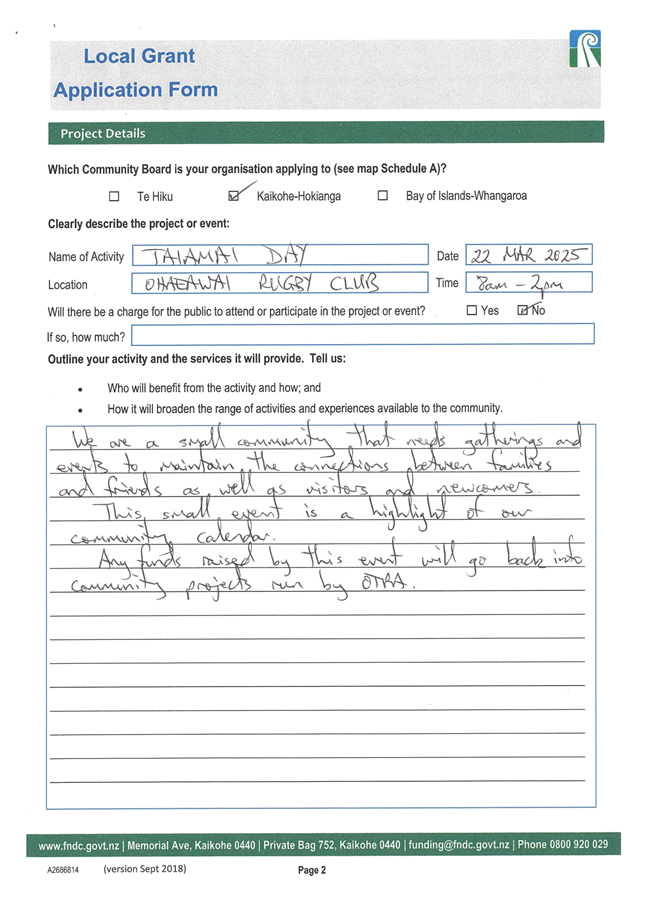
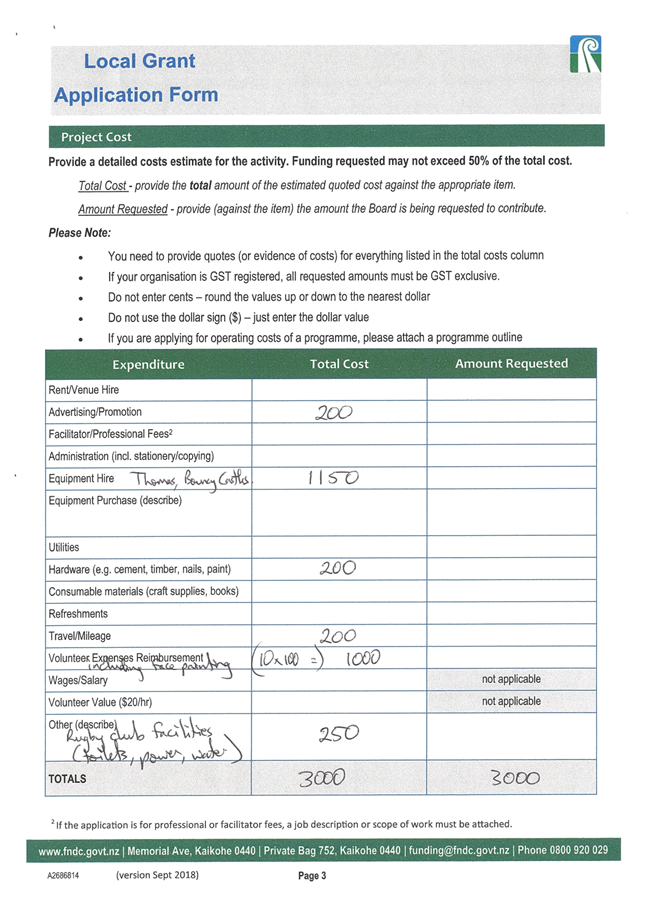
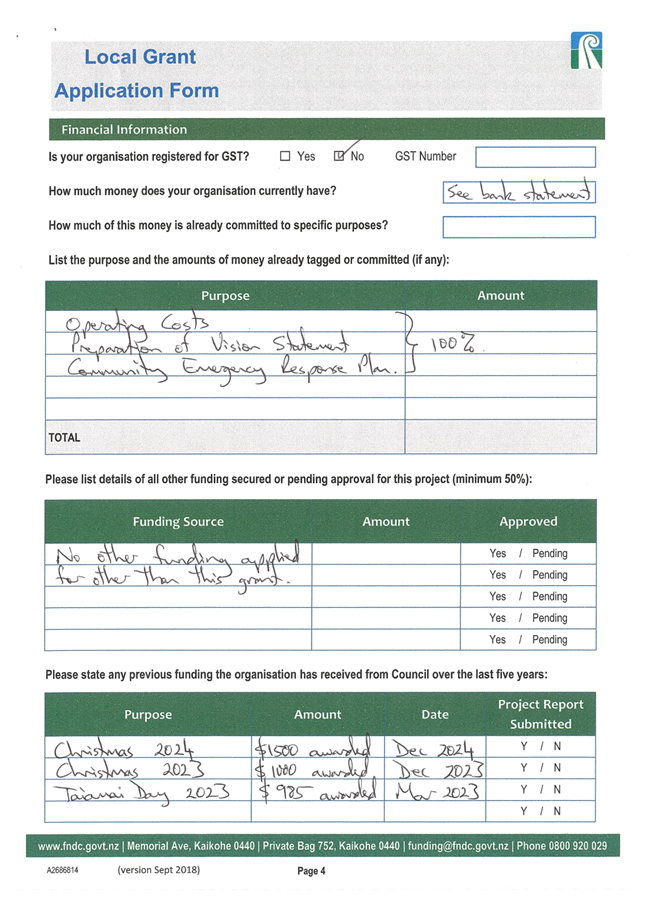
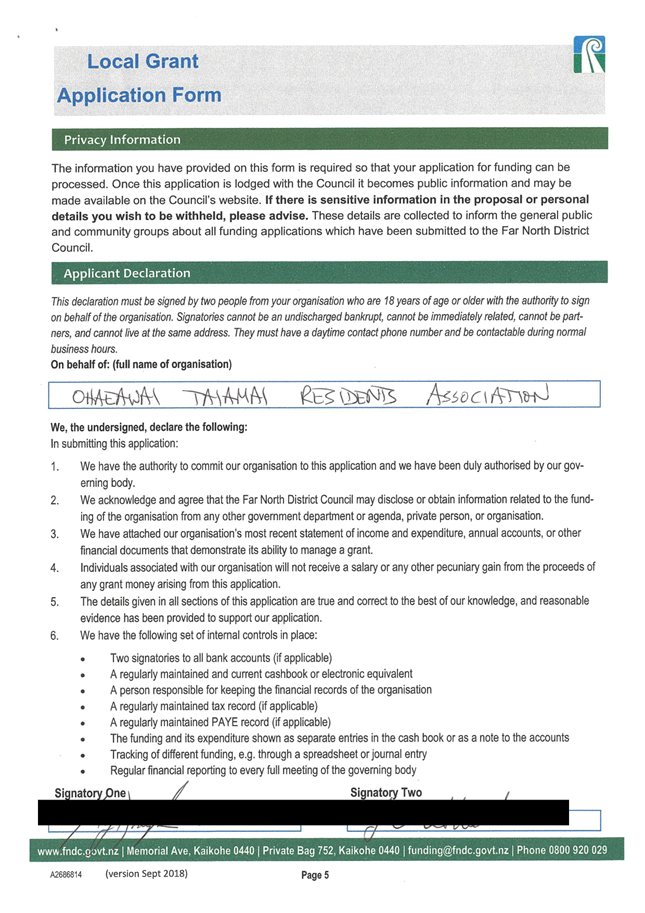

|
Kaikohe-Hokianga
Community Board Meeting Agenda
|
21 February
2025
|


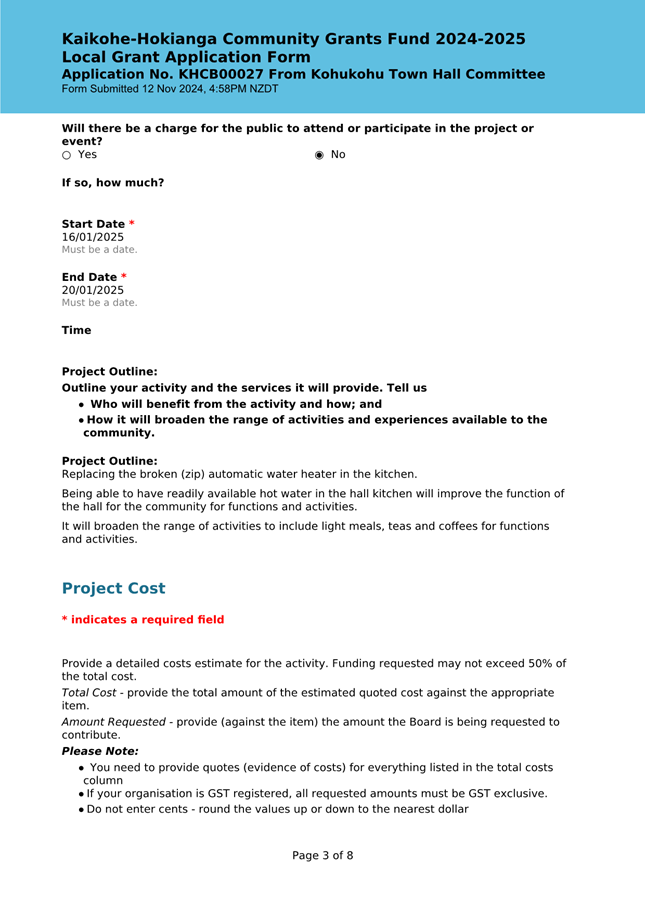
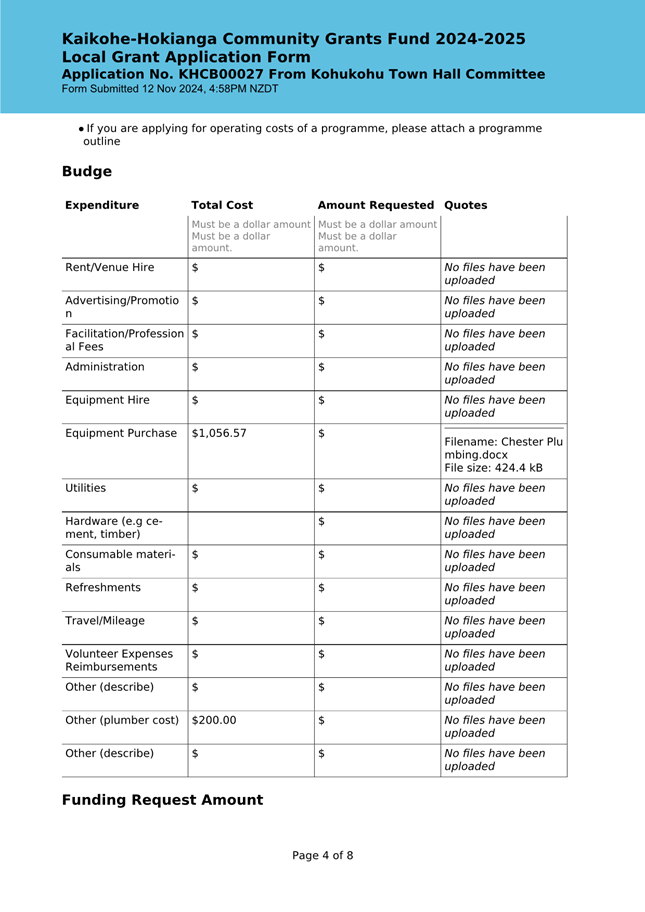
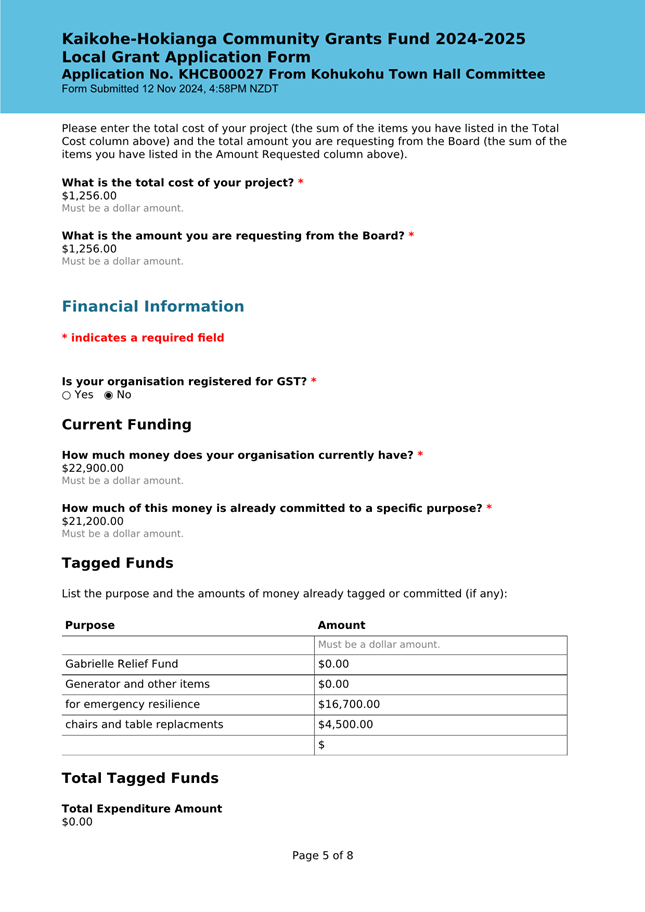
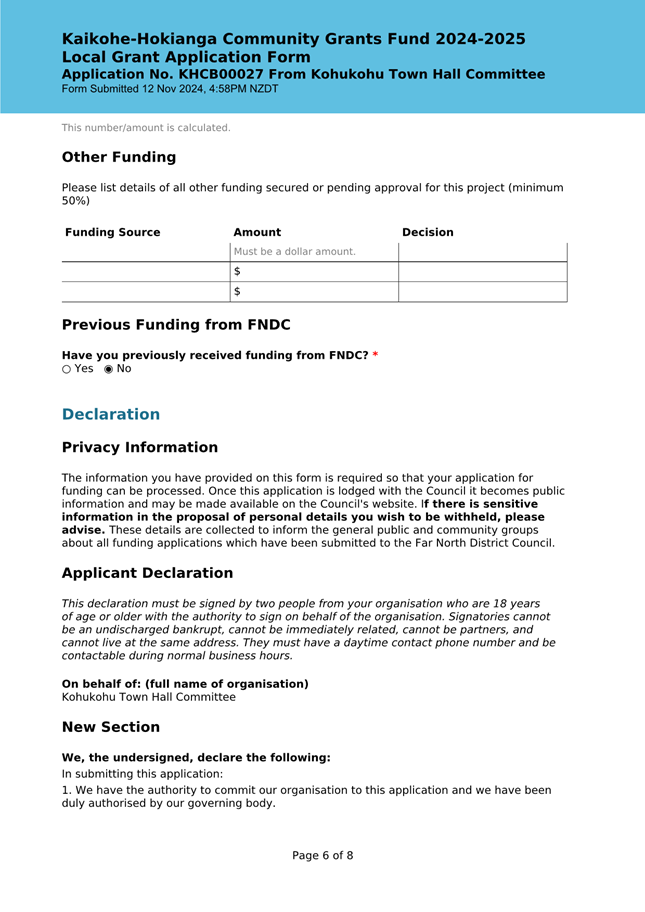
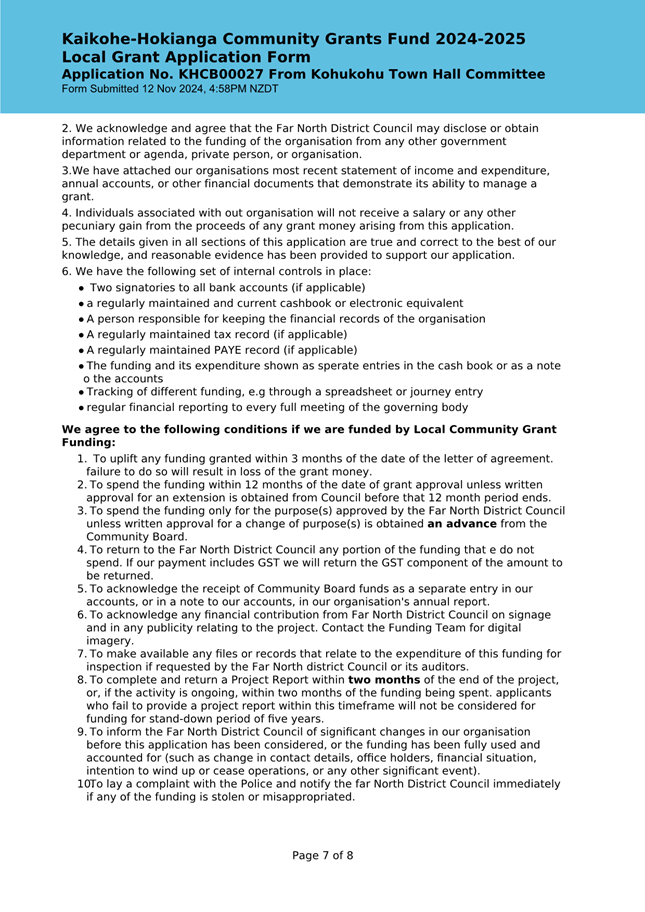
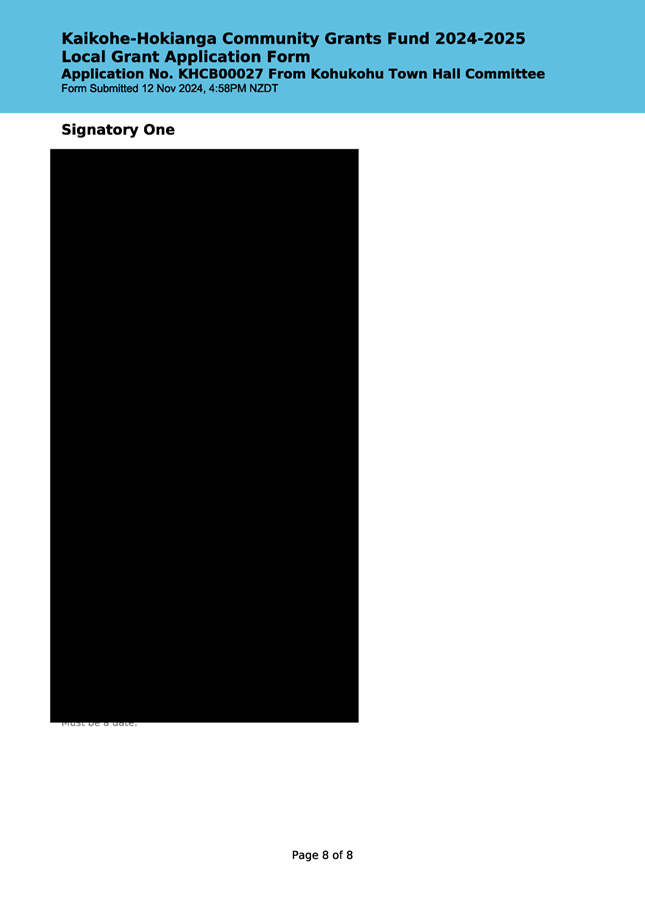
7.6 Project
Funding Reports
File
Number: A5071459
Author: Kathryn
Trewin, Funding Advisor
Authoriser: Scott
May, Manager - Stakeholder Relationships
Take Pūrongo / Purpose of the Report
Recipients of funds from the Community Board’s Local
Grant Fund must complete and submit a project report no later than two months
after the completion of their project.
|
tŪtohunga
/ Recommendation
That the Kaikohe-Hokianga Community Board note
the project reports received from:
a) Hokianga
Bowling Club
b) Hokianga
Country Music Festival
c) Kaikohe
Rugby Football and Sports Club
d) Northland
Edible Garden Trail
e) Ohaeawai
Residents and Ratepayers
f) Okaihau
Whanau House
g) R
Tucker Thompson
h) South
Hokianga Growers Market
i) St
Mary’s Church, Kohukohu
j) Taheke
Hall Committee
k) Te
Pu o Te Wheke Community Gallery
l) The
Centre – Children are Stinky
|
1) TĀhuhu kŌrero / Background
Clause 15 of the Community Grant Policy states that:
“At the completion of a project that received community funding,
recipients are required to complete a Project Report. These reports must be received
no later than two months after the completion of the project, or, if the
activity is ongoing, within two months of the funding being spent. Recipients
who do not complete this form are ineligible for Council funding for a period
of five years.”
2) matapaki me NgĀ KŌwhiringa /
Discussion and Options
Copies of the
project reports are attached for the Board’s information. Should
Board members have concerns or issues with these reports, these should be
discussed at this part of the meeting.
TAKE TŪHOTUNGA
/ REASON FOR THE RECCOMENDATION
To receive the project reports from
funding applicants in accordance with the Community Grant Policy.
3) PĀnga PŪtea me ngĀ
wĀhanga tahua / Financial Implications and Budgetary Provision
There are no financial implications or budgetary
requirements.
Āpitihanga
/ Attachments
1. Hokianga
Bowling Club - A5071793 ⇩ 
2. Hokianga
Country Music Festival - A5071771 ⇩ 
3. Kaikohe
Rugby Football Sports Club - A5071775 ⇩ 
4. Northland
Edible Garden Trail - A5071779 ⇩ 
5. Ohaeawai
Taiamai Residents and Ratepayers - A5071777 ⇩ 
6. Okaihau
Whanau House - A5071776 ⇩ 
7. R
Tucker Thompson - A5071781 ⇩ 
8. South
Hokianga Growers Market - A5071785 ⇩ 
9. St
Marys Church - A5071787 ⇩ 
10. Taheke
Hall - A5071783 ⇩ 
11. Te
Pu o Te Wheke Gallery - A5071789 ⇩ 
12. The
Centre - Children are Stinky - A5071791 ⇩ 
HŌTAKA TAKE ŌKAWA / COMPLIANCE SCHEDULE:
Full consideration has been given to the provisions of the
Local Government Act 2002 S77 in relation to decision making, in particular:
1. A
Local authority must, in the course of the decision-making process,
a) Seek
to identify all reasonably practicable options for the achievement of the
objective of a decision; and
b) Assess
the options in terms of their advantages and disadvantages; and
c) If
any of the options identified under paragraph (a) involves a significant
decision in relation to land or a body of water, take into account the
relationship of Māori and their culture and traditions with their
ancestral land, water sites, waahi tapu, valued flora and fauna and other
taonga.
2. This
section is subject to Section 79 - Compliance with procedures in relation to
decisions.
|
He
Take Ōkawa / Compliance Requirement
|
Aromatawai
Kaimahi / Staff Assessment
|
|
State the level of significance
(high or low) of the issue or proposal as determined by the Council’s
Significance and Engagement Policy
|
This is a matter of low
significance.
|
|
State the relevant Council
policies (external or internal), legislation, and/or community outcomes (as
stated in the LTP) that relate to this decision.
|
Community Grant Policy.
|
|
State whether this issue or
proposal has a District wide relevance and, if not, the ways in which the
appropriate Community Board’s views have been sought.
|
It is the responsibility of each
Community Board to confirm the funding that they allocated has been spent
correctly.
|
|
State the possible implications for Māori
and how Māori have been provided with an opportunity to contribute to
decision making if this decision is significant and relates to land and/or
any body of water.
|
There are no implications on Māori in confirming the project
reports. Any implications on Māori arising from matters included in
project reports should be considered as part of the relevant report.
|
|
Identify persons likely to be
affected by or have an interest in the matter, and how you have given
consideration to their views or preferences (for example – youth, the
aged and those with disabilities).
|
This report is asking for the
project reports to be approved, any interests that affect other people should
be considered as part of the individual reports.
|
|
State the financial implications
and where budgetary provisions have been made to support this decision.
|
There are no financial
implications or the need for budgetary provision.
|
|
Chief Financial Officer review.
|
The Chief Financial Officer has
not reviewed this report.
|
|
Kaikohe-Hokianga
Community Board Meeting Agenda
|
21 February
2025
|
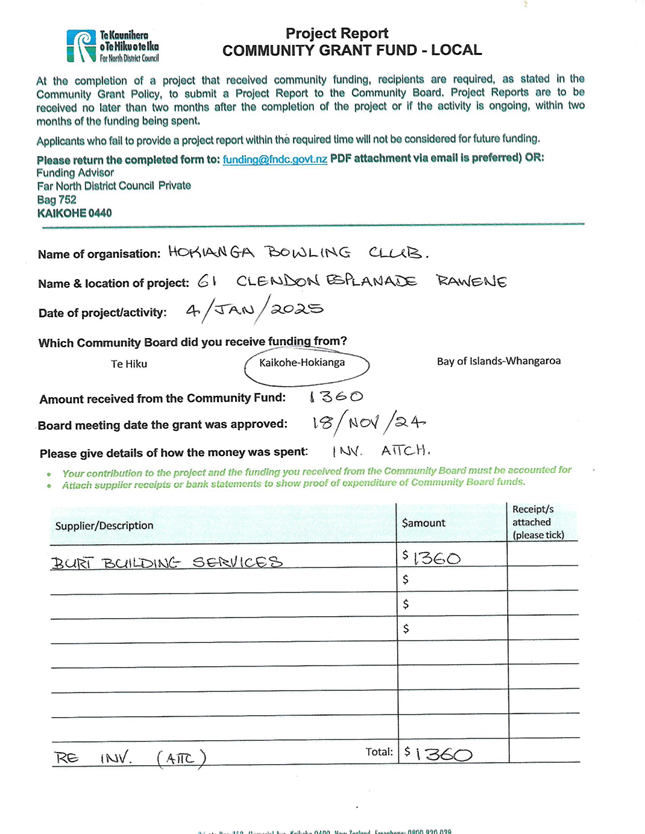
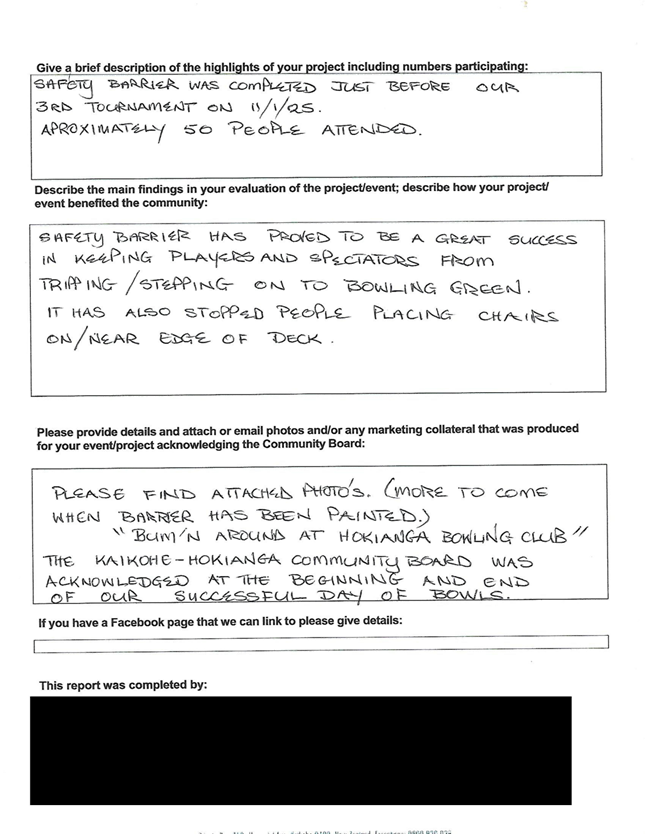
|
Kaikohe-Hokianga
Community Board Meeting Agenda
|
21 February
2025
|
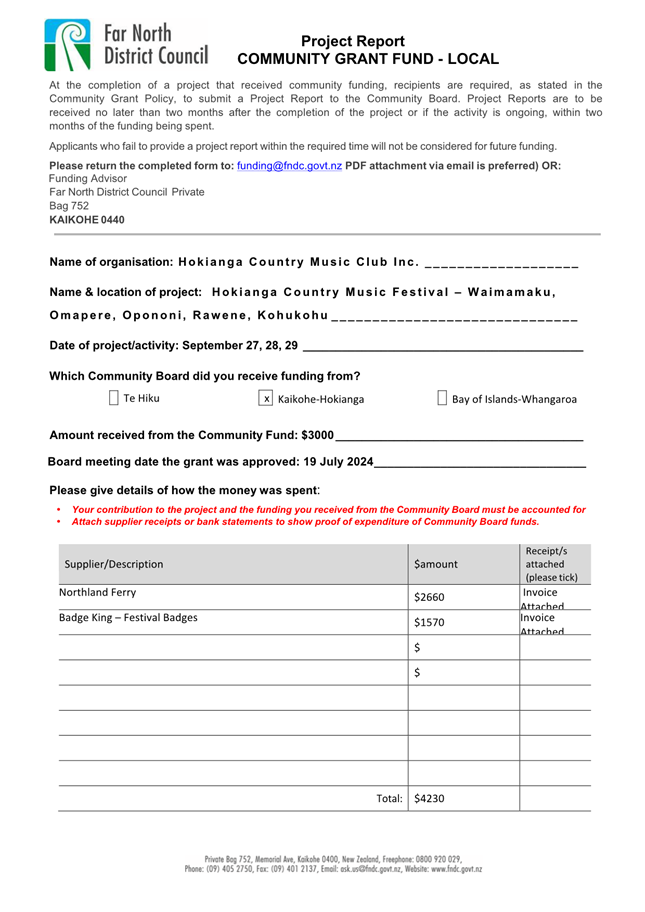
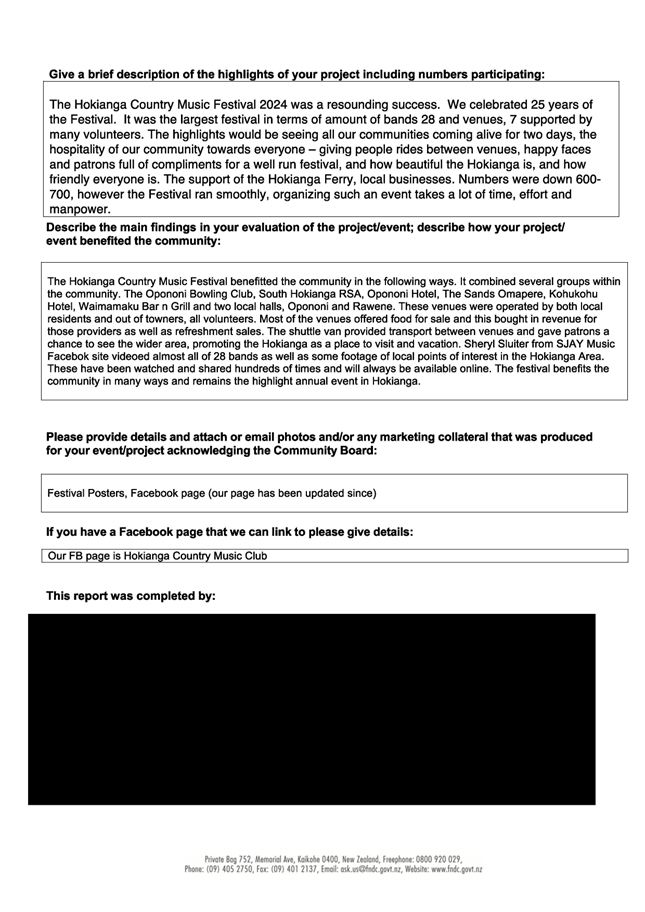
|
Kaikohe-Hokianga
Community Board Meeting Agenda
|
21 February
2025
|
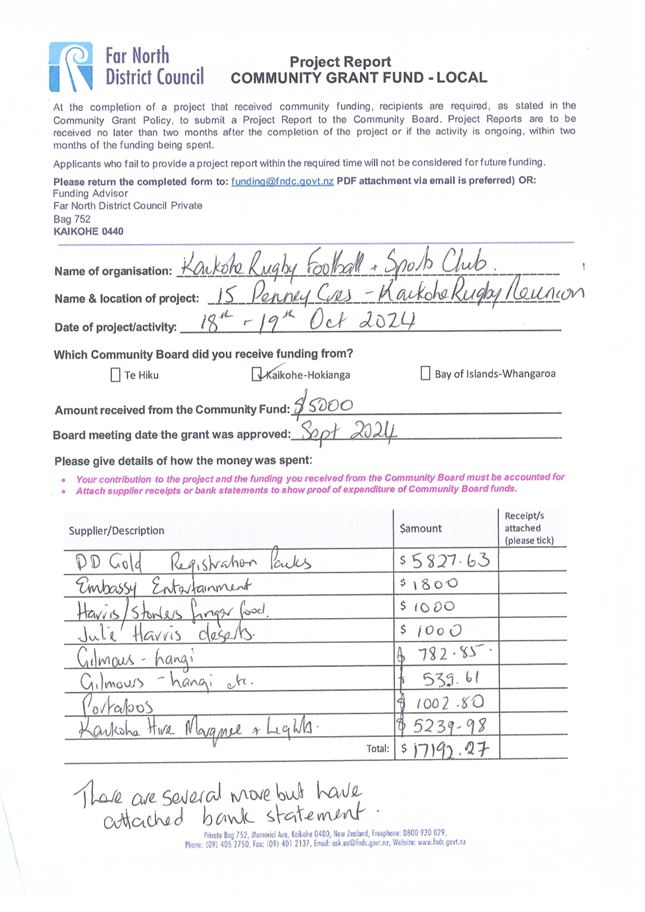
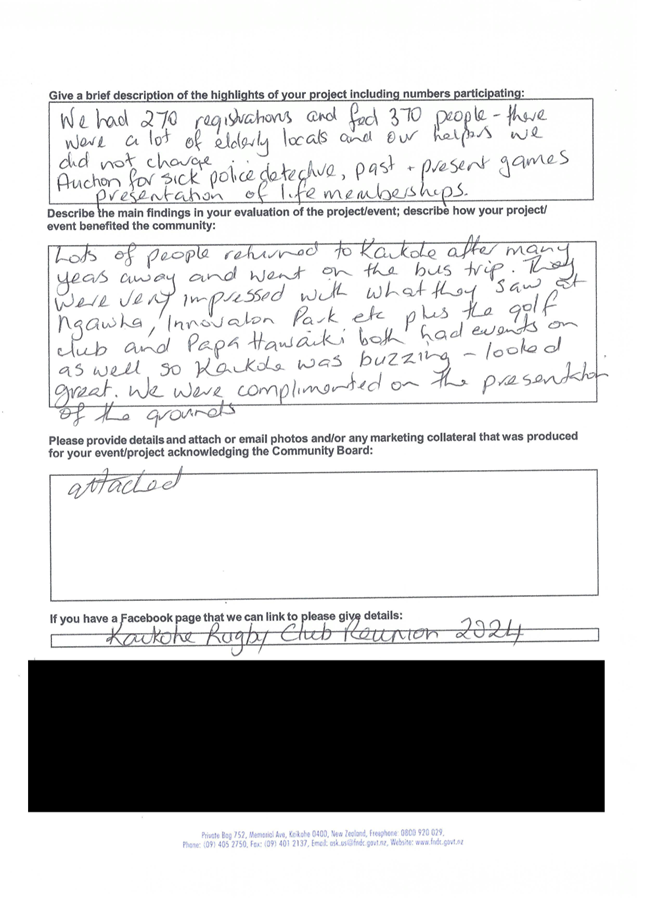
|
Kaikohe-Hokianga
Community Board Meeting Agenda
|
21 February
2025
|
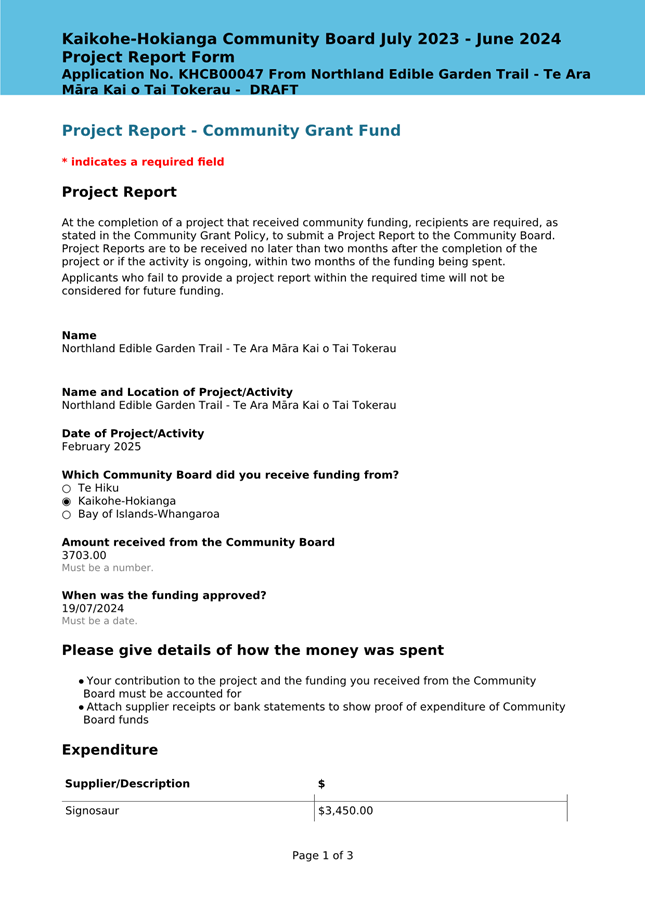
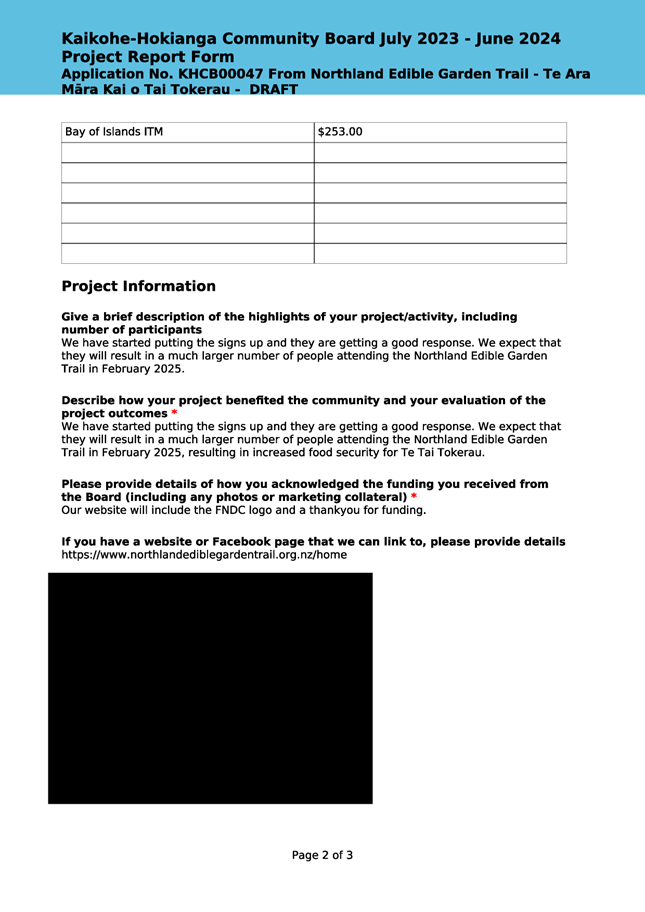
|
Kaikohe-Hokianga
Community Board Meeting Agenda
|
21 February
2025
|
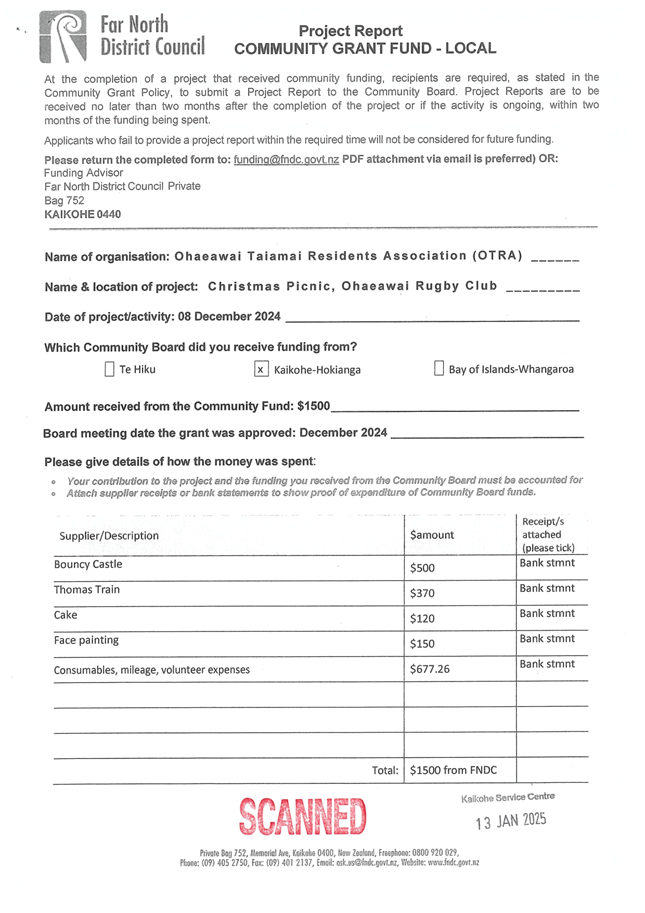
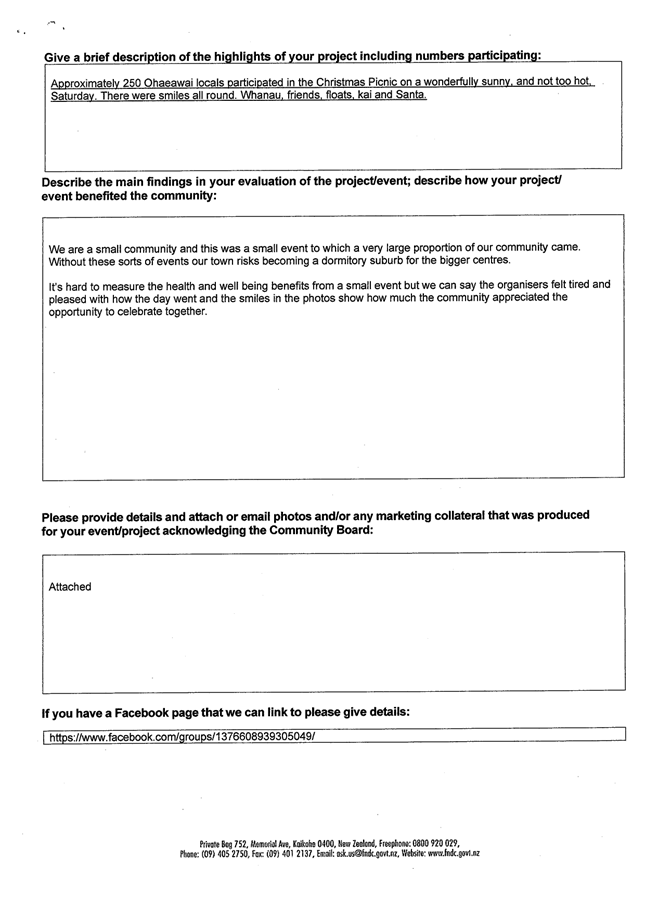
|
Kaikohe-Hokianga
Community Board Meeting Agenda
|
21 February
2025
|
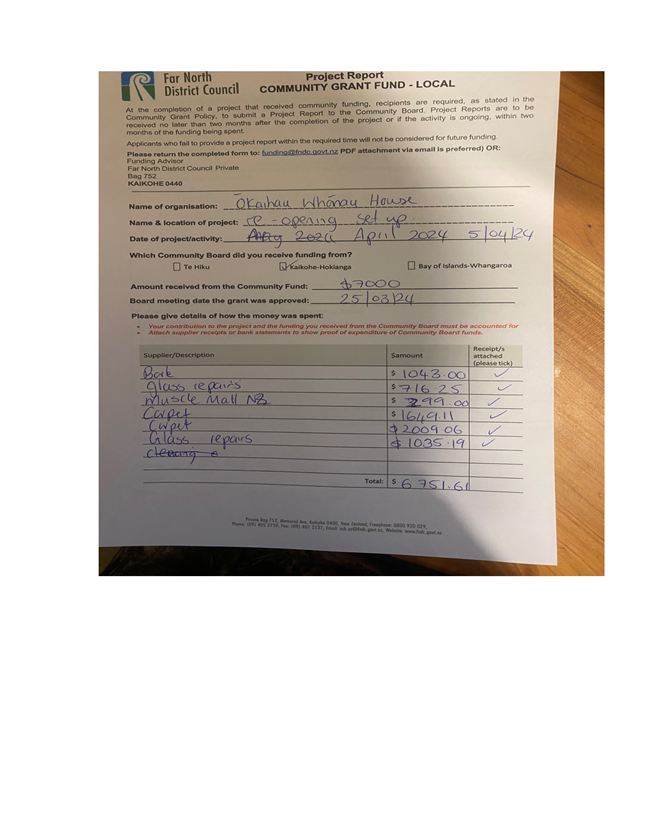
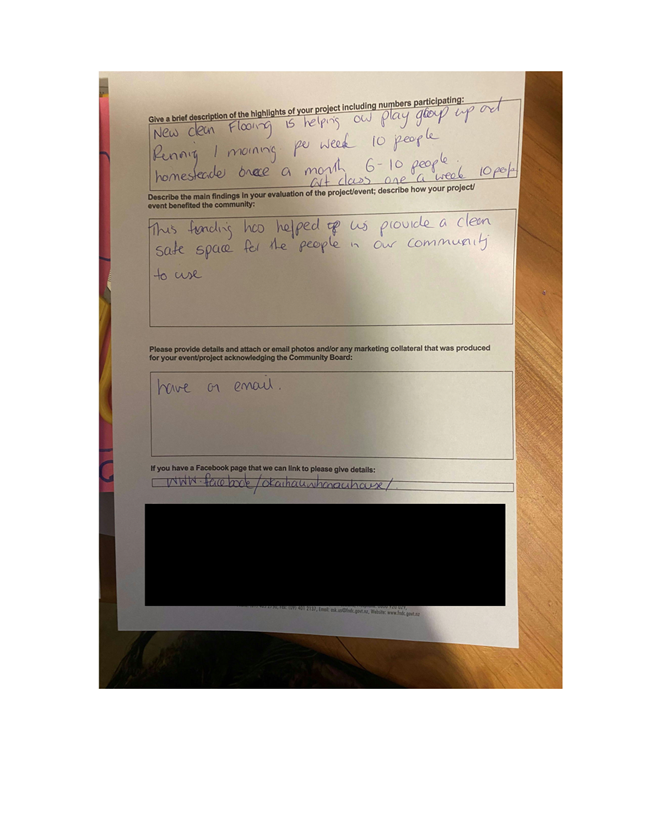
|
Kaikohe-Hokianga
Community Board Meeting Agenda
|
21 February
2025
|
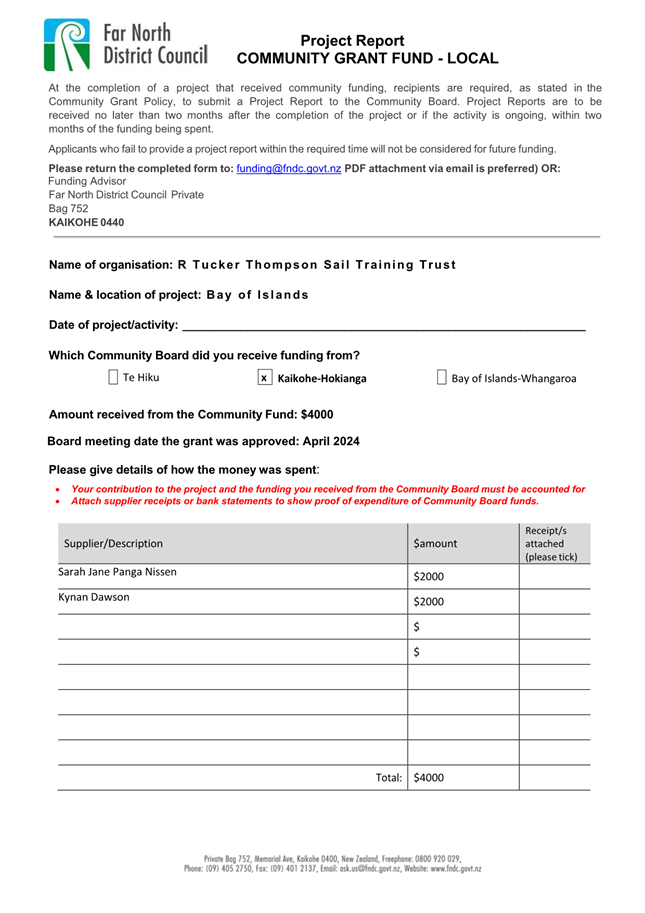
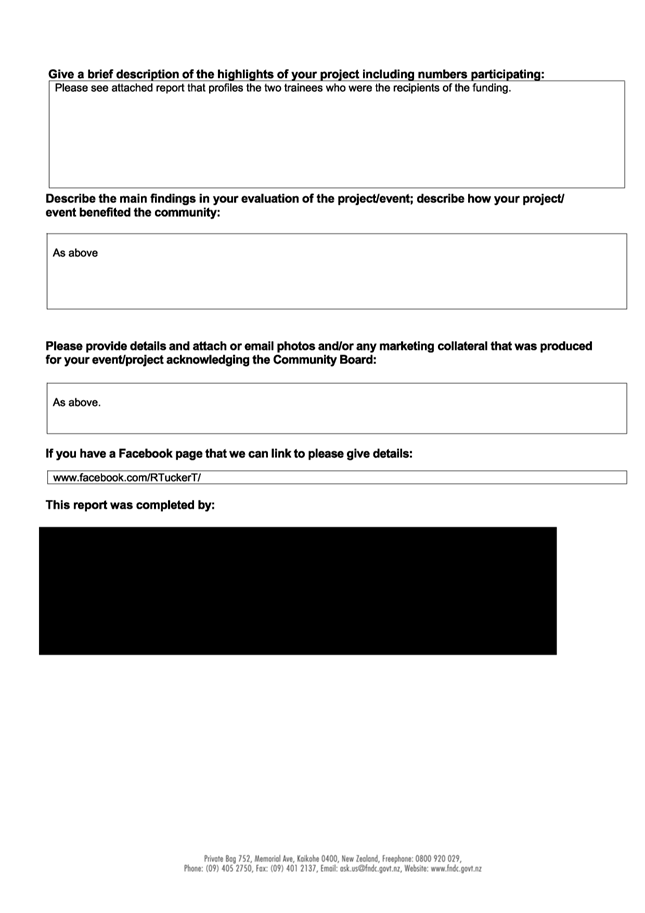
|
Kaikohe-Hokianga
Community Board Meeting Agenda
|
21 February
2025
|
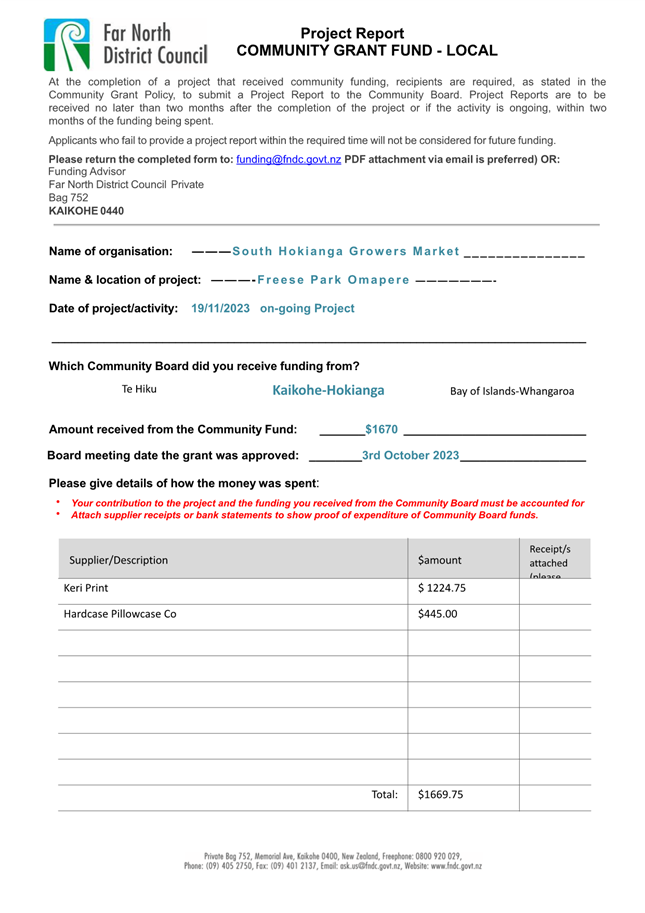
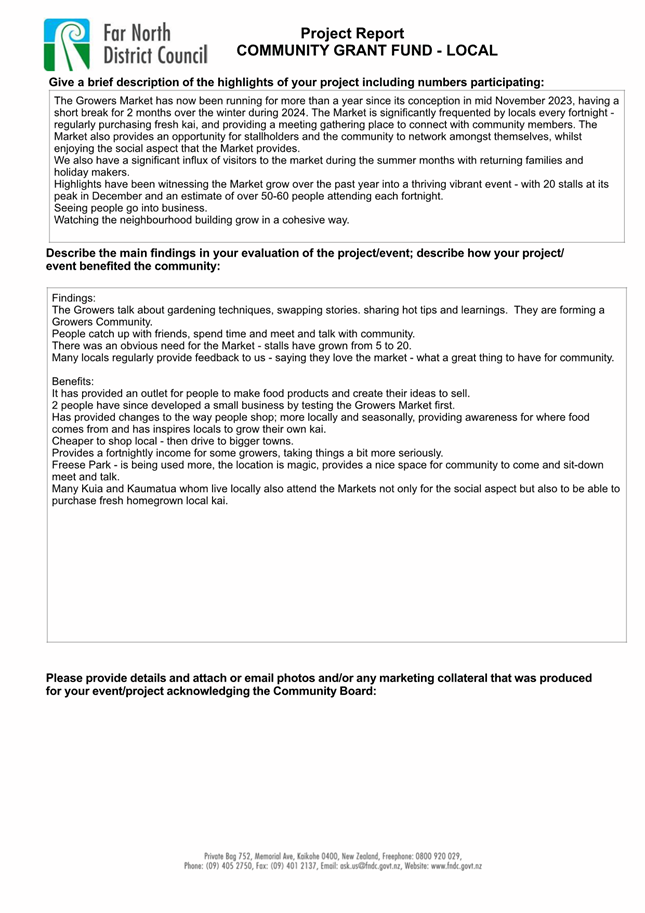
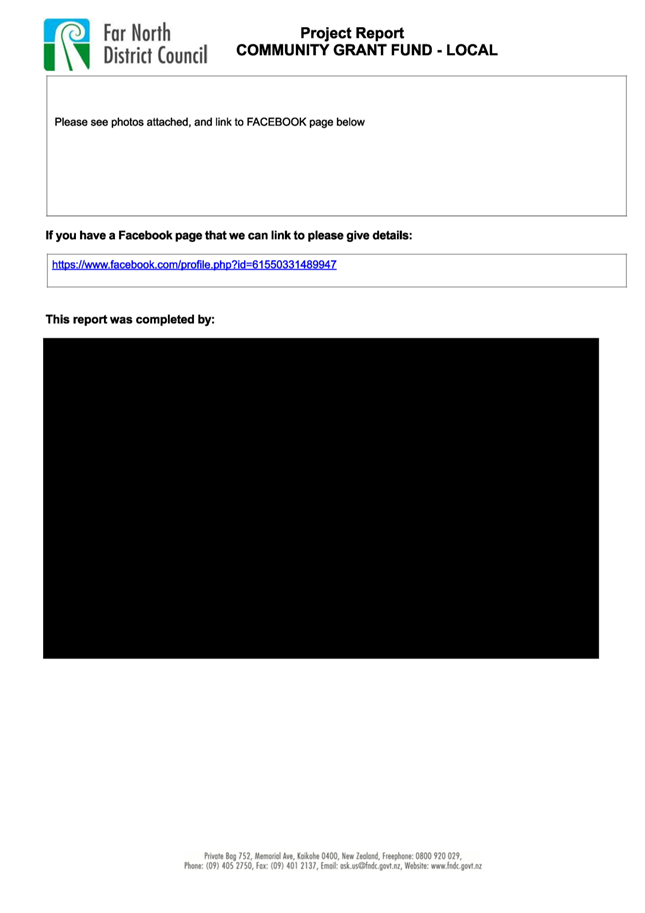
|
Kaikohe-Hokianga
Community Board Meeting Agenda
|
21 February
2025
|
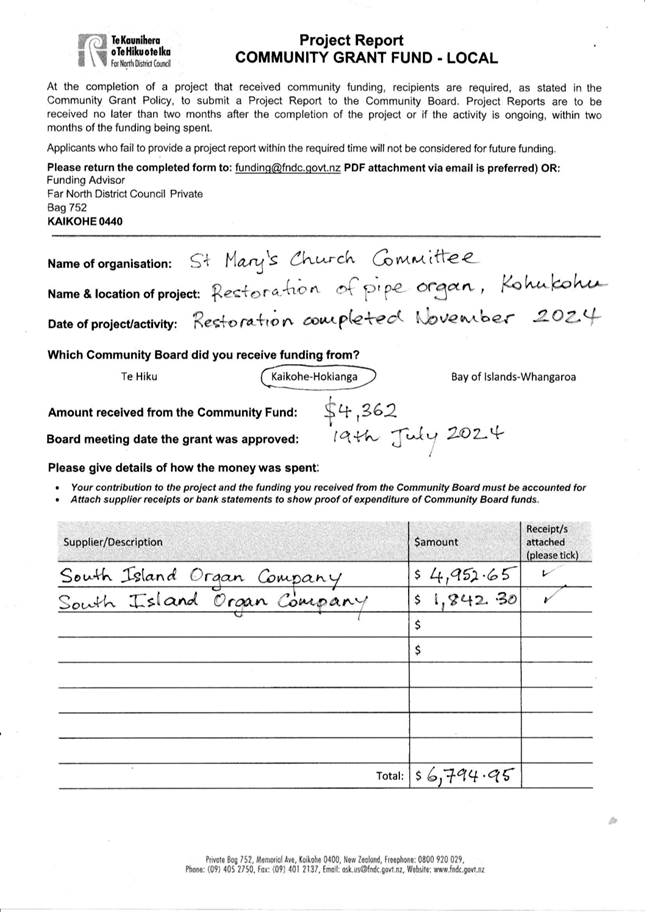
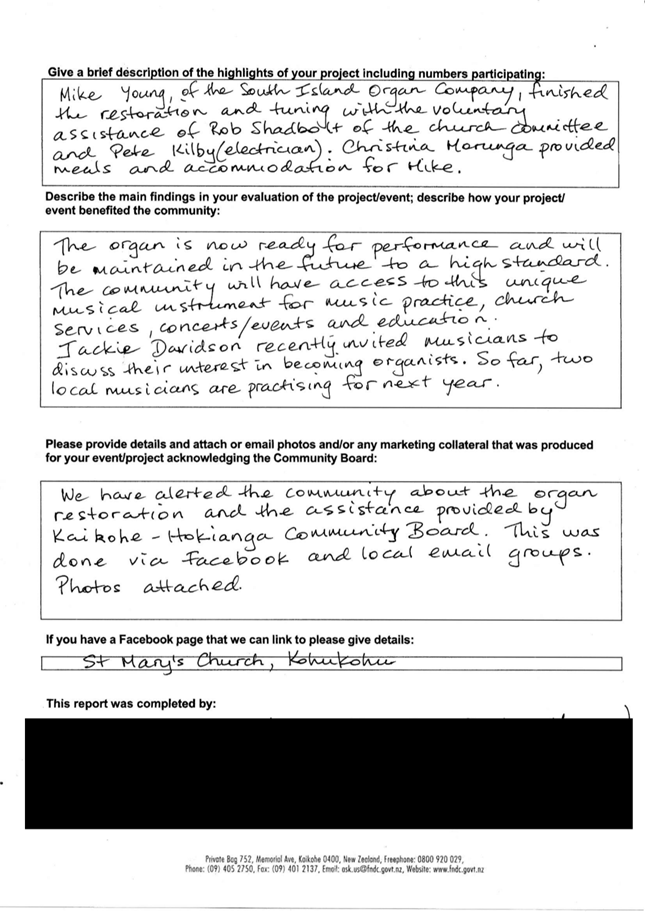
|
Kaikohe-Hokianga
Community Board Meeting Agenda
|
21 February
2025
|
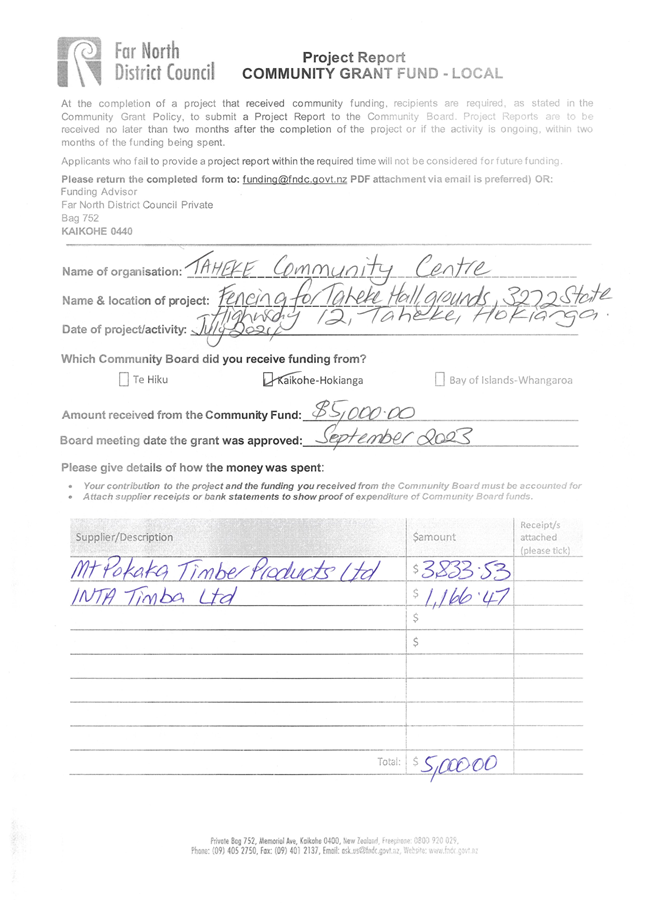
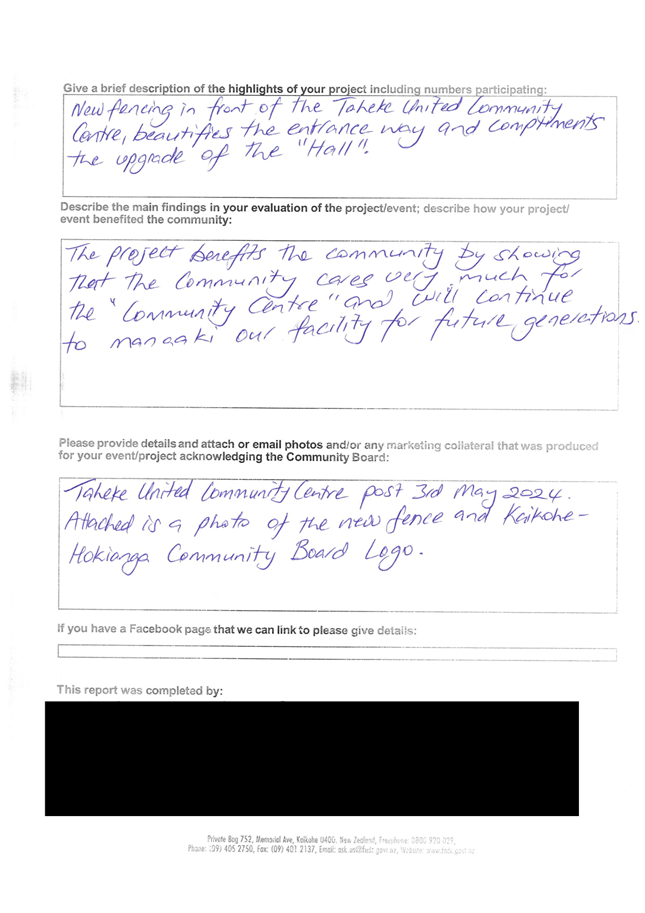
|
Kaikohe-Hokianga
Community Board Meeting Agenda
|
21 February
2025
|
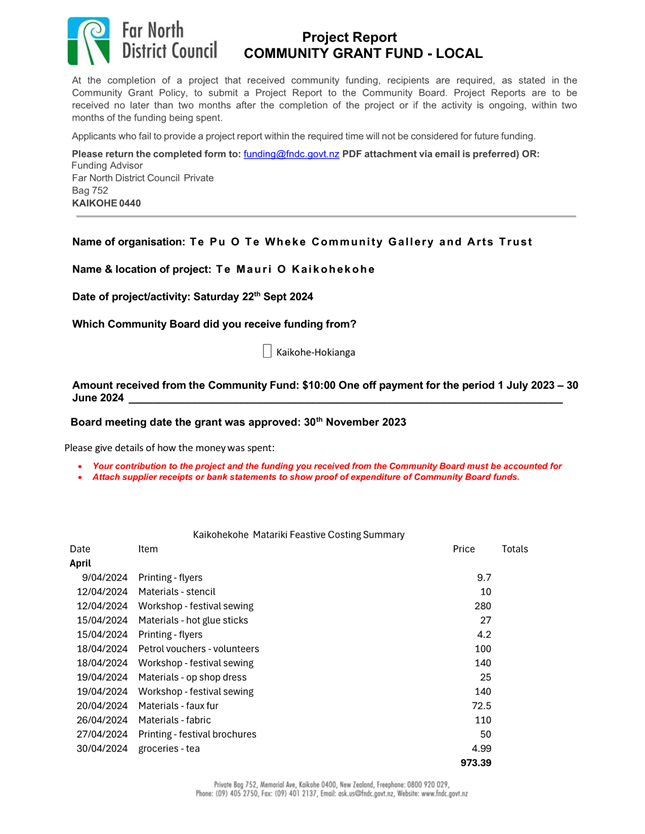
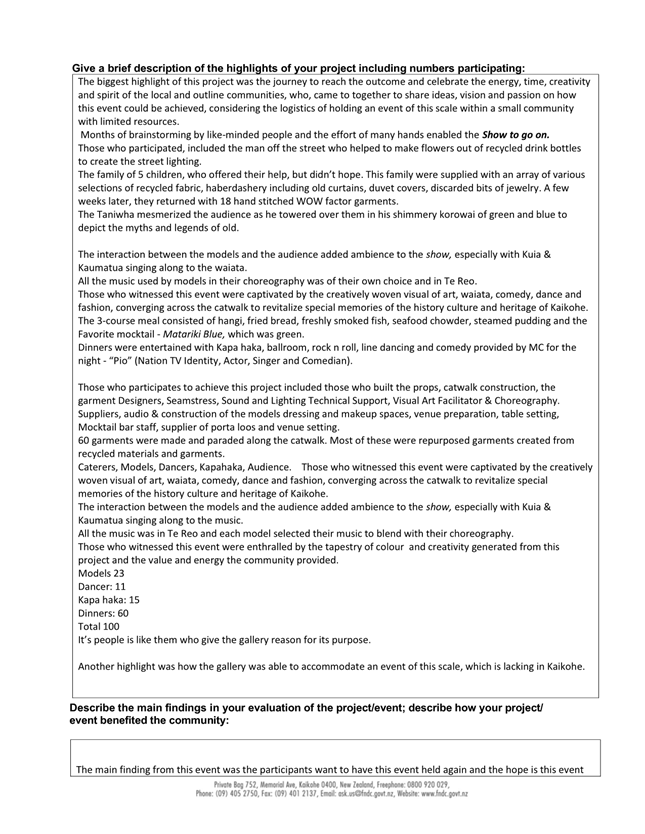

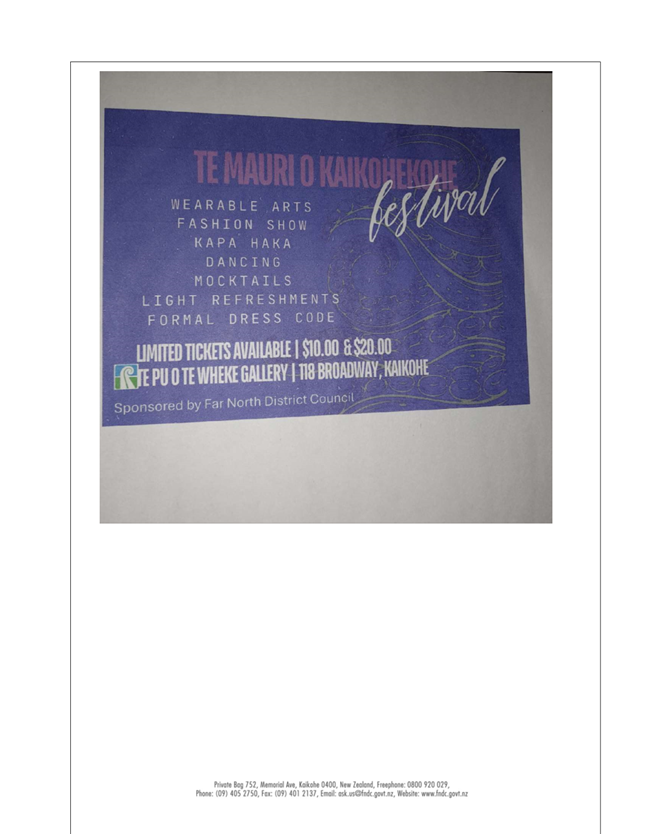
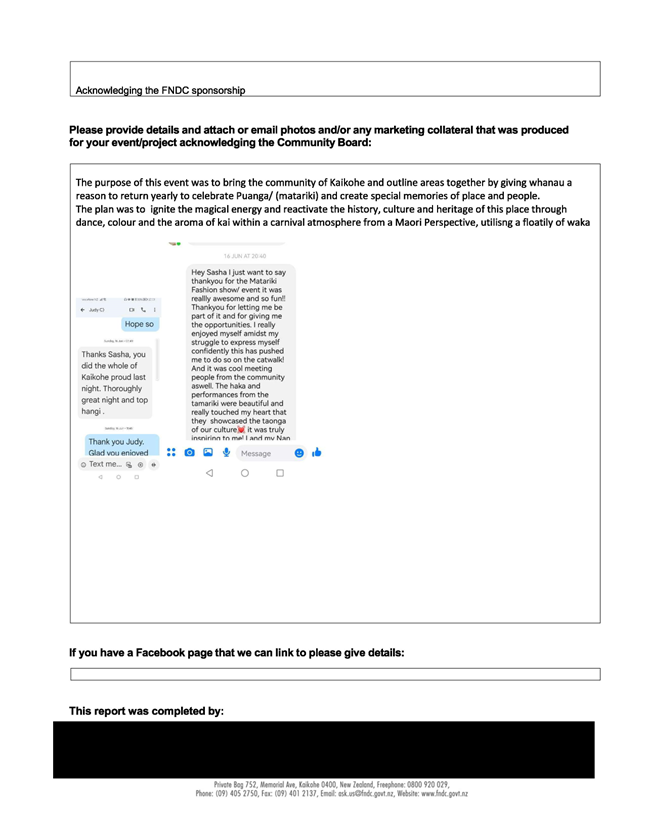
|
Kaikohe-Hokianga
Community Board Meeting Agenda
|
21 February
2025
|
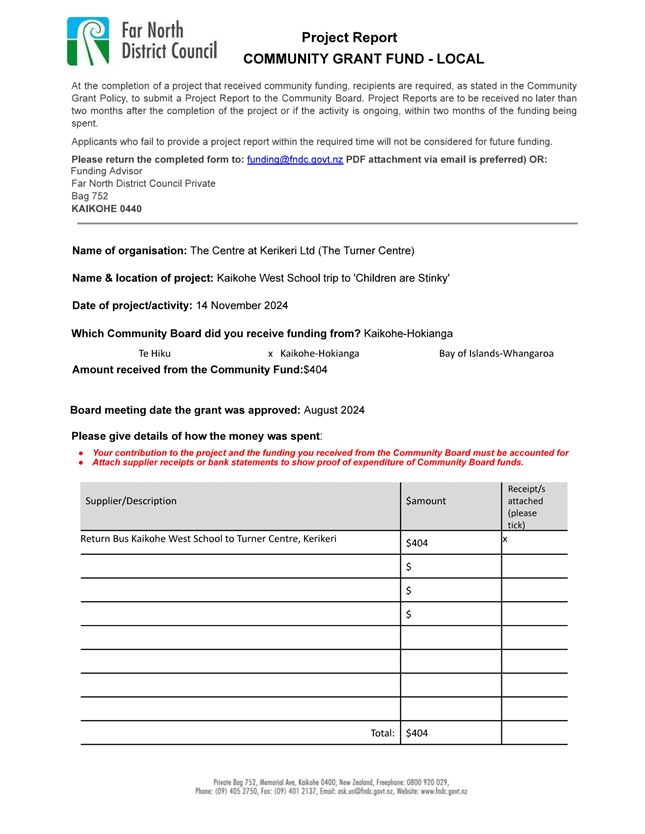
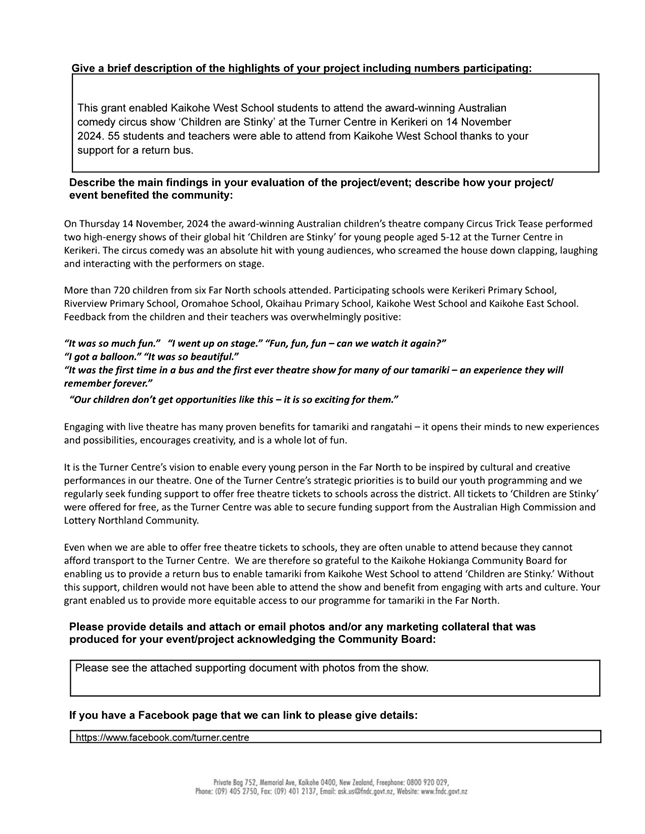
7.7 New
Road Name: 12-16 Mangakahia Road, Kaikohe
File
Number: A5019336
Author: Trinity
Lane, Finance and Customer Services Administrator
Authoriser: Mary
Moore, Manager - Infrastructure Services
Take
Pūrongo / Purpose of the Report
That Kaikohe-Hokianga Community Board name the right of way
currently located at 12-16 Mangakahia Road, Kaikohe.
WhakarĀpopoto
matua / Executive Summary
· A road naming application to name a right of way located at 12-16
Mangakahia Road, Kaikohe was received.
· Community Boards have the delegated authority to allocate names for
previously unnamed private road, reserves and other community facilities.
|
tŪtohunga
/ Recommendation
That the Kaikohe-Hokianga Community Board name a
right of way currently located at 12-16 Mangakahia Road, Kaikohe, “Te
Ara Tika”.
|
1)
TĀhuhu kŌrero / Background
An application was submitted by Gemscott Kaikohe Ltd on the
2nd of December 2024 to name a road in which 13 dwellings will be
built.
The applicant proposed “Te Ara Tika” as its
name. This name was provided to the Applicant by Te Rūnanga-Ā-Iwi-Ō-Ngāpuhi.
The proposed name was sent to Land Information New Zealand
for approval. A response was received confirming the proposed name is
acceptable for use in this area and can be approved as per the Addressing
Standards 2011.
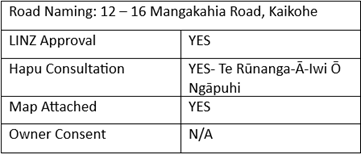
2) matapaki me
NgĀ KŌwhiringa / Discussion and Options
The proposed name for this development is “Te Ara
Tika.”
TAKE TŪTOHUNGA
/ REASON FOR THE RECOMMENDATION
The road name recommended in this report is not a duplicate
of any other road names in the district, therefore meeting the criteria set
down in the Council’s Road Naming and Property Numbering Policy and the
Australian/New Zealand Addressing Standard - AS/NZS 4819.2011.
3) PĀnga
PŪtea me ngĀ wĀhanga tahua / Financial Implications and
Budgetary Provision
There will be no financial implications to Council relating
to the installation of the road name signs (blue on white background name
blade). The cost of the road signage and installation will be met by the
applicant.
Āpitihanga / Attachments
1. Map
- A5019312 ⇩ 
Hōtaka Take Ōkawa / Compliance Schedule:
Full consideration has been given to the provisions of the
Local Government Act 2002 S77 in relation to decision making, in particular:
1. A Local authority
must, in the course of the decision-making process,
a) Seek to identify all
reasonably practicable options for the achievement of the objective of a
decision; and
b) Assess the options in
terms of their advantages and disadvantages; and
c) If any of the options
identified under paragraph (a) involves a significant decision in relation to
land or a body of water, take into account the relationship of Māori and
their culture and traditions with their ancestral land, water sites, waahi tapu,
valued flora and fauna and other taonga.
2. This section is
subject to Section 79 - Compliance with procedures in relation to decisions.
|
He Take Ōkawa / Compliance
Requirement
|
Aromatawai Kaimahi / Staff
Assessment
|
|
State the level of significance (high or low) of the
issue or proposal as determined by the Council’s
Significance and Engagement Policy
|
This is the naming of this right of way and is of low
significance.
|
|
State the relevant Council policies (external or
internal), legislation, and/or community outcomes (as stated in the LTP) that
relate to this decision.
|
Road Naming and
Property Numbering Policy #2125 and Australia/New Zealand Urban and Rural
Addressing Standards 4819.2011.
|
|
State whether this issue or proposal has a District wide
relevance and, if not, the ways in which the appropriate Community
Board’s views have been sought.
|
No district wide relevance and the Community Board
have the delegated authority to approve road names.
|
|
State the
possible implications for Māori and how Māori have been provided
with an opportunity to contribute to decision making if this decision is
significant and relates to land and/or any body of water.
State the
possible implications and how this report aligns with Te Tiriti o Waitangi /
The Treaty of Waitangi.
|
Te Rūnanga-Ā-Iwi-Ō-Ngāpuhi has
recommended the name for this development.
|
|
Identify persons likely to be affected by or have an
interest in the matter, and how you have given consideration to their views
or preferences (for example – youth, the aged and those with
disabilities).
|
This is a new subdivision. All lots are owned by Te
Rūnanga-Ā-Iwi-Ō-Ngāpuhi Trust Board.
|
|
State the financial implications and where budgetary
provisions have been made to support this decision.
|
There will be no financial implications to Council
relating to the installation of the road name signs (blue on white background
name blade). The cost of the road signage and installation will be met by the
Applicant.
|
|
Chief Financial Officer review.
|
The Chief Financial Officer has not reviewed this
report.
|
|
Kaikohe-Hokianga
Community Board Meeting Agenda
|
21 February
2025
|
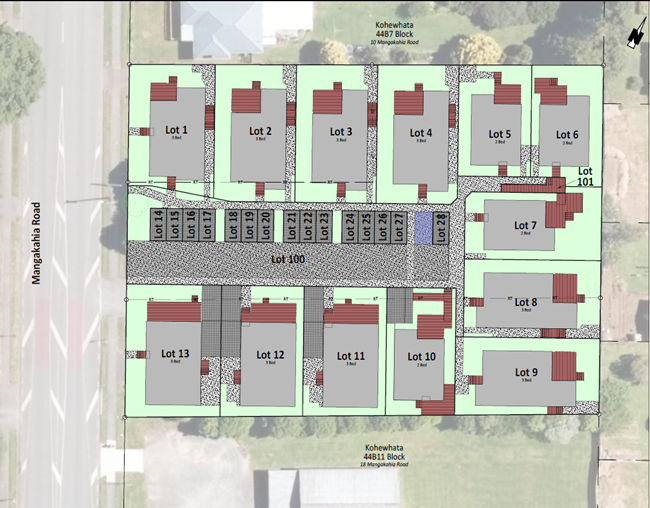
7.8 Chairperson
and Members Reports
File
Number: A4536072
Author: Melissa
Wood, Community Board Coordinator
Authoriser: Scott
May, Manager - Stakeholder Relationships
TE TAKE PŪRONGO / Purpose of the Report
The report provides feedback to the community on matters of
interest or concern to the Community Board.
|
NGĀ
TŪTOHUNGA / Recommendation
That the Kaikohe-Hokianga Community Board note the
December 2024 - January 2025 member reports from Chair Chicky Rudkin, and
Deputy Chair Tanya Filia.
|
TE tĀHUHU KŌRERO / Background
The Local Government Act 2002 Part
4 Section 52 states that the role of a Community Board is to represent, and act
as an advocate for the interests of its community.
TE MATAPAKI ME NGĀ KŌWHIRINGA /
Discussion and Next Steps
Community Boards are required to
consider and report on any matters of concern or interest to the Community
Board, maintain an overview of services provided to the community and
communicate with community organisations and special interest groups within the
community.
The reports from the Chairperson
and Members provide information to community on these requirements. They
also provide Request for Service (RFS) information on issues of interest or
concern to the Community Board, providing a reference for further enquiry on
the progress of the matters raised. The report from the Chairperson and members
are attached.
Resource Consents have been emailed
to community board members. Members have five days to send feedback in relation
to a resource consent. Members will be expected to include these details in
their member reports going forward.
REASON FOR THE RECOMMENDATION
The reason for the recommendation
is to provide information to the Community on the work that has been undertaken
by the Chairperson and Members on its behalf.
NGĀ PĀNGA PŪTEA ME NGĀ WĀHANGA
TAHUA / Financial Implications and Budgetary Provision
There are no financial implications
or the need for budgetary provision as a result of this report.
ngĀ
Āpitihanga / Attachments
1. KHCB
Chair Rudkin report Jan 2025 - A5064493 ⇩ 
2. KHCB
Deputy Chair Filia report Jan 2025 - A5064491 ⇩ 
|
Kaikohe-Hokianga
Community Board Meeting Agenda
|
21 February
2025
|
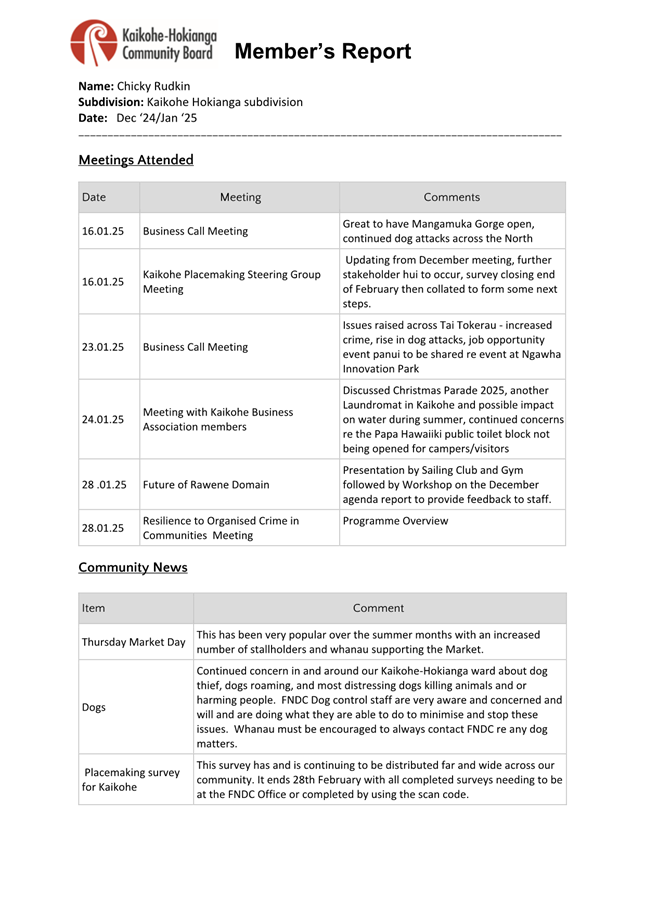
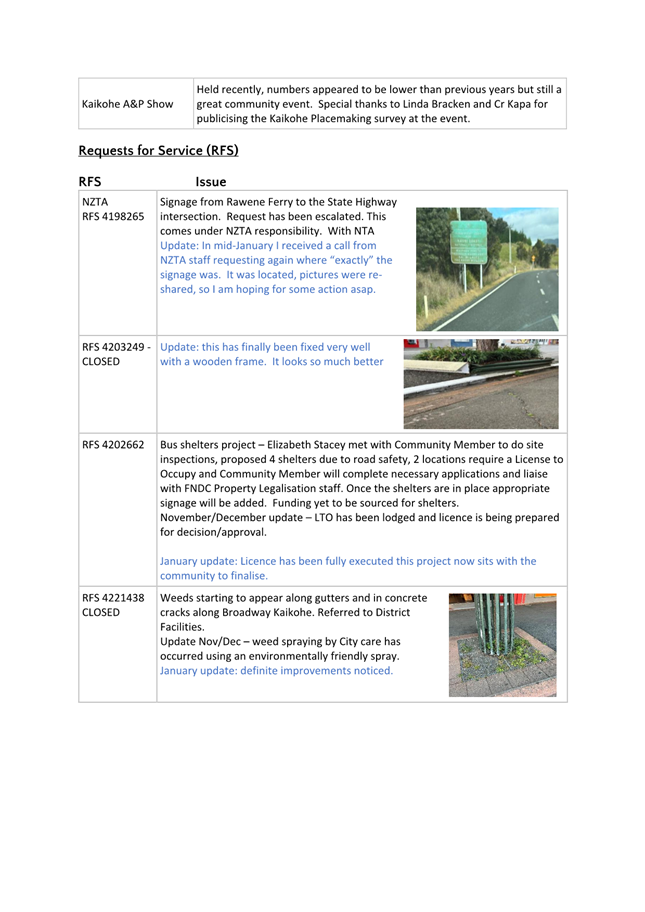

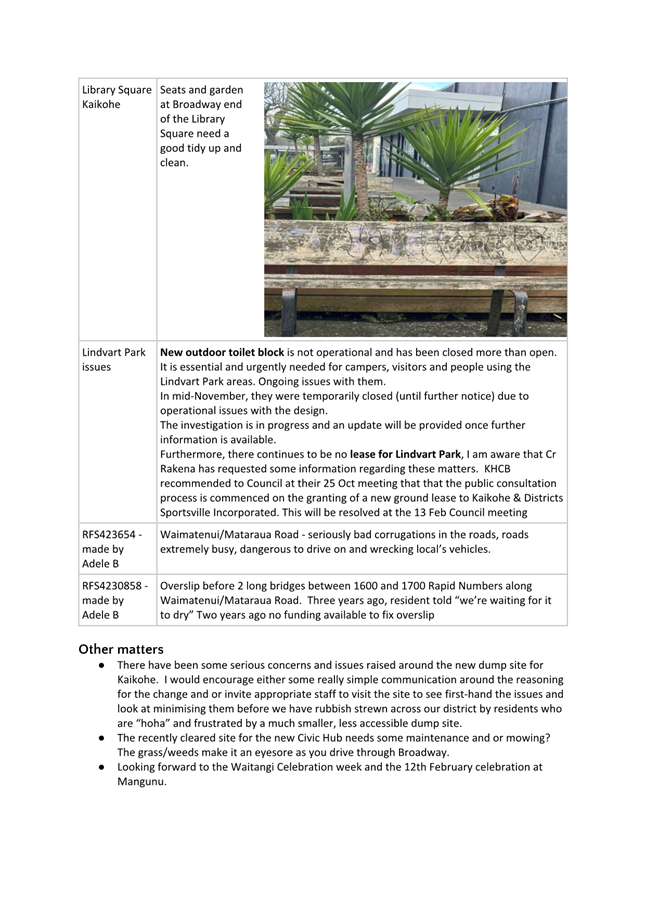
|
Kaikohe-Hokianga
Community Board Meeting Agenda
|
21 February
2025
|
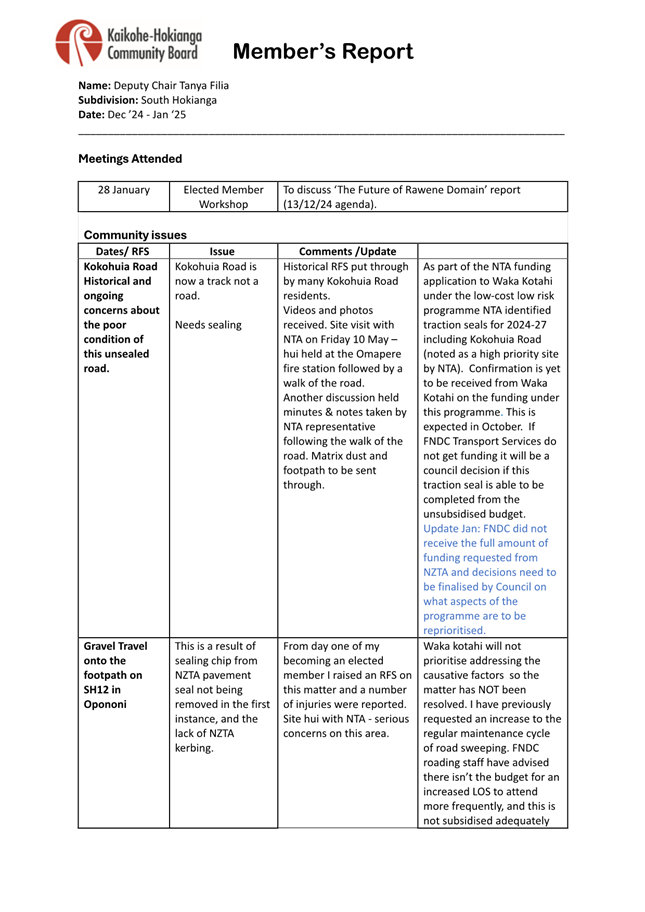
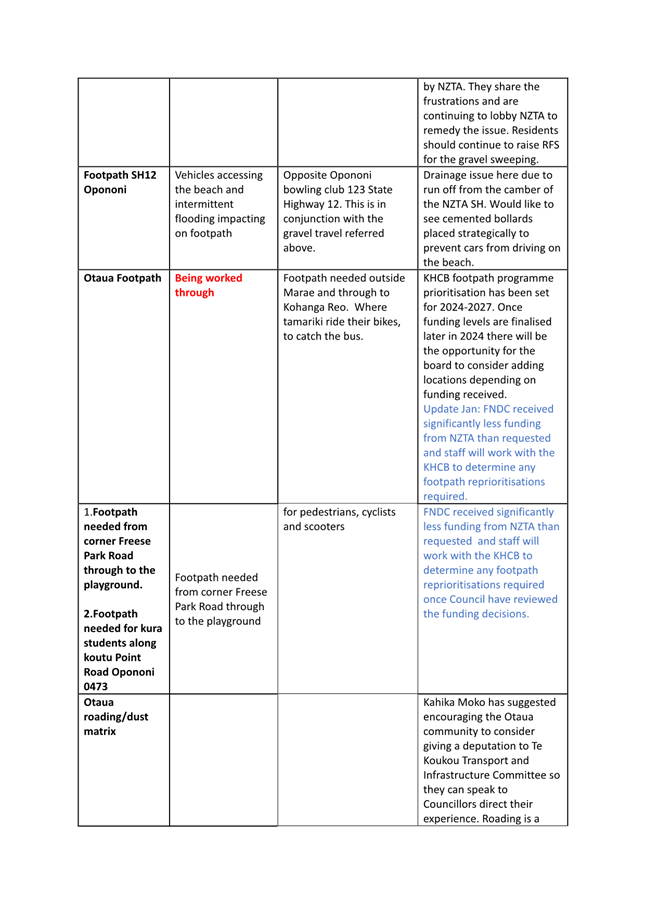
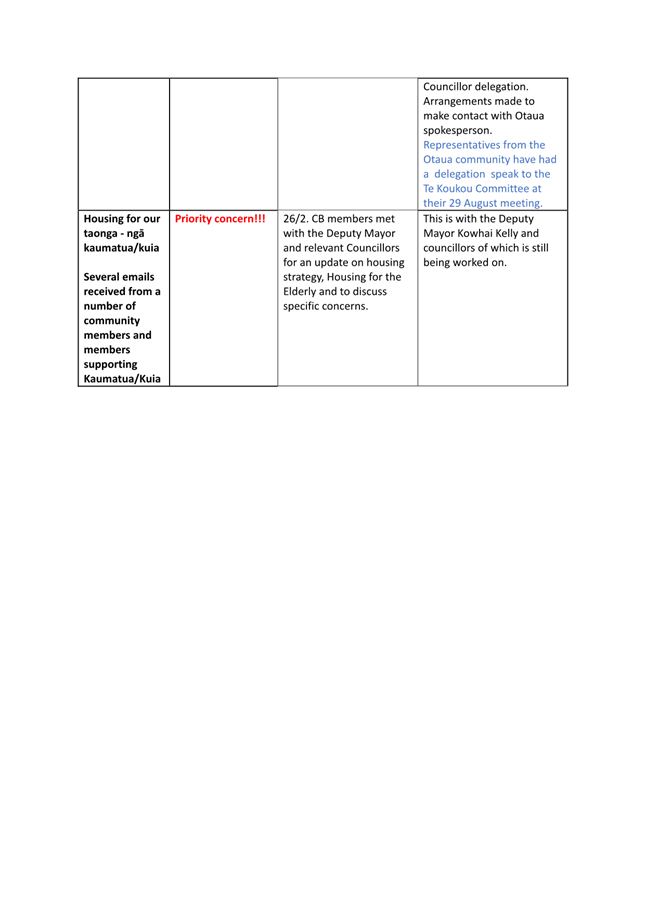
8 Ngā
Pūrongo Taipitopito / Information Reports
8.1 Kohukohu
Speed Limits Update
File
Number: A4998427
Author: Elizabeth
Stacey, Senior Road Safety and Traffic Engineer
Authoriser: Tanya
Proctor, Head of Infrastructure
TAKE
PŪRONGO / Purpose of the Report
The purpose of this
report is to update the Kaikohe-Hokianga Community Board about the process for
changing speed limits in Kohukohu.
WHAKARĀPOPOTO
MATUA / Executive SummarY
At the May 2024
Kaikohe-Hokianga Community Board meeting the Board recommended a variation to
the North Hokianga Interim Speed Management Plan to change the speed limit on
Kohukohu Road to a permanent 30kph. Since that time, the speed limit
rules have changed and 30kph is no longer an available permanent speed limit
for Kohukohu Road.
|
TŪTOHUNGA
/ Recommendation
That the Kaikohe-Hokianga Community Board receive the
report Kohukohu Speed Limits Update.
|
tĀHUHU KŌRERO
/ Background
Staff were approached by
members of the Kohukohu community to find solutions to the number of speed
signs in Kohukohu and to look for opportunities to improve road safety.
The Community Board recommended and Council approved consultation on a lower
speed limit of 30kph throughout the village of Kohukohu.
Since council approval
the 2024 Speed Limits Rule was consulted on and subsequently adopted in October
2024. Under the new Rule, 30 kph permanent speed limits are not
approved. All schools in the District will also be required to be signed
with variable speed limits rather than permanent speeds.
The new Rule also
requires local streets, that have a permanent speed of 30kph and one of the
reasons was the presence of a school to also be reversed no later than July
2025.
MATAPAKI ME NGĀ
KŌWHIRINGA / Discussion and Next Steps
The 30kph school speeds
in Kohukohu are subject to reversal under the new Setting of Speed Limits
rule. As such, staff have not progressed the consultation and changes
requested by the Community Board.
During the changes that
are required under the new Rule, staff will be sensitive to Kohukohu’s
status as a Heritage Precinct and reduce the number of signs to the minimum
required to make the speed limit both legal and enforceable. This will result
in the removal of “gated” signage. This approach was presented to
the Board previously as another option to improve the historic look and feel of
the village by removing extra signage.
PĀNGA PŪTEA
ME NGĀ WĀHANGA TAHUA / Financial Implications and Budgetary Provision
Changes to speed limits
is an activity that is eligible for funding from NZTA Waka Kotahi. Staff
will be requesting funding subsidy for these changes.
Āpitihanga / Attachments
Nil
8.2 Condition
Assessment Summary for Council Halls
File
Number: A4990097
Author: Katie
May, Asset Manager District Facilities
Authoriser: Tanya
Proctor, Head of Infrastructure
TAKE PŪRONGO / Purpose of the Report
To provide information to
the Kaikohe-Hokianga Community Board from the condition assessments carried out
on Council halls.
WHAKARĀPOPOTO MATUA / Executive SummarY
· In
2021 condition assessments were carried out on council owned halls
· The
attached matrix provides a summary of these findings and shows work underway as
well as prioritisation of work needed
|
TŪTOHUNGA
/ Recommendation
That the Kaikohe-Hokianga Community Board receive the
report Condition Assessment Summary for Council Halls.
|
tĀHUHU KŌRERO / Background
Asset Management applied for and were approved funding to
undertake condition assessments to determine the state of council assets in
2020. This work had not previously been undertaken for several years.
The condition assessment programme of work was completed in
2021 and condition “Matrix” listings were compiled based off the
assessment findings. The matrix data sets sought to;
· Capture high level
details of overall condition and issues identified
· Assign a priority
grade of 1-3 (1 being higher in priority) of work to be addressed
· Assign RAG (Red,
Amber, Green) status based on both the condition and also the accessibility
status of each hall.
The condition assessment findings sorted and graded into
this matrix format has allowed Asset Management to programme works based on
priority of need.
The Lite LTP has meant our focus has been on those halls
with a more urgent status, particularly those with major structural or health
and safety issues. Programming of lower priority status halls has been deferred
at this time to be worked through and timed for our next LTP in 2027.
MATAPAKI ME NGĀ KŌWHIRINGA /
Discussion and Next Steps
Condition assessments are due to be repeated on a five-year
rolling programme. However, condition of our assets is continuously monitored
and if the priority changes due to an event affecting condition or unexpected
decline of an asset, then the hall will be reprioritised and programmed
accordingly.
This report shows the existing budgets for active planned
work. It does not include any future budgets as they are yet to be determined
as part of the next LTP planning, however an indicative date for work has been
provided.
Staff will utilise this matrix and information provided by
our operations team to determine future works and continue to develop a
programme accordingly.
PĀNGA PŪTEA ME NGĀ WĀHANGA
TAHUA / Financial Implications and Budgetary Provision
There are no current financial implications from the
provision of this information report.
Āpitihanga
/ Attachments
1. Halls
Condition Assessment Matrix - Community Boards December 2024 - A4989895 ⇩ 
|
Kaikohe-Hokianga
Community Board Meeting Agenda
|
21 February
2025
|

8.3 Hokianga
Ferry Liaison Group Meeting 1st November 2024
File
Number: A5006026
Author: Aaron
Reilly, Operations Specialist Lighting & Transport
Authoriser: Apikali
Rokobigi, Maintenance Lead
TAKE PŪRONGO / Purpose of the Report
The purpose
of the information report is to inform the Kaikohe – Hokianga Community
Board of the meeting that was held with the Hokianga Ferry Liaison Group on 1st
November 2024 and provide a copy of the draft minutes to the Board.
WHAKARĀPOPOTO MATUA / Executive SummarY
· The
Hokianga Ferry Liaison Group met on 1st November 2024 in the Rawene
and Districts Community Development (RAD) Centre in Rawene. A copy of the draft
minutes is attached.
· The
next meeting is scheduled for the 28th of February 2025 in Rawene
|
TŪTOHUNGA
/ Recommendation
That the Kaikohe-Hokianga Community Board receive the
report Hokianga Ferry Liaison Group Meeting 1st November 2024.
|
tĀHUHU KŌRERO / Background
The
Hokianga Ferry Liaison Group is made up of stakeholders who represent key
community interests in the Hokianga Ferry service. FNDC staff facilitate and
attend the meetings to provide information and administrative support to the
Group. Northland Ferries (the operator) also attend the meetings.
The Group
meet on a quarterly basis, or on request by mutual agreement.
A copy of
the draft meeting minutes held on 1st November 2024 is attached (refer
attachment 1).
MATAPAKI ME NGĀ KŌWHIRINGA /
Discussion and Next Steps
Community Board Member
Jessie McVeagh and Chair Chicky Rudkin attended the meeting to discuss
Community Board Member’s attendance at future meetings and Elected Member
representation of the Group.
The context of the
discussion is covered within the attached Minutes. In summary, it was agreed
that the Group would review and re-draft the Terms of Reference and send the
draft for comment to the CB Members for their comment.
The next Hokianga Ferry
Liaison Group is scheduled for the 28th of February 2025 and will be held in
Rawene and Districts Community Development Centre.
A copy of the minutes
will be provided to the Kaikohe-Hokianga Community Board meeting, together with
a covering Information Report.
PĀNGA PŪTEA ME NGĀ WĀHANGA
TAHUA / Financial Implications and Budgetary Provision
There are no financial
implications or budgetary provisions associated with this information report.
Āpitihanga
/ Attachments
1. Attachment
1 - Hokianga Ferry Liaison Group Meeting Minutes for 1st November 2024 -
A5030459 ⇩ 
|
Kaikohe-Hokianga
Community Board Meeting Agenda
|
21 February
2025
|

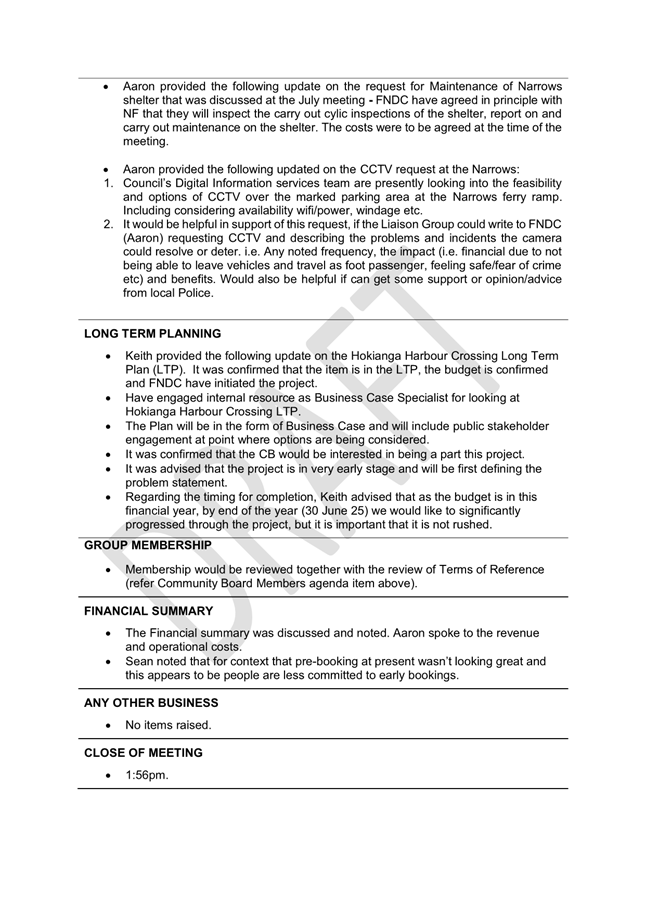

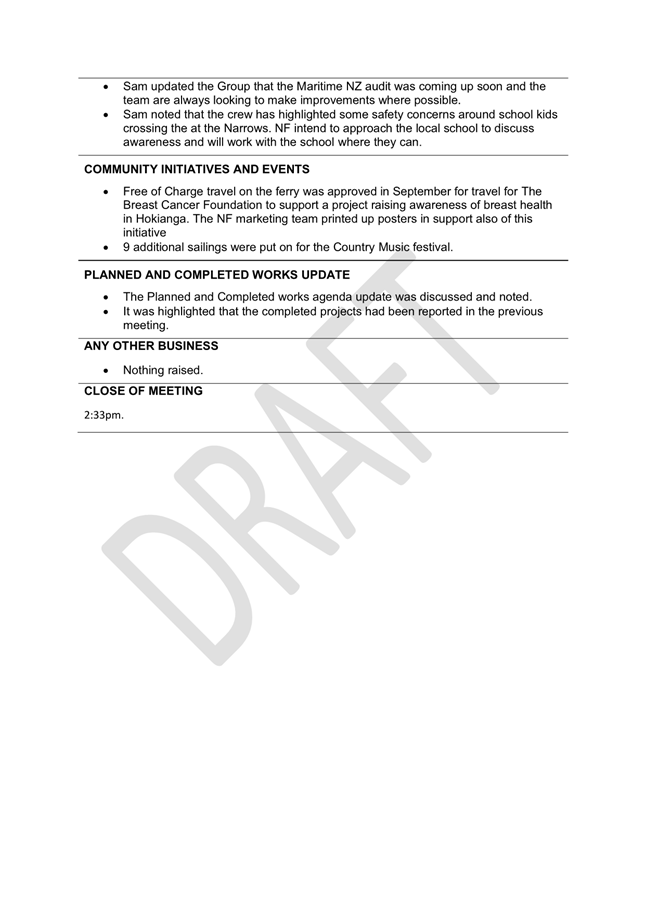
8.4 Kaikohe-Hokianga
Community Board February Open Resolution Report
File
Number: A4536189
Author: Imrie
Dunn, Democracy Advisor
Authoriser: Aisha
Huriwai, Manager - Democracy Services
TAKE PŪRONGO / Purpose of the Report
To provide the
Kaikohe-Hokianga Community Board with an overview of outstanding open
resolutions from decisions dated from 1 January 2020.
WHAKARĀPOPOTO MATUA / Executive SummarY
· Open resolutions are a mechanism to communicate progress against
decisions/resolutions.
· Open resolutions are also in place for all formal elected member
meetings.
· There are no open resolution items for the Kaikohe-Hokianga
Community Board this month.
|
TŪTOHUNGA
/ Recommendation
That the Kaikohe-Hokianga Community Board receive the
report Kaikohe-Hokianga Community Board February Open Resolution Report.
|
tĀHUHU KŌRERO / Background
Any resolution or decision from a meeting is compiled on an
open resolution status report, to capture actions trigged by Board decisions.
Staff provide updates on progress against tasks that are not yet completed.
MATAPAKI ME NGĀ KŌWHIRINGA /
Discussion and Next Steps
Community Board coordinators assist in following up
outstanding open resolutions with staff where appropriate, and occasionally,
may be in a position to provide a further verbal update at meetings following
the printing of an agenda.
The outstanding tasks are often multi-facet projects that
take longer to fully complete.
Where a decision differs to the recommendation of staff
there may be unintended consequences or challenges that take longer for staff
to work through.
PĀNGA PŪTEA ME NGĀ WĀHANGA
TAHUA / Financial Implications and Budgetary Provision
There are no financial
implications or need for budgetary provision in receiving this report.
Āpitihanga
/ Attachments
1. Open
Resolution Report - A5068372 ⇩ 
|
Kaikohe-Hokianga
Community Board Meeting Agenda
|
21 February
2025
|
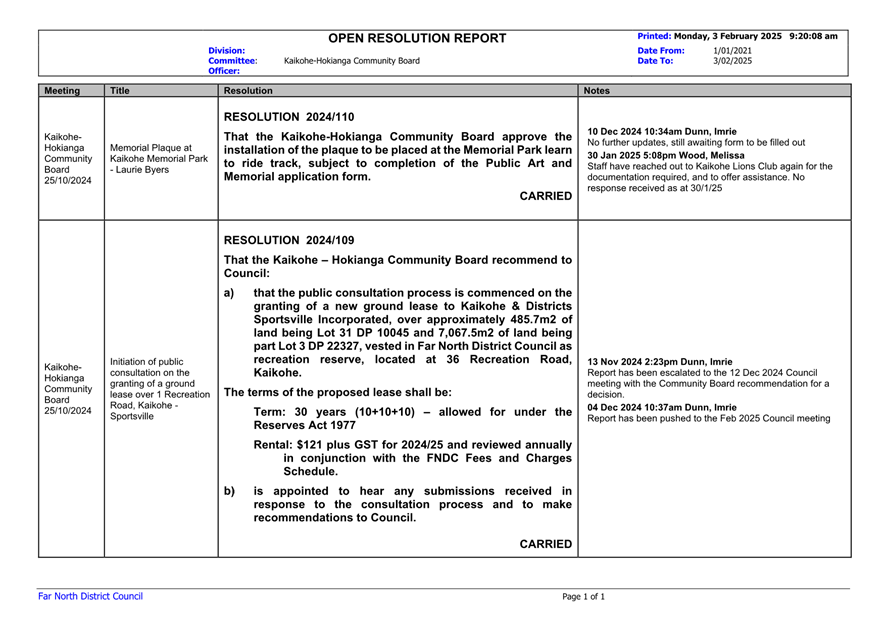
|
Kaikohe-Hokianga
Community Board Meeting Agenda
|
21 February
2025
|
9 Te
Wāhanga Tūmataiti / Public Excluded
RESOLUTION TO
EXCLUDE THE PUBLIC
|
Recommendation
That the public be excluded from the following parts of
the proceedings of this meeting.
The general subject matter of each matter to be considered
while the public is excluded, the reason for passing this resolution in
relation to each matter, and the specific grounds under section 48 of the
Local Government Official Information and Meetings Act 1987 for the passing
of this resolution are as follows:
|
General subject of each matter to be considered
|
Reason for passing this resolution in
relation to each matter
|
Ground(s) under section 48 for the
passing of this resolution
|
|
9.1 - Removal and Appointment of
Cemetery Trustees - Waiotemarama Cemetery
|
s7(2)(a) - the withholding of the information is
necessary to protect the privacy of natural persons, including that of
deceased natural persons
|
s48(1)(a)(i) - the public conduct of the relevant
part of the proceedings of the meeting would be likely to result in the
disclosure of information for which good reason for withholding would exist
under section 6 or section 7
|
|








































